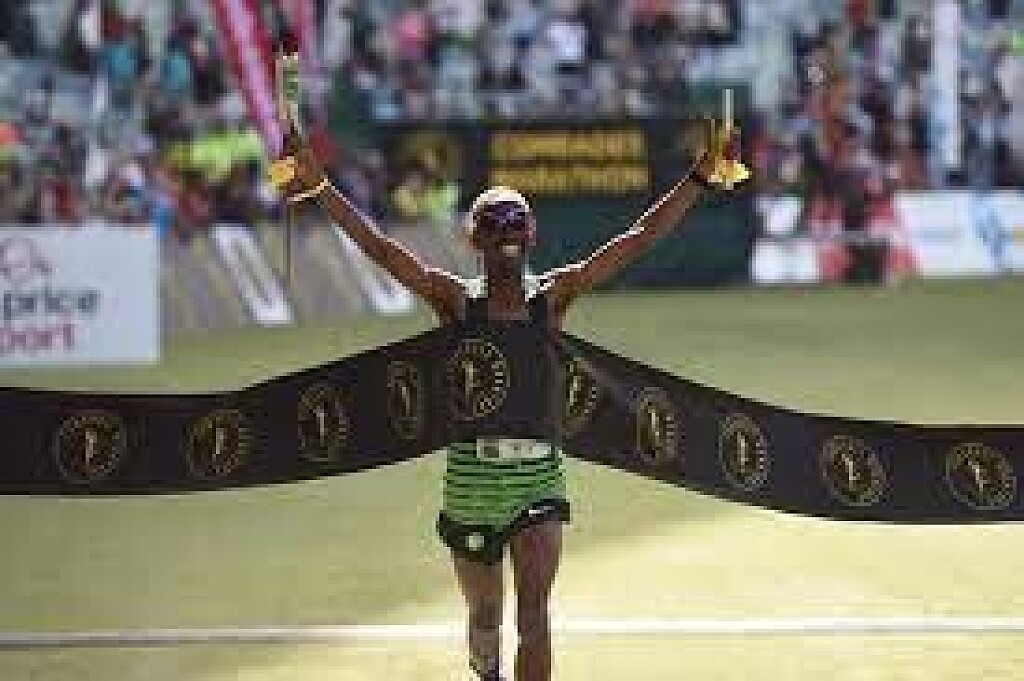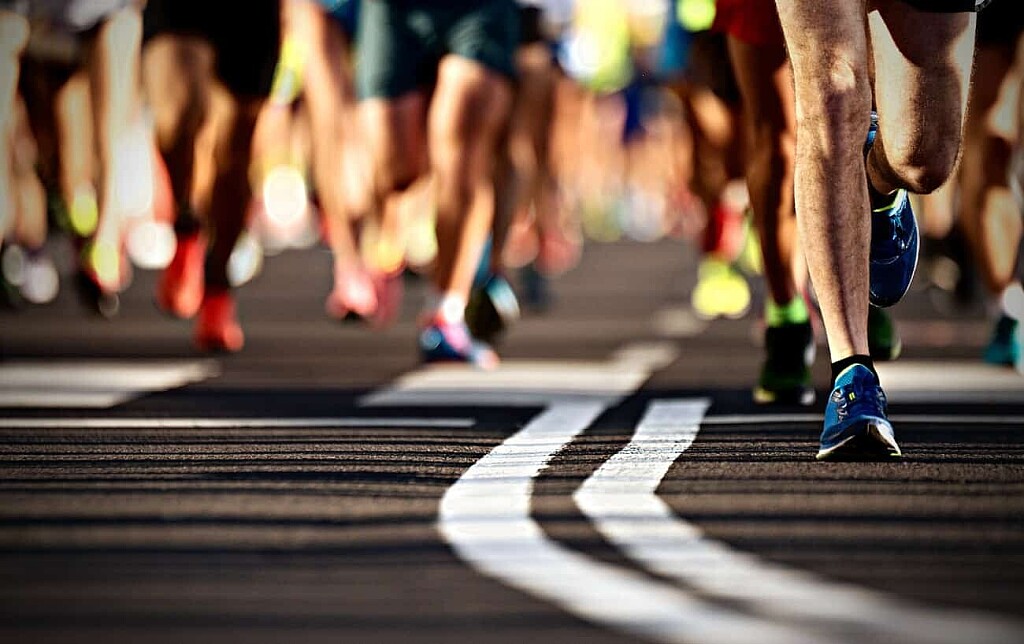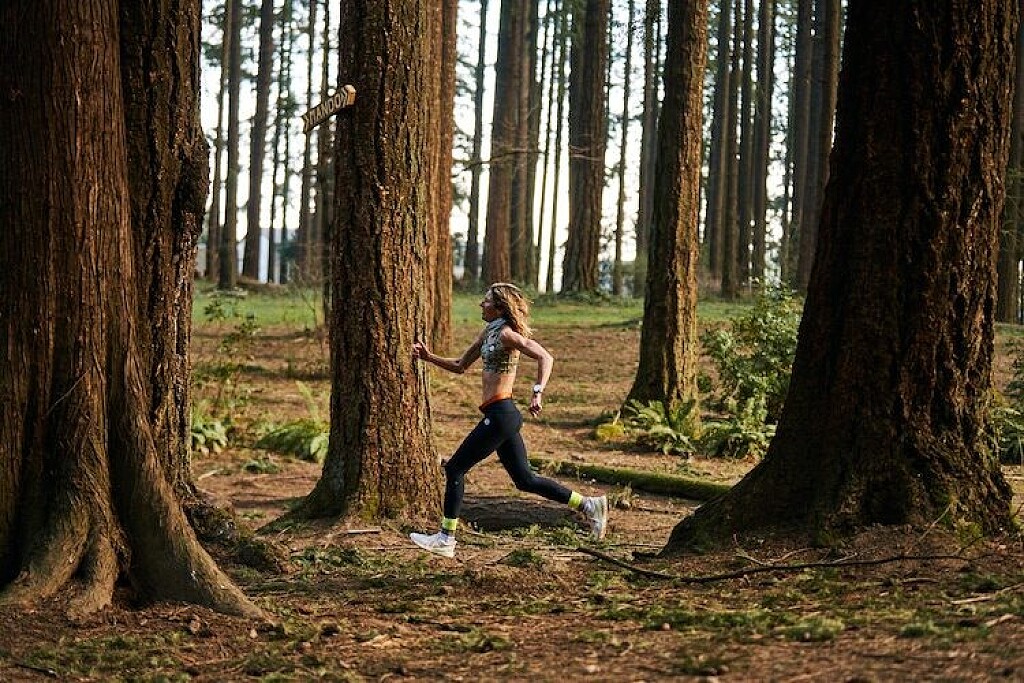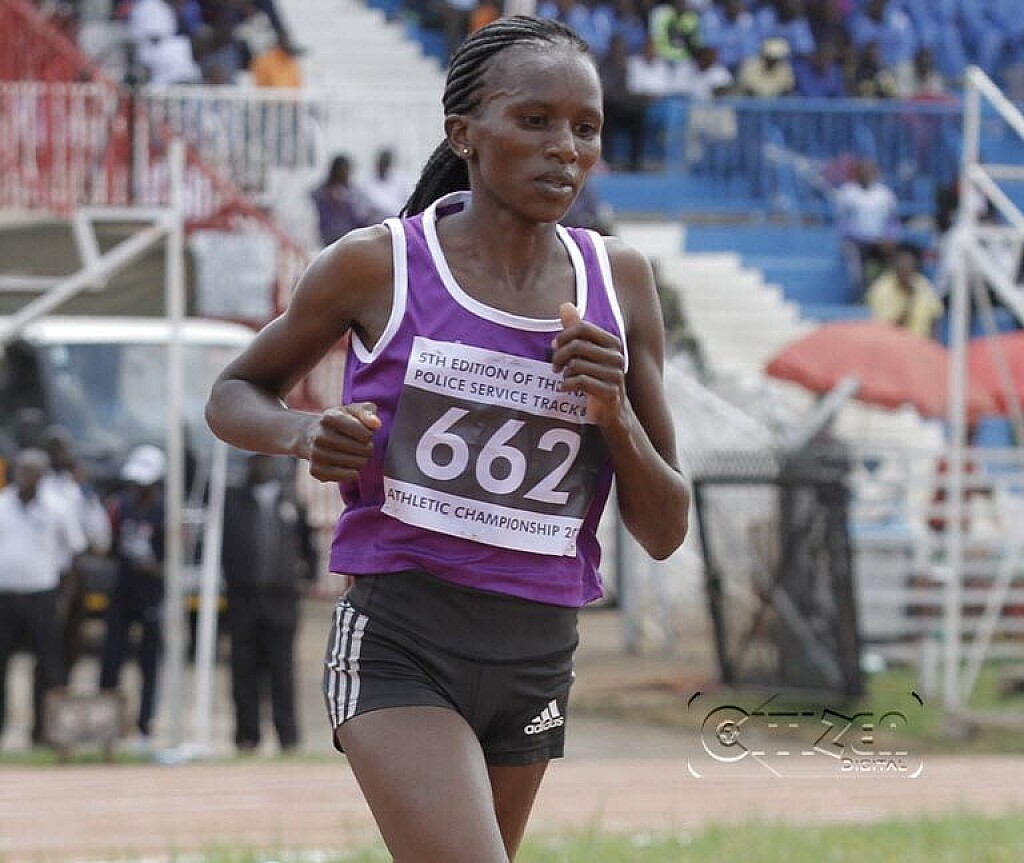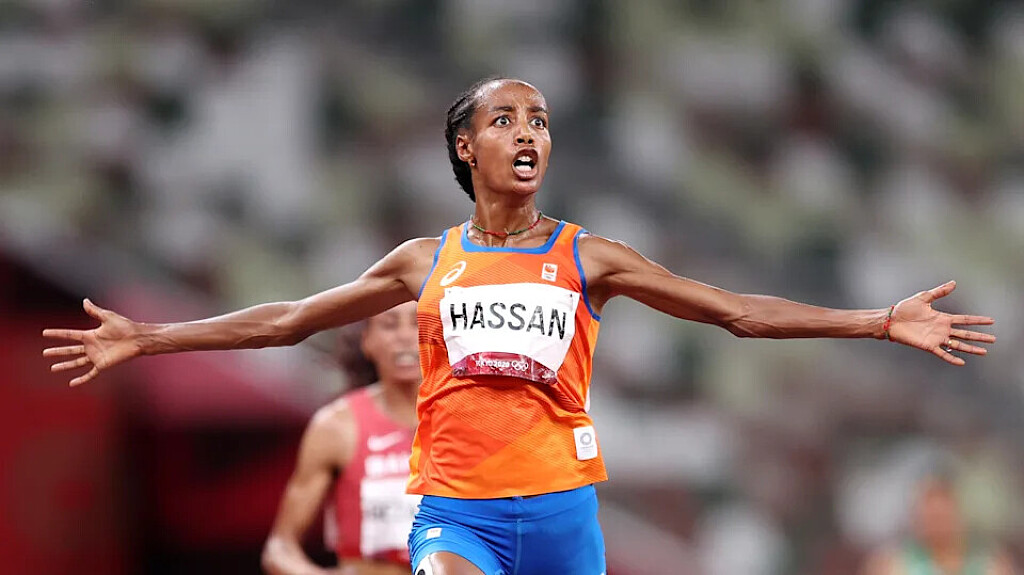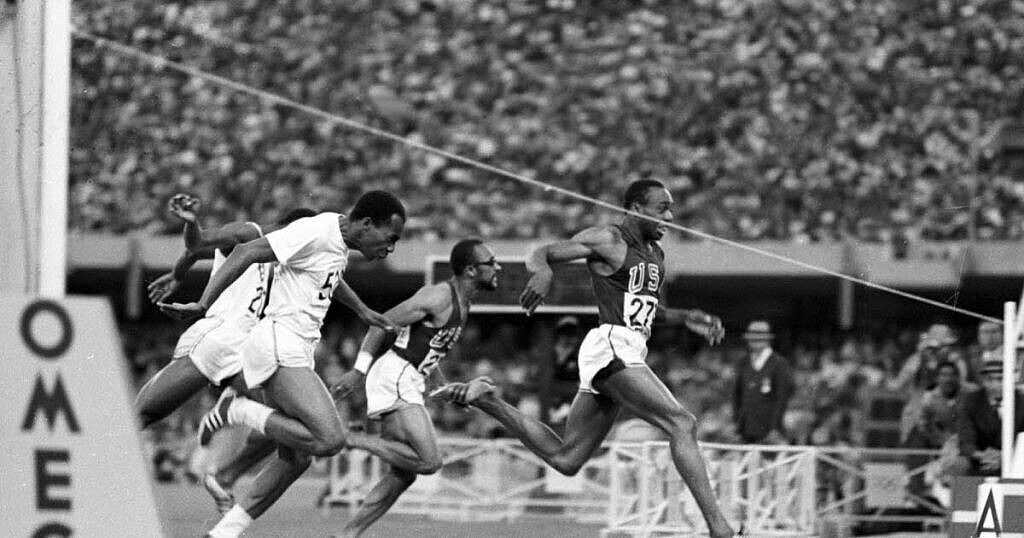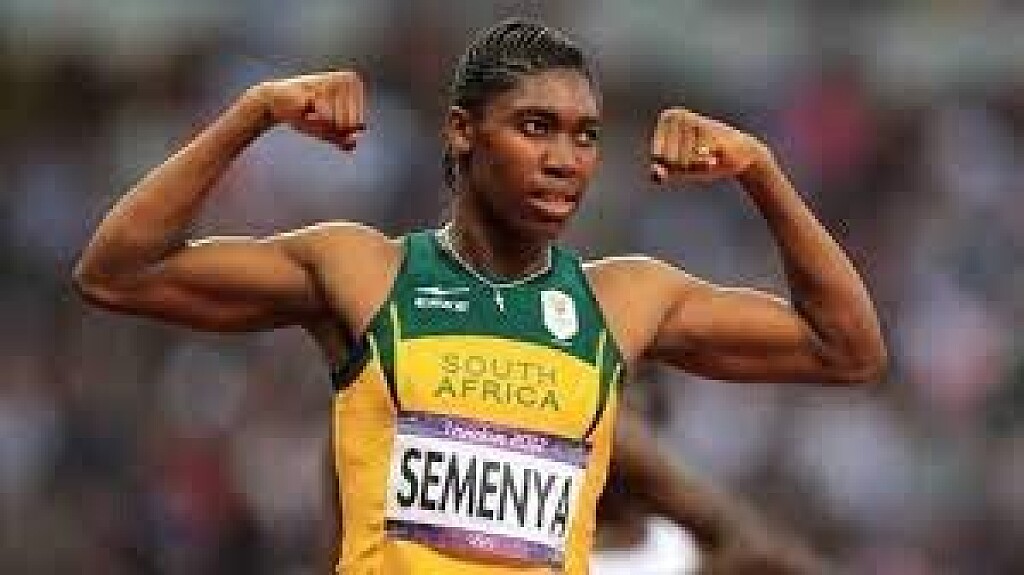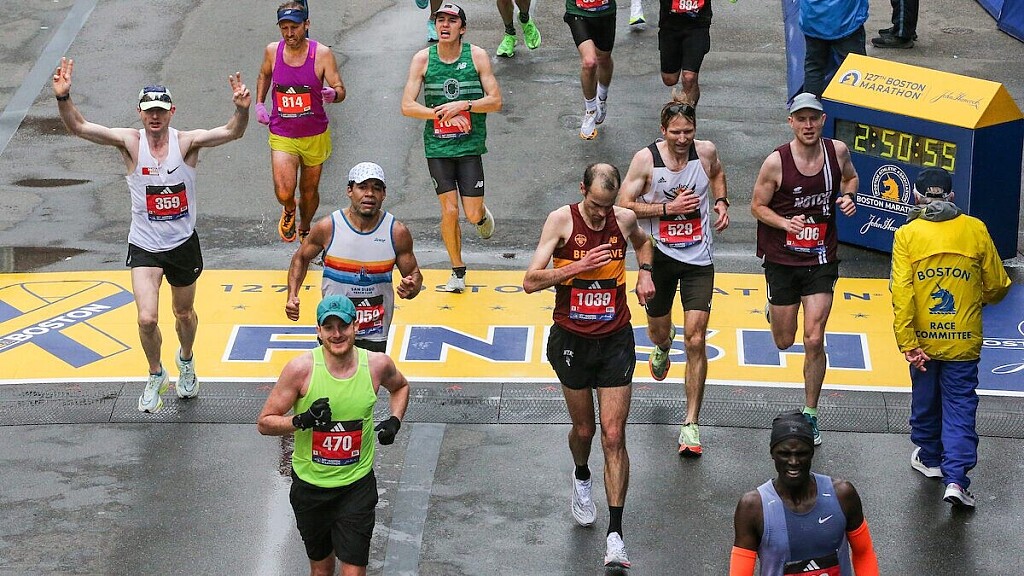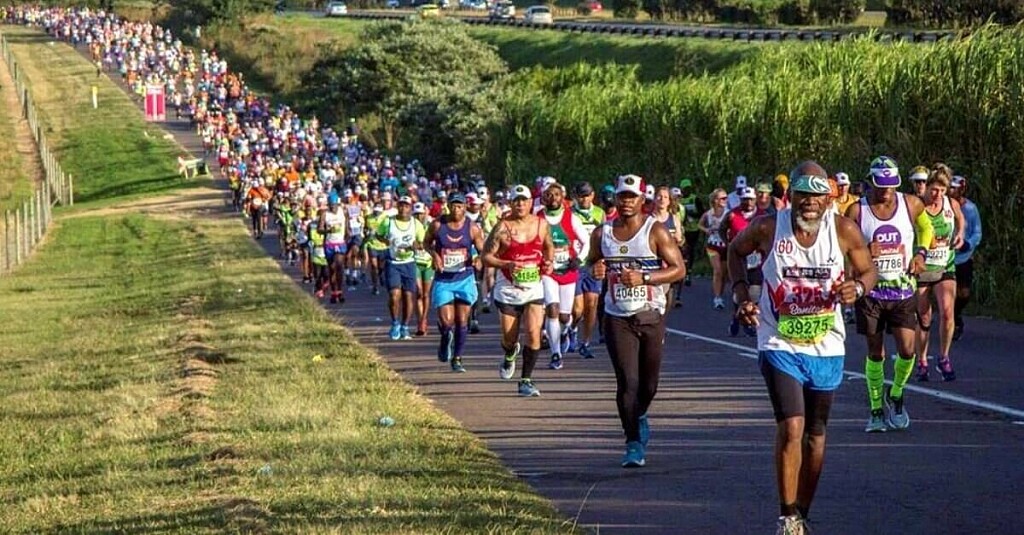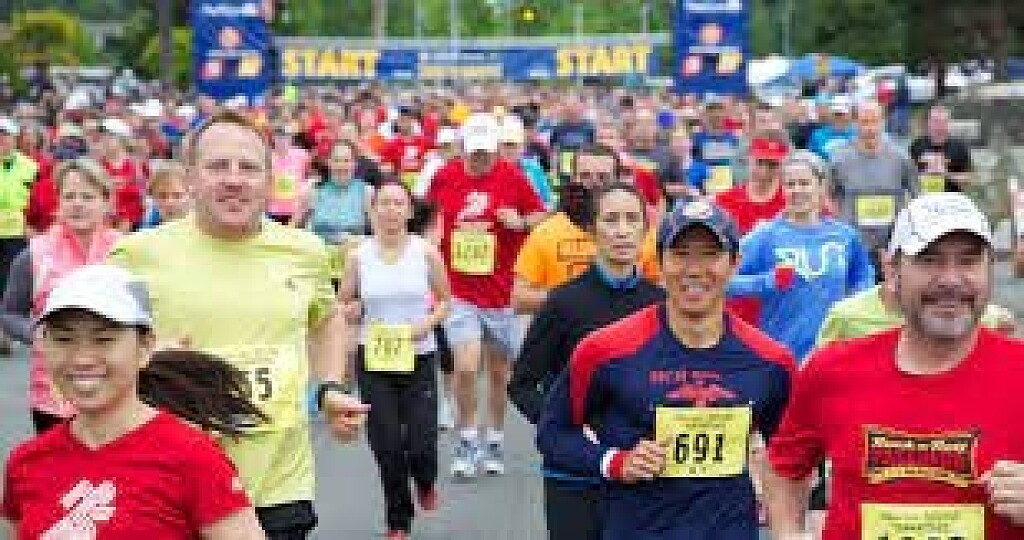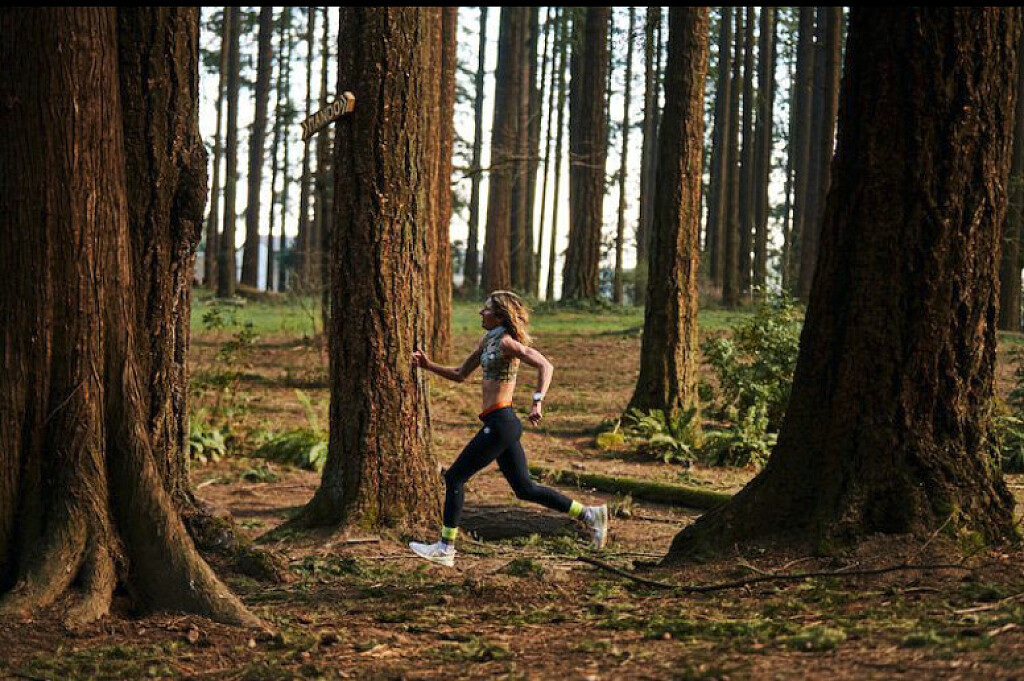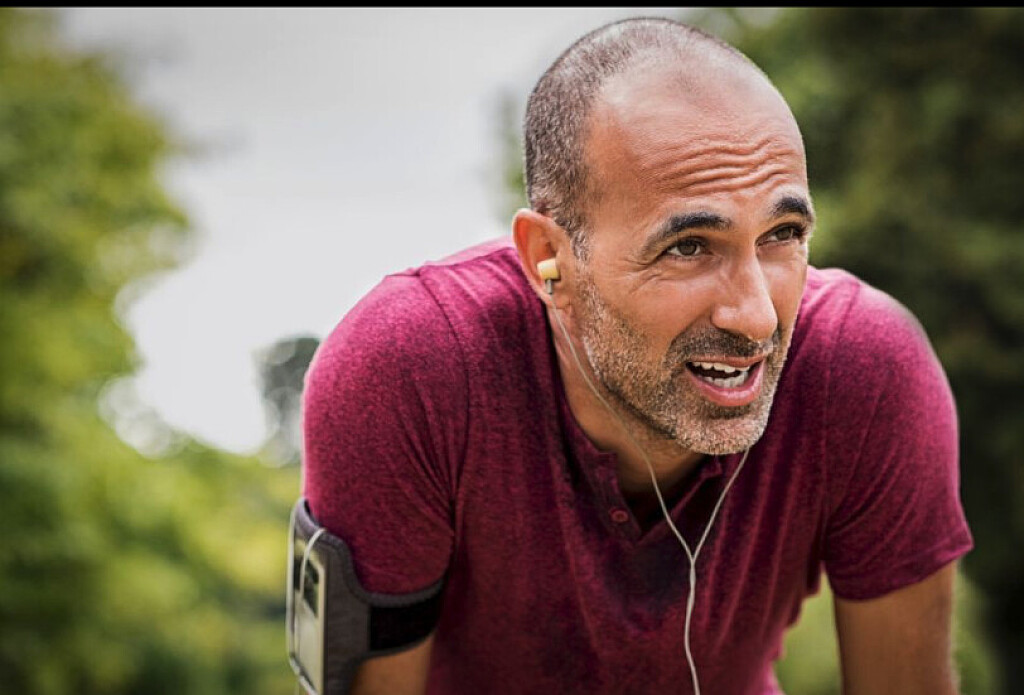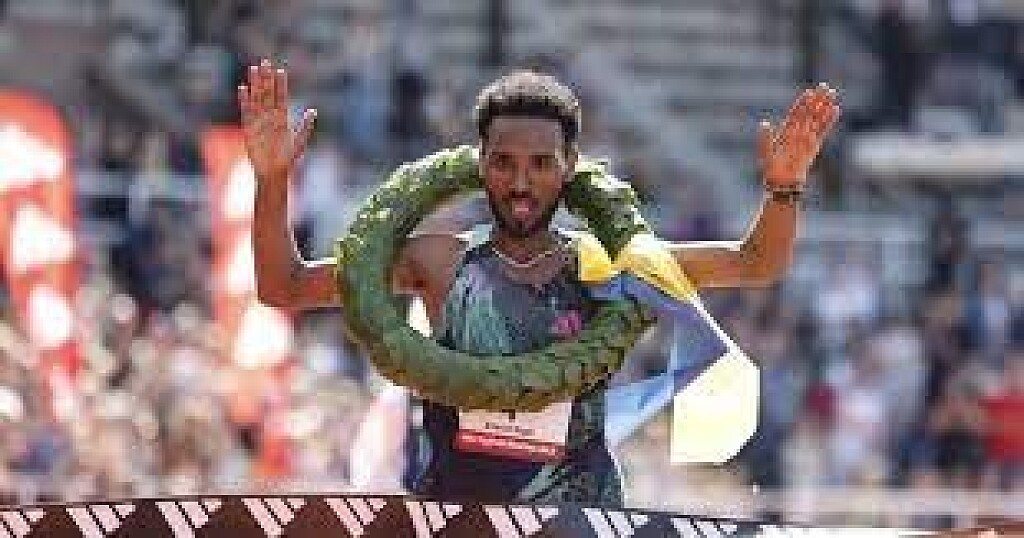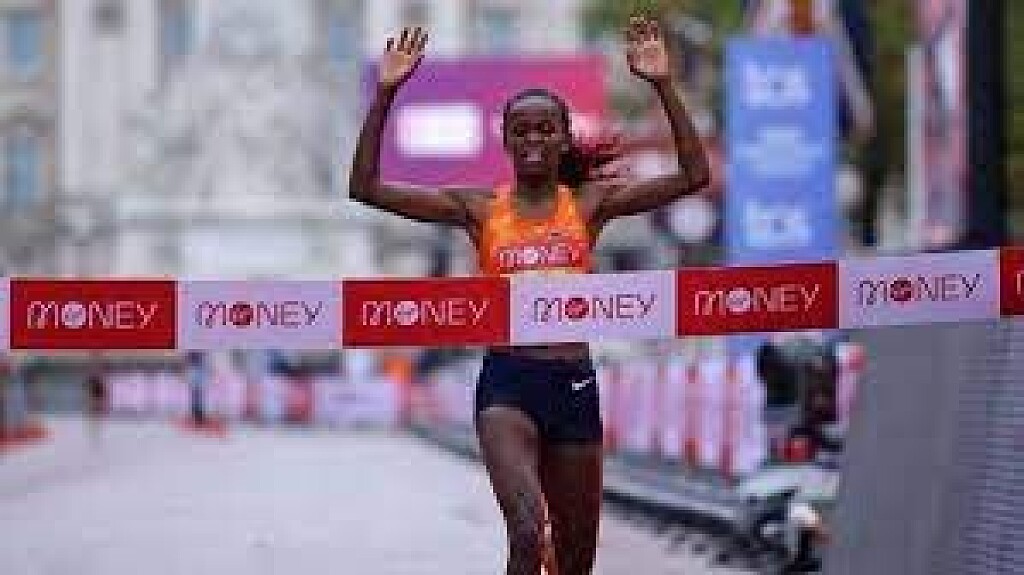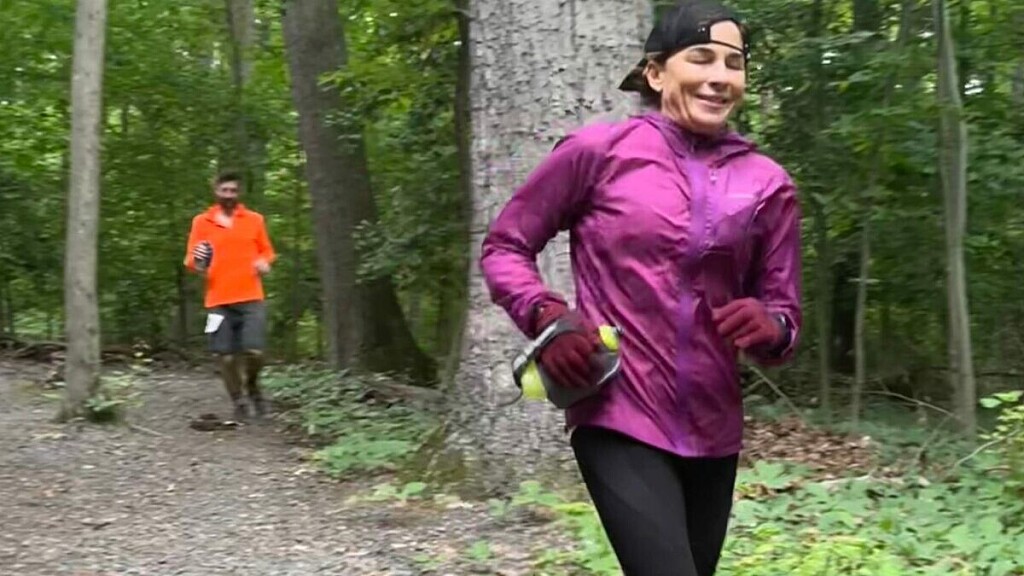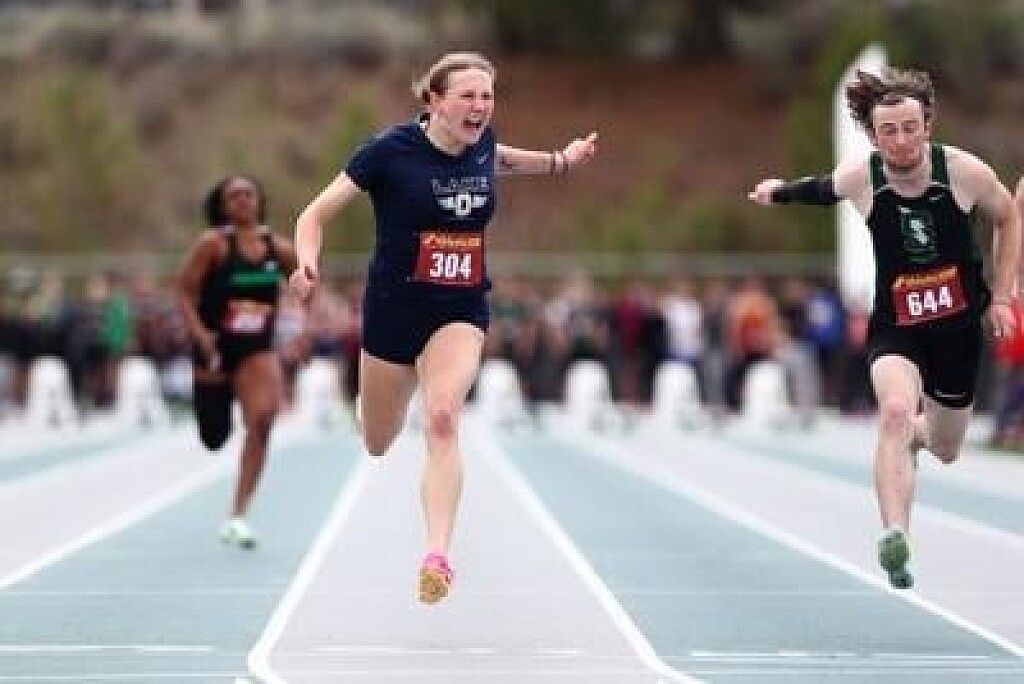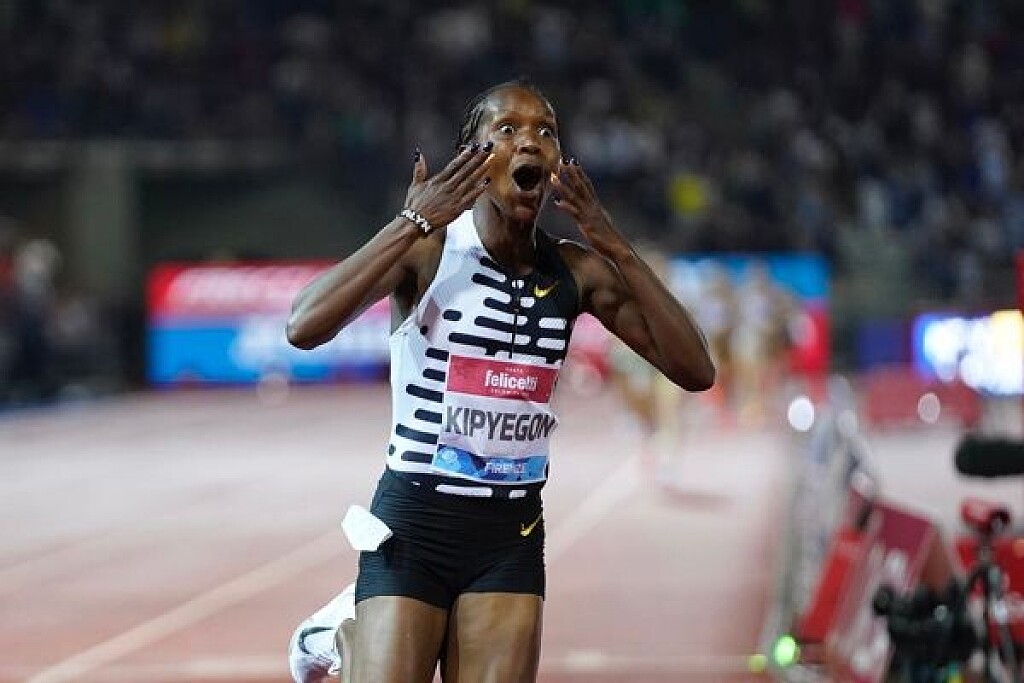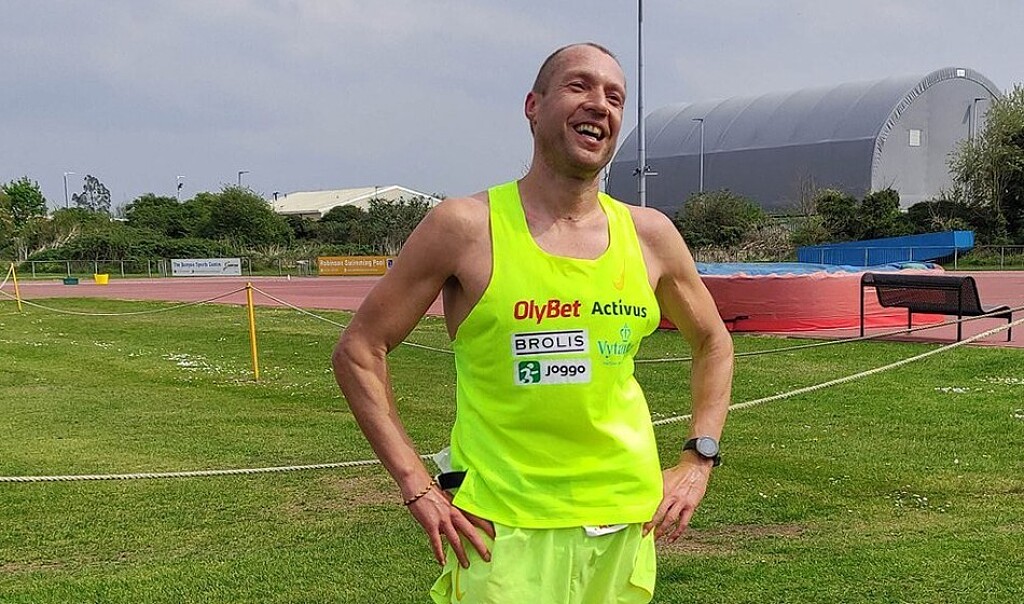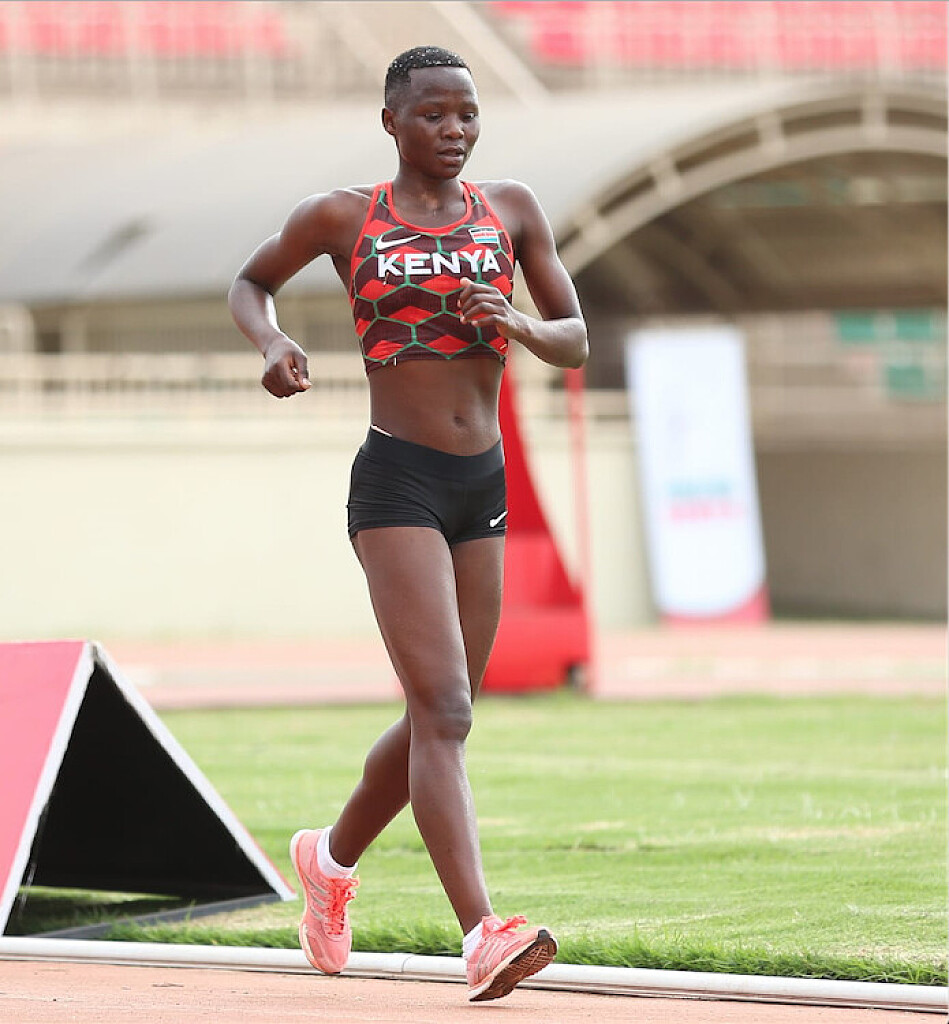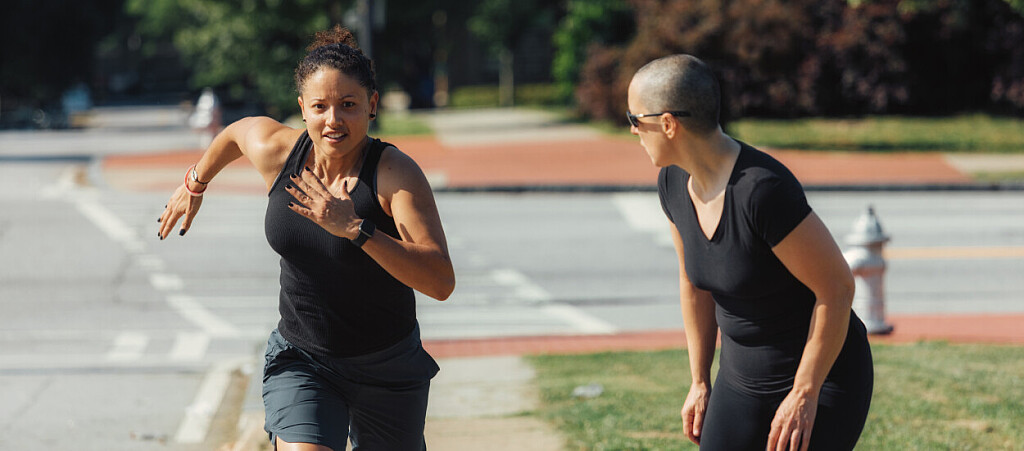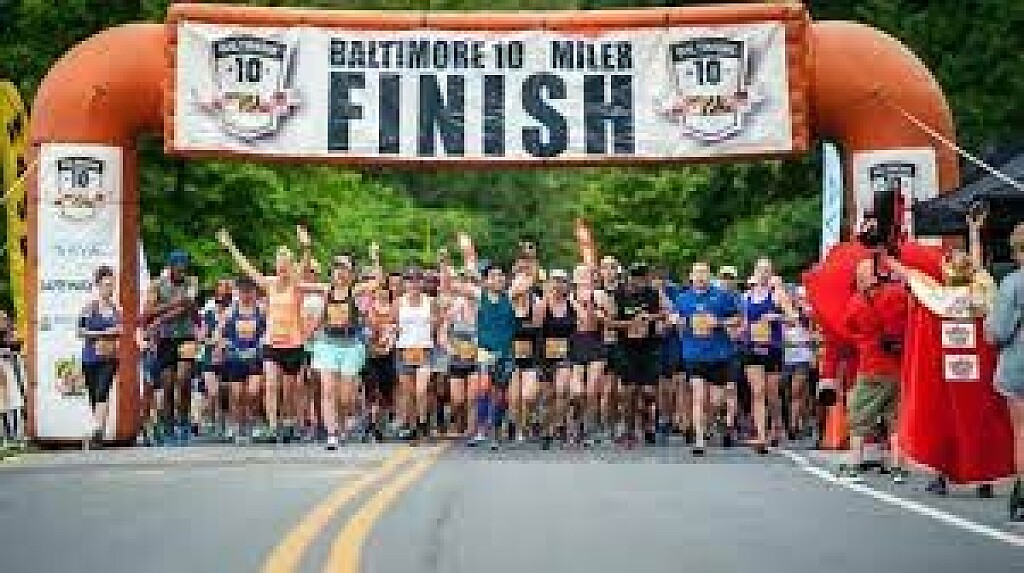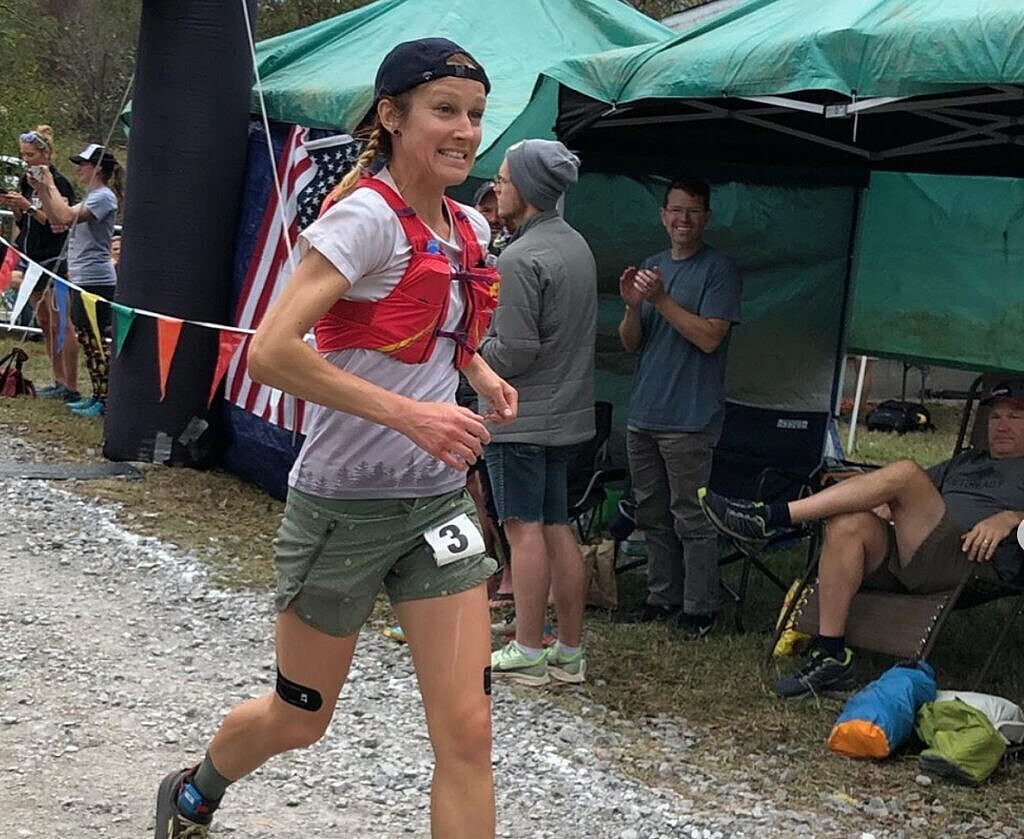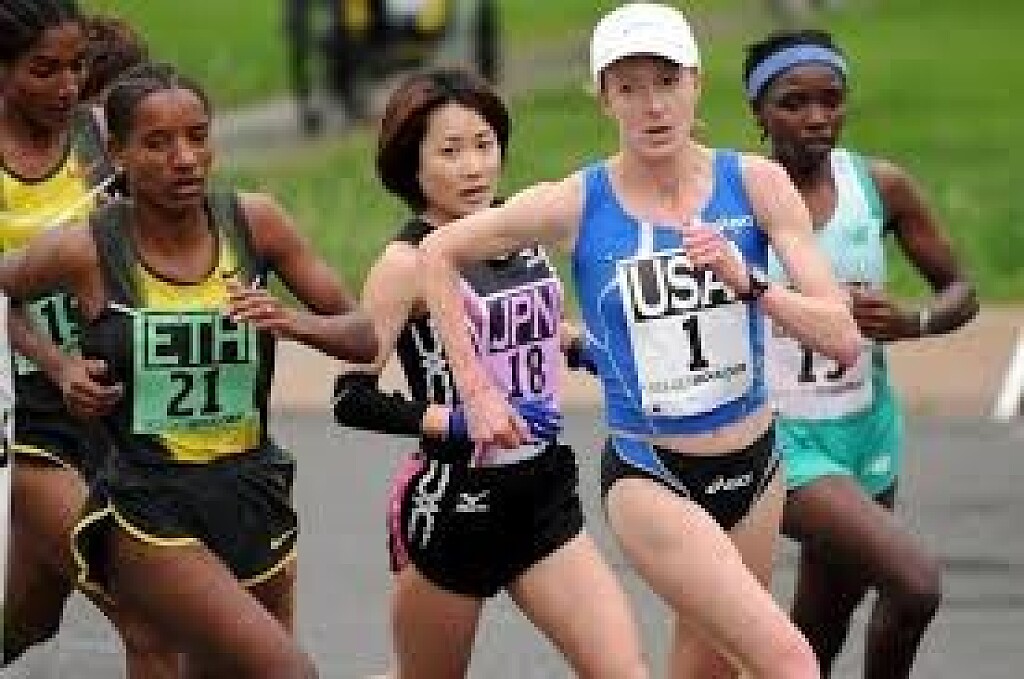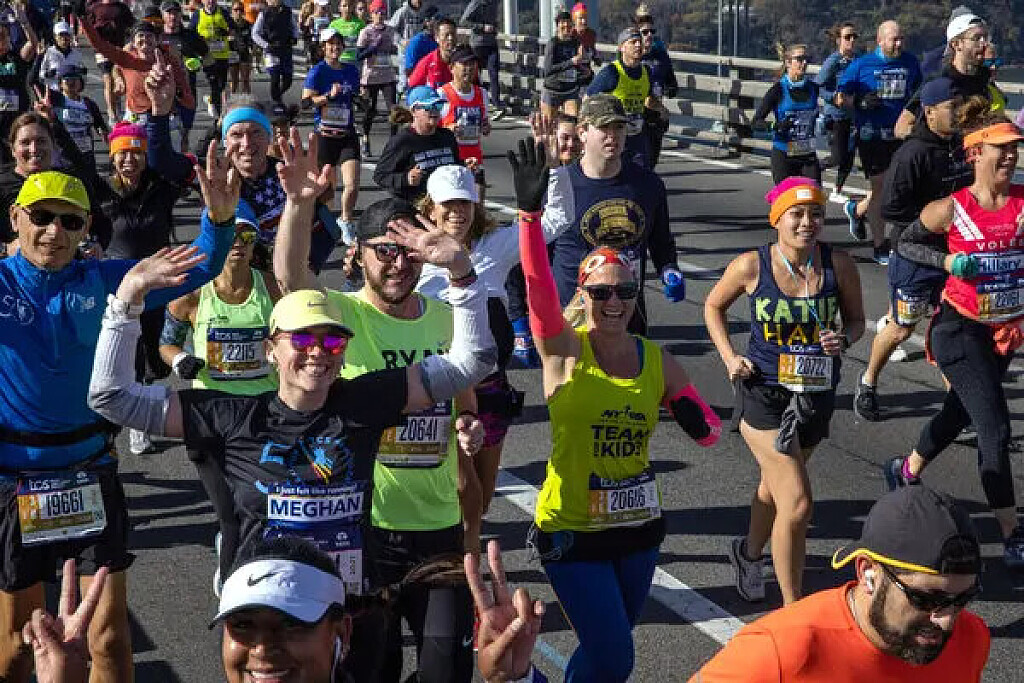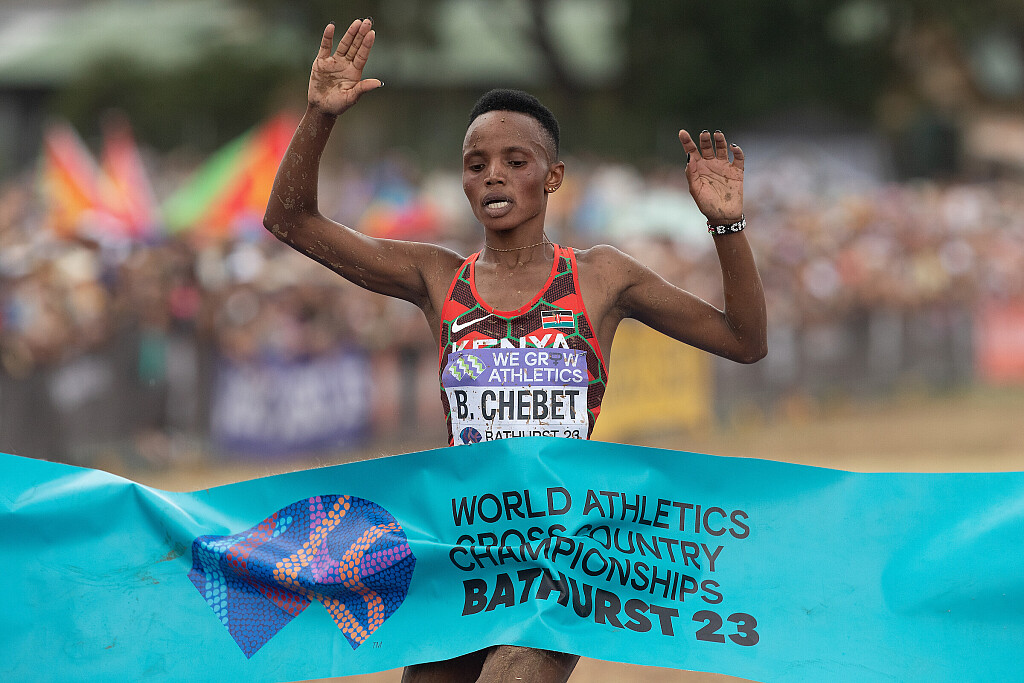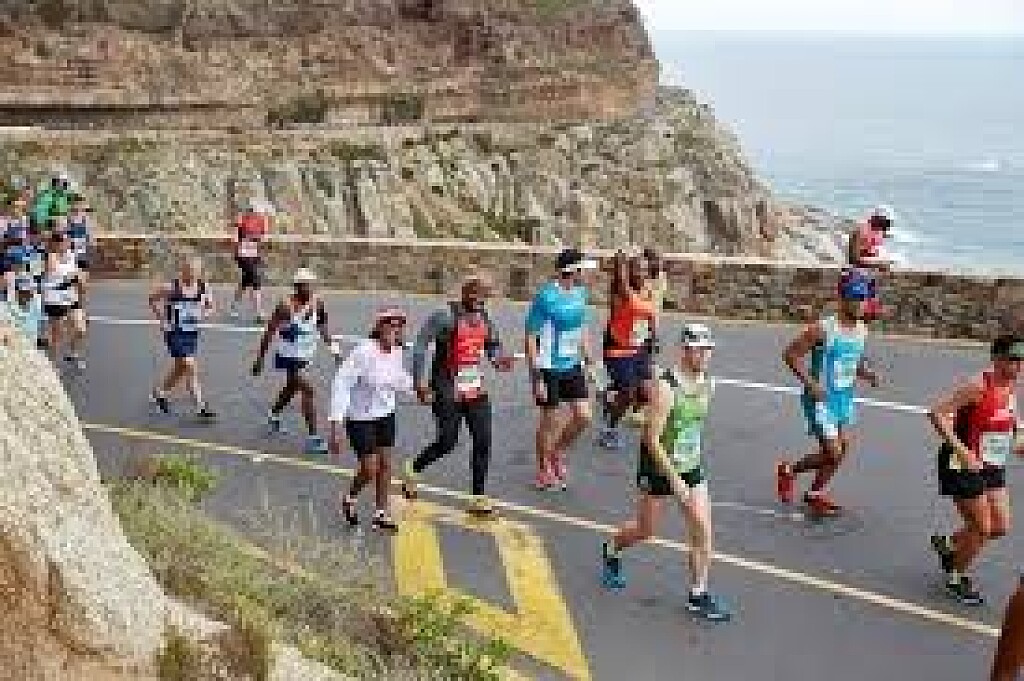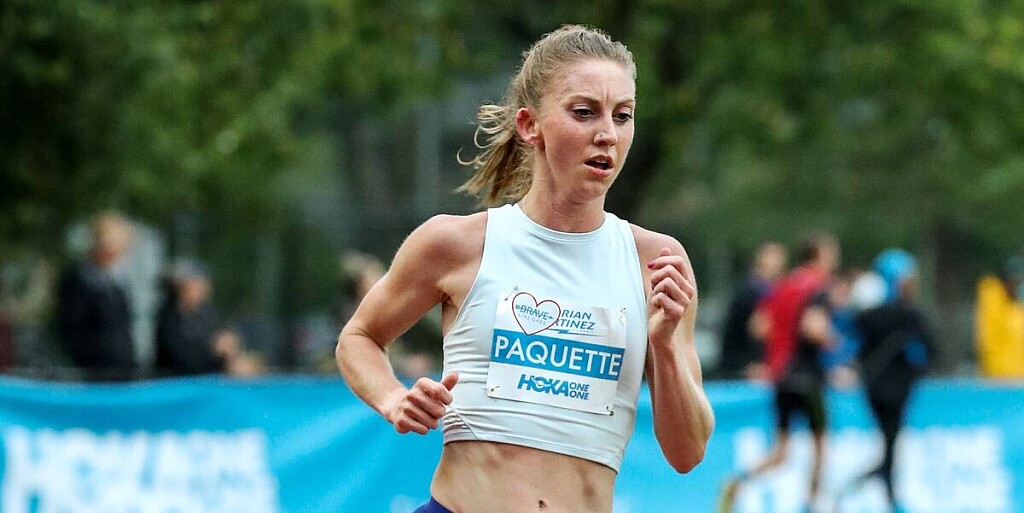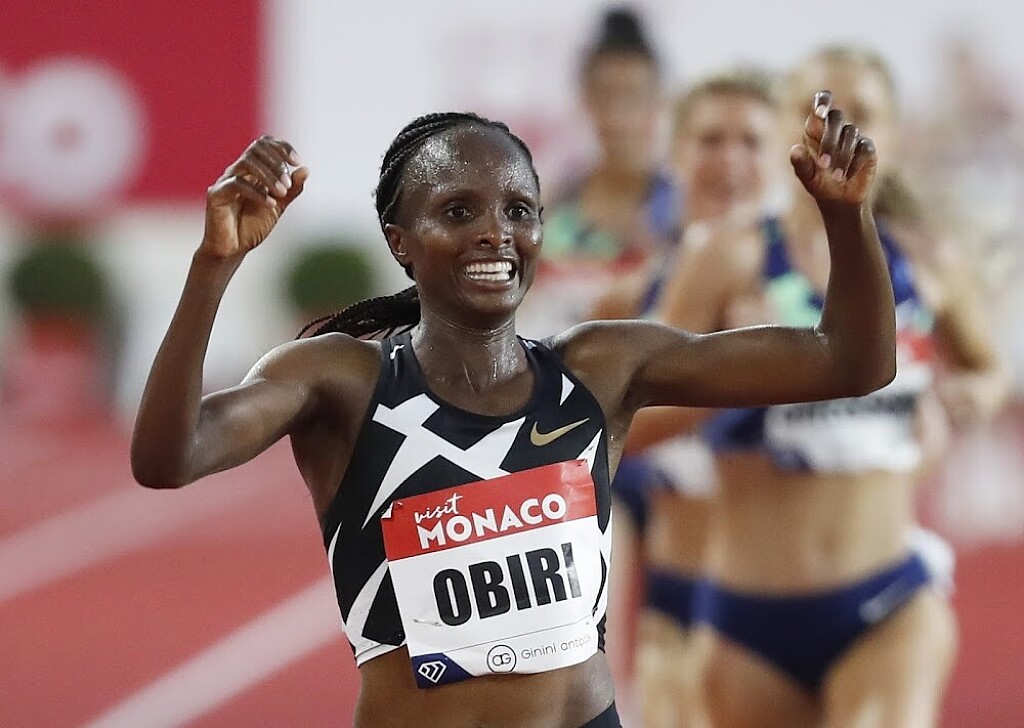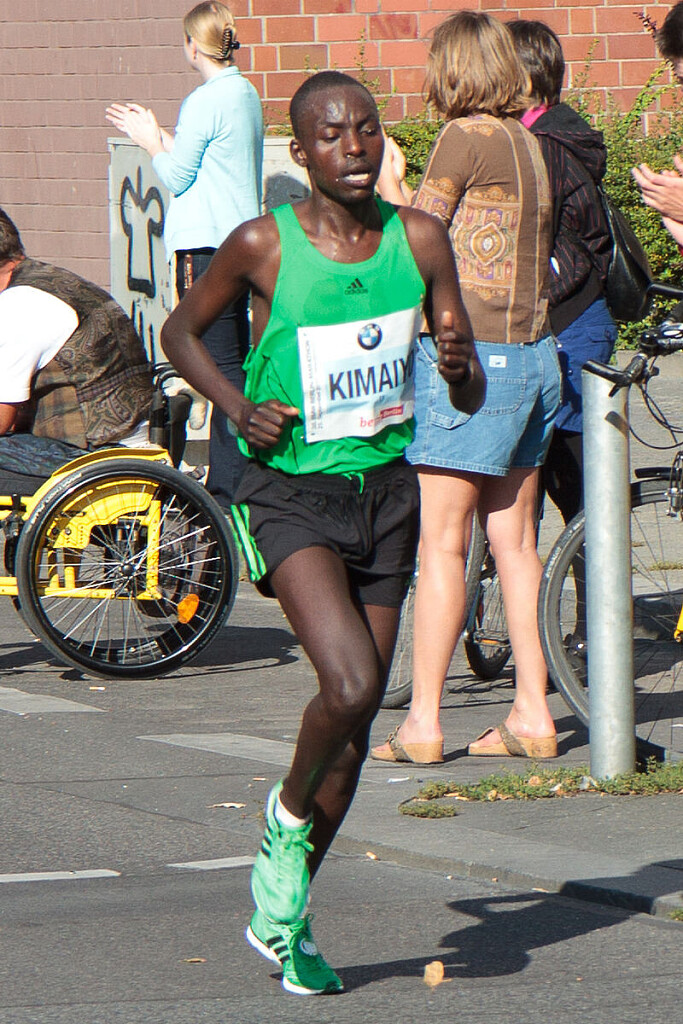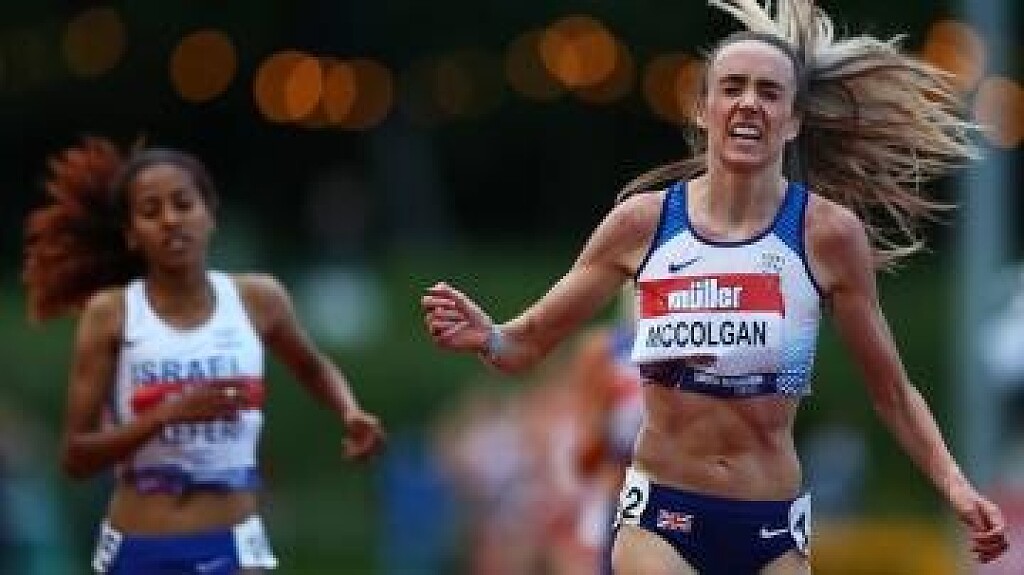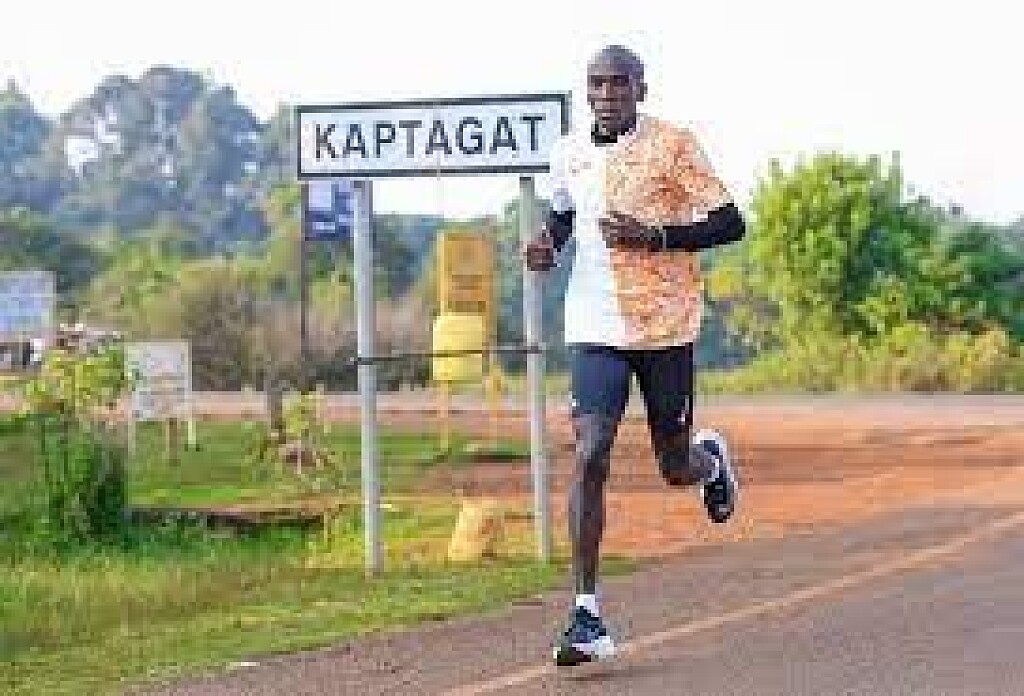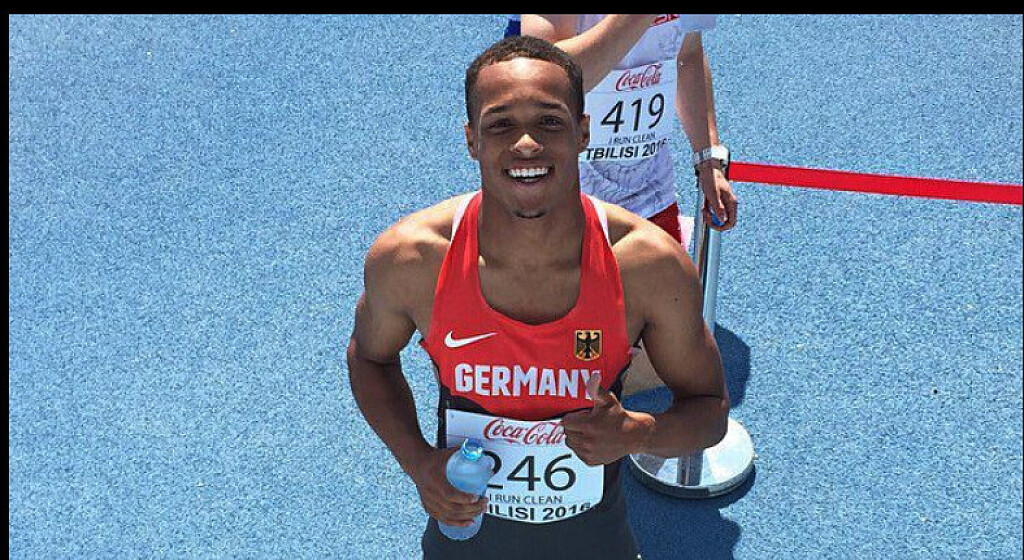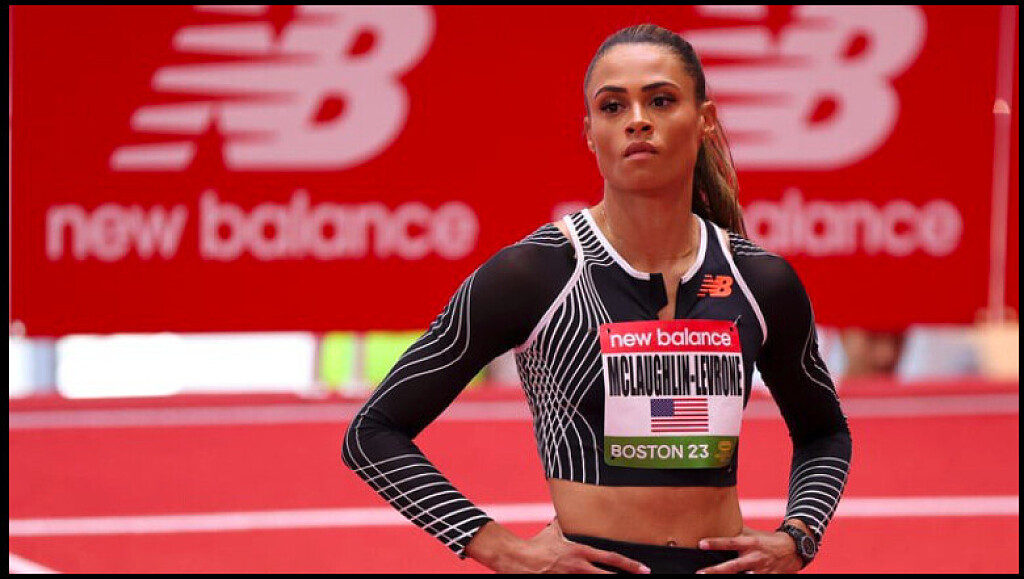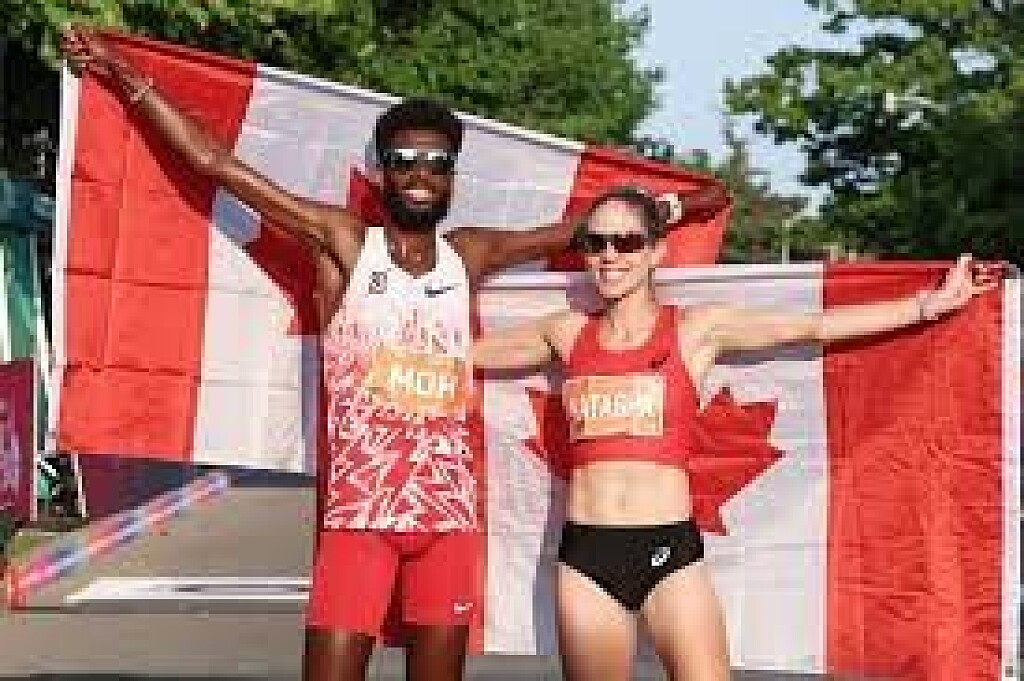Running News Daily
Running News Daily is edited by Bob Anderson in Mountain View, California USA and team in Thika Kenya, La Piedad Mexico, Bend Oregon, Chandler Arizona and Monforte da Beira Portugal. Send your news items to bob@mybestruns.com Advertising opportunities available. Over one million readers and growing. Train the Kenyan Way at KATA Running Retreat Kenya. (Kenyan Athletics Training Academy) in Thika Kenya. Opening in june 2024 KATA Running retreat Portugal. Learn more about Bob Anderson, MBR publisher and KATA director/owner, take a look at A Long Run the movie covering Bob's 50 race challenge.
Index to Daily Posts · Sign Up For Updates · Run The World Feed
Tete Dijana looks to defend his crown at Comrades Marathon
The 2023 Comrades Marathon is nearly upon us, with thousands preparing to take on the down route from Pietermaritzburg to Durban.
This year’s race has an official race distance of 87.7km, as competitors race for victory in a number of prize categories – the men and women’s winners earning over €20,000.
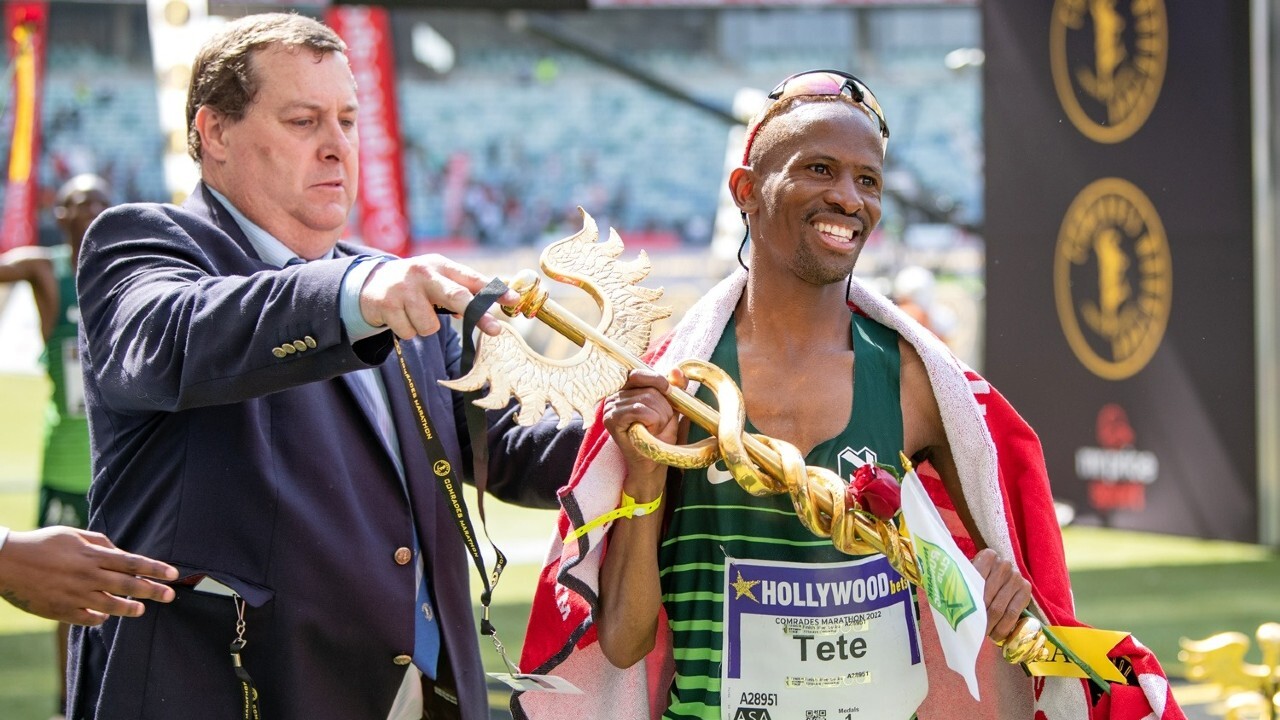
The men’s field this year features a number of past winners – as does the women’s – and promises to be an exciting race from start to finish.
Dijana aims to crown Nedbank again
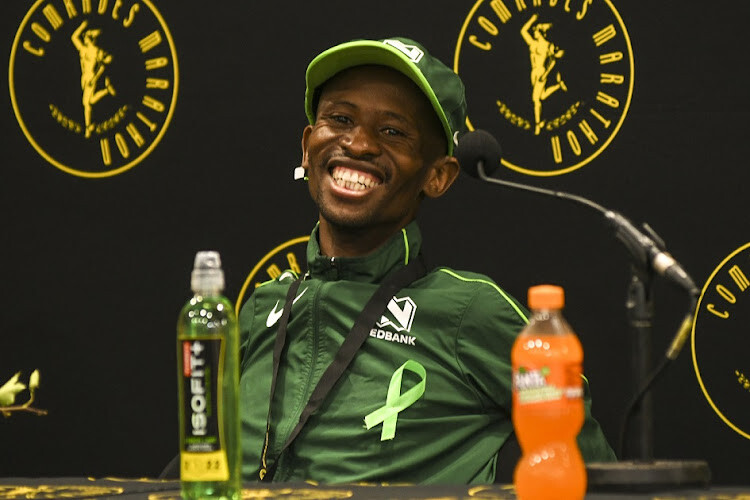
Last year saw five of the top seven finishers all come from the Nedbank running club, but it was Tete Dijana who proved chief amongst them.
He won last year’s race in a time of 5:30:38, with clubmate and 2019 winner Edward Mothibi three minutes behind him and Dan Matshailwe, another Nedbank runner, a further three minutes behind Mothibi.
Expect all those names to feature near the top three, with Nedbank set to work together once more to assert dominance over South Africa’s most famous ultra.
Perhaps the chief non-Nedbank competitor will be 2018 winner Bongmusa Mthembu. Fourth last year, he was the fastest non-Nedbank runner and has set himself more preparation time for the race this year, competing in the Om Die Dam 50km, which he won in 2:56:33.
He is a three time-winner at the Comrades Marathon, his first in 2014 when he was registered with Nedbank, and his other two coming in back-to-back wins in 2017 and 2018 for his current team Arthur Ford.
International talent
The last non-South African to win the race was Stephen Muzhingi, the Zimbabwean taking three titles in a row between 2009 and 2011, and it seems a tall order to expect anyone other than local runners to take the title.
But regardless, there are those who will be competing. British runner Shane Cliffe has finishers in the Lakes in a Day and The Grand Tour of Skiddaw to his name.
There’s also Simon Brown, who has run the Marathon des Sables and qualified for the cancelled Western States 100 in 2020, and experienced runner and coach Ian Sharman.
(06/07/2023) ⚡AMPby Olly Green
Comrades Marathon
Arguably the greatest ultra marathon in the world where athletes come from all over the world to combine muscle and mental strength to conquer the approx 90kilometers between the cities of Pietermaritzburg and Durban, the event owes its beginnings to the vision of one man, World War I veteran Vic Clapham. A soldier, a dreamer, who had campaigned in East...
more...When should you start training for your summer 10K?
This time of year, more people are inclined to start running due to warmer temperatures and longer daylight hours. Getting outdoors and seeing others compete in races can spark motivation to sign up for one yourself. Whether you are a beginner or a seasoned veteran, registering for a 10K can be a fun challenge. Preparing for a 10K race requires careful planning and adequate training, and it’s important to give yourself enough time to train effectively. But how long should that be?
The head coach of the Under Armour professional team, UA Mission Run Baltimore Distance, Lara Rogers, shares her knowledge and expertise to help you prepare for your 10K. Rogers is one of several women who serve as the head coach of a professional distance team in the U.S. The UA Mission Run Baltimore Distance team, established in 2022, consists of promising athletes focused on middle-distance events and aiming for the 2024 Olympics in Paris.

When training for a 10K, Rogers says it’s good to give yourself 10 to 12 weeks if you’re starting from scratch. “For the first four to six weeks, the goal is to get familiar with running and build a foundation,” says Rogers. “Once you have your foundation, start adding more technical work over the final four weeks, such as interval training and tempo work.”
Rogers says that if you have a more experienced running background and already have a base, you can get by with six to eight weeks of training. “Use the first couple of weeks to build up volume, then four to five weeks to incorporate speed or harder workouts, and finally a taper week or two before the race,” she advises.

She also emphasizes the importance of hydration and heat management during summer 10K training. “Run during cooler times of the day, such as early morning or evening, to avoid overheating,” says Rogers. “Stay well-hydrated before, during, and after your runs, and consider carrying water or having access to water stations for longer training sessions.”
With consistent training and preparation, following these tips will help you become well-prepared to tackle the challenges of a summer 10K race and achieve your racing goals.
(06/06/2023) ⚡AMPby Marley Dickinson
World-record holder Camille Herron lands a bird feeder after ruling the roost in her final long-distance race before Western States
U.S. ultrarunner Camille Herron broke the men’s course record at a trail marathon in Texas over the weekend, confidently capping off her last long-distance race ahead of the 100-mile Western States Endurance Run at the end of the month.
Herron finished Saturday’s 42.2-km race at the Texas Trail Running Festival in 3:49:47, beating the men’s course record by 1:41 and the women’s course record by almost 29 minutes. She completed the four-loop course at the Grelle Recreation Area trail system in Spicewood, Texas, more than 40 minutes before this year’s top men’s finisher and more than an hour before the marathon’s second-place women’s finisher. There were 10 runners in the women’s category of this year’s race and 57 competitors overall.
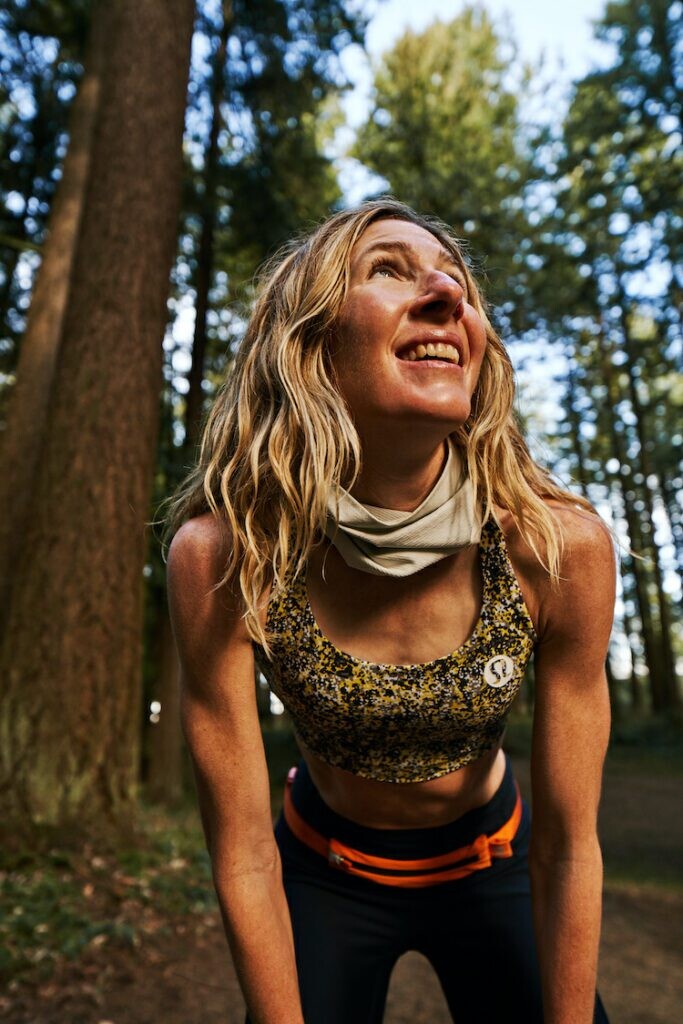
Herron proudly displayed her first-place prize—a bird feeder in the shape of a Texas Longhorn—in social media posts over the weekend. “It was a great course and good prep for Western States,” Herron wrote. “I won a really sweet bird house. Thank you @trejatrails for putting on a fun event.”
Herron, who lives in Oklahoma, wrote that it had been a few years since she’d run in Texas and that it was good to be back: “They have a great trail community—I’ll have to come back for more.”
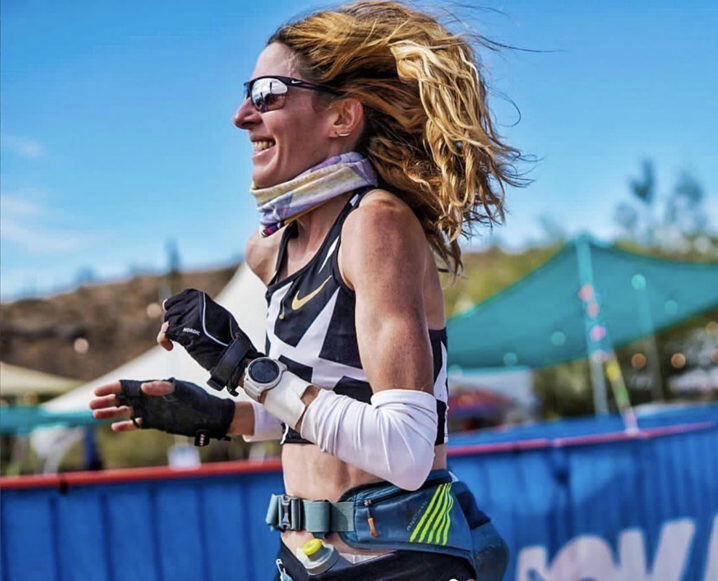
Amid the many congratulations posted in her Instagram feed, Herron was asked if Saturday’s race will be her final long run before Western States, which kicks off in California’s Olympic Valley on June 24. “Yep,” she replied, “ready to roll.”
A “roll” is exactly what Herron has been on at events large and small in 2023. The runner, who has set world records in 50-mile, 100-mile, 100-kilometer, 12-hour and 24-hour events, set the 48-hour women’s world record in Canberra, Australia in March by running 435.336km. If she’s to add to her impressive string of ultrarunning records at this year’s Western States, Herron will have to best the 16:47:19 run by Vancouver’s Ellie Greenwood in 2012. Herron cracked the top 10 in the women’s field at last year’s Western States, running 18:51:54 to place eighth.
Looking beyond Western States, Herron will be among 10 women athletes to compete in Lululemon’s recently announced Further six-day ultramarathon next March.
She noted she’ll also need to fit hanging a birdfeeder into her busy schedule, and that she’s curious to see who flocks to her newest racing trophy. “Can’t wait to see who becomes our new neighbor.”
(06/06/2023) ⚡AMPby Paul Baswick
Western States 100
The Western States ® 100-Mile Endurance Run is the world’s oldest and most prestigious 100-mile trail race. Starting in Squaw Valley, California near the site of the 1960 Winter Olympics and ending 100.2 miles later in Auburn, California, Western States, in the decades since its inception in 1974, has come to represent one of the ultimate endurance tests in the...
more...Los Angeles Marathon champion Stacy Jepkemoi Ndiwa will be seeking another title on American soil when she lines up at the 2023 Boston 10km
Stacy Jepkemoi Ndiwa the former Commonwealth Games 10,000m silver medalist, who is also the winner of the second edition of the Iten 15km Road race, said she will be returning to the United States for the title set for June 25th.
However, prior to the Boston event, Ndiwa plans to compete at the National Police Service track and field championships set for this Wednesday at the Moi Stadium as part of her build-up.
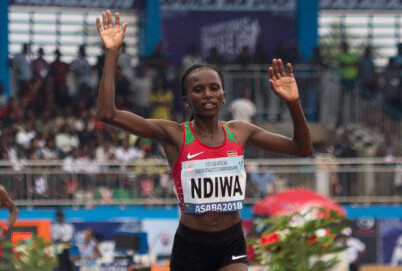
She will also feature in the national trials for the World Championships in Budapest, Hungary.
“I have a very busy schedule this year and I need to accomplish it well by not just participating but also posting better results. This Wednesday, I will be competing in the 10,000m during the National Police Service Championships as part of my endurance for the Boston 10km race,” said Ndiwa.
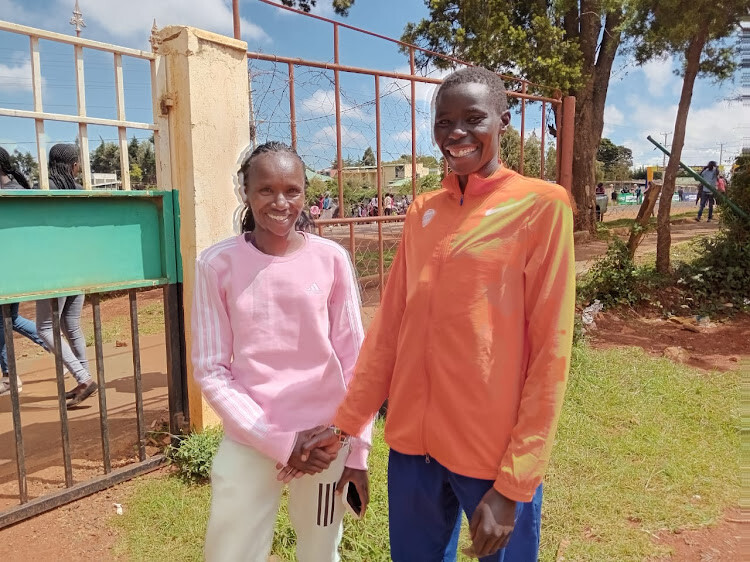
Ndiwa, who trains in Iten said she will travel to Nairobi today; rest on Tuesday, and then compete on Wednesday. "I want to make the Police team ahead of the National Trials next month. I want to represent this country in Budapest."
The Mt Elgon-born athlete said after Kasarani on Wednesday, she will embark on her journey for the Boston race.
“Immediately after the Police championships, I will embark on a journey for the Boston race. I want to run well on American soil. I will only have two weeks of recovery and training for the race. But that little training time will not deter my mission because I am emotionally and physically prepared for the battle come June 25,” she added.
The race has been dominated by Kenyans with Fancy Chemutai having won the 2019 edition. The 2020 and 2021 editions were not held due to the coronavirus.
(06/06/2023) ⚡AMPby Emmanuel Sabuni
B.A.A. 10K
The 6.2-mile course is a scenic tour through Boston's Back Bay. Notable neighborhoods and attractions include the legendary Bull and Finch Pub, after which the television series "Cheers" was developed, the campus of Boston University, and trendy Kenmore Square. ...
more...Sifan Hassan dazzles on the track in her season opener
Six weeks after winning the London Marathon, Sifan Hassan returned to action on the track in dazzling fashion at the FBK Games in Hengelo, Netherlands. On Saturday, Hassan won the women’s 10,000m, clocking the seventh-fastest time in history and a world lead of 29:37.80. She followed up her 10,000m win with a 3:58.12 in the women’s 1,500m, dropping the field over the final lap to win with ease.
In a post-race interview, Hassan told reporters that she entered the two races to see where she was at, two months out from the 2023 World Athletics Championships in Budapest. Hassan confirmed after her historic win in London that she is now shifting her focus to the track for the world championships, but said she plans to race another marathon in the U.S. (Chicago or New York), possibly as soon as this fall.

“I had the marathon just six weeks ago, and for me, the change was very hard,” said Hassan. “I am happy with my performance.” Her times for both distances are inside of the 2023 World Championships qualifying standards.
This isn’t the first time Hassan has demonstrated her extraordinary range over a short period. At the 2020 Tokyo Olympics, Hassan attempted the distance trifecta, winning gold in the 5,000m and the 10,000m but falling short in the 1,500m, taking bronze behind Faith Kipyegon and Laura Muir.
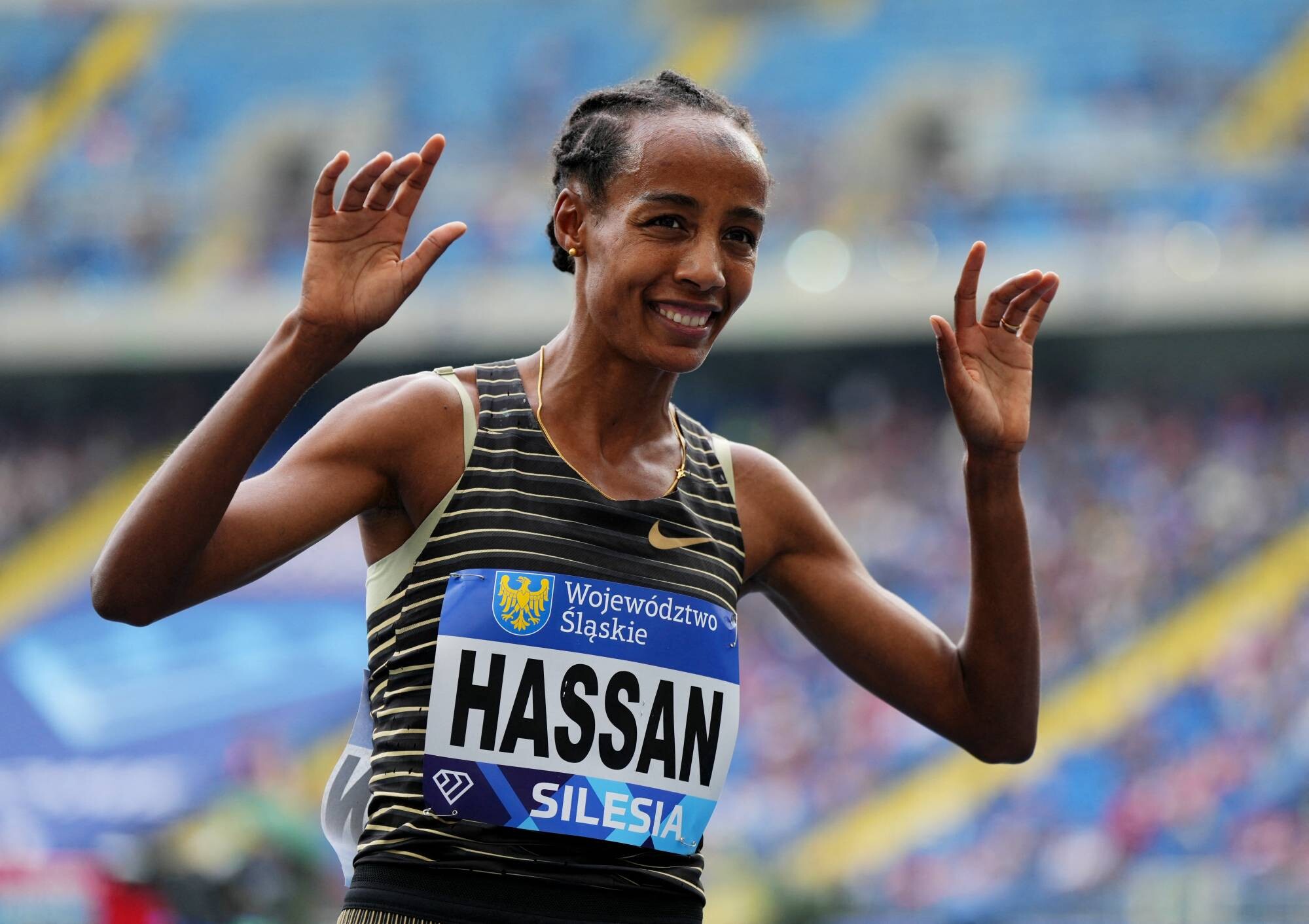
by Marley Dickinson
First runner to break 10 seconds for the 100m has died at age 76
American sprinter and 1968 Olympic gold medalist Jim Hines died Saturday, according to a news release from World Athletics, the international federation that oversees track and field. He was 76.
The news release did not specify the cause or manner of his death.
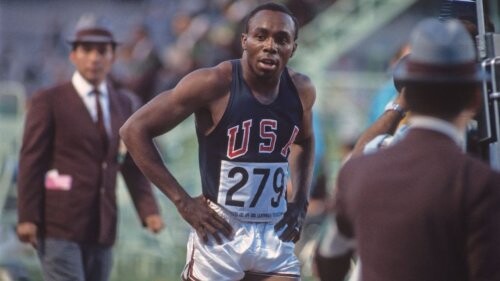
Born in Arkansas and raised in California, Hines is best known as the first man to break the 10-second barrier in the 100-meter dash with electronic timing.

According to World Athletics, he recorded a hand-timed 9.9 at the 1968 U.S. Championships but it was adjusted, with electronic timing, to 10.03. A few months later, at the 1968 Summer Olympics, he ran an electronically-timed 9.95 – winning gold and setting a new world record that stood for 15 years.
Hines' performance was one of several world records set at the 1968 Games, which were held in Mexico City at more than 7,000 feet above sea level. Those Olympics are perhaps best remembered for the on-podium protests of John Carlos and Tommie Smith, who raised black-gloved fists after winning medals in the 200-meter dash.
After winning Olympic gold, Hines went on to have a brief foray in the NFL. He was drafted by the Miami Dolphins in the sixth round in hopes that his track speed would translate to football, but he ultimately lasted only parts of two seasons in the league. He recorded only one rushing attempt, returned one kickoff and caught two passes for 23 yards.
(06/05/2023) ⚡AMPCaster Semenya: ‘My life has had its struggles, but it has mostly been joy’ she reveals in new book
Banned from competing in the sport she loved and trained her whole life for, Olympic and World champion Caster Semenya is finally ready to share the vivid and heart-breaking story of how the world came to know her name.
Thrust into the spotlight at just eighteen years old after winning the Berlin World Championships in 2009, Caster’s win was quickly overshadowed by criticism and speculation about her body, and she quickly became the centre of a debate which continues today about gender in sports, and the right to compete as you are.Told with captivating speed, immediate candour and the spirit of defiance, The Race to Be Myself is the journey of Caster’s years as an athlete in the public eye, and her private life behind closed doors. From her rural beginnings running free in the dust, to crushing her opponents in record time on the track; to the falsehoods spread about her by the press and sporting bodies, the legal trial she went through in order to compete, and the humiliation she has been forced to endure publicly and privately.

It is a searing testimony for anyone who has been forced to stop doing what they love, and deserves to run free.
“My life has had its struggles, but it has mostly been a joy. Through my example, I want to educate, enlighten, and inform about how the world can welcome those born different. You may have heard some of my story over the years, and you might have seen me running or standing proudly on the podium at the Olympics. But there is still so much I need to relate about strength, courage, love, resilience, and being true to who you are. I want this book to show people around the world how to do just that,” says Semenya.
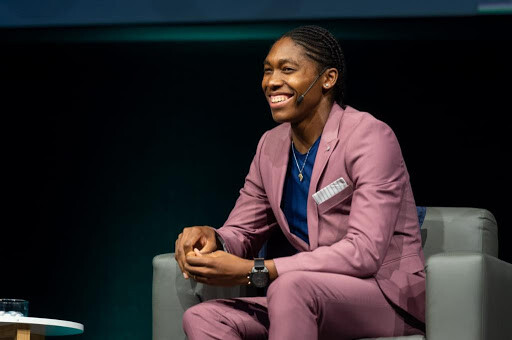
Senior Commissioning Editor at #Merky Books, Lemara Lindsay-Prince said: “I’ve always admired Caster Semenya’s journey as an extraordinary athlete and iconic activist, incredible pioneer and unfortunate pariah.
“Her fight to run as she is a race for respect, justice and ultimately everyone who has ever been told no and prevented from doing the thing they love. This book is her setting the record straight and owning her entire story. It’s unflinching in its honesty. Empowering in its tone, and captures the full scope of her life – from a little girl running in the dust, to a record breaking athlete running to be free. The Race to Be Myself is a must read!”
(06/05/2023) ⚡AMP
2024 Boston Marathon entry standards are out
On Monday, the Boston Athletic Association (B.A.A.) announced the entry standards and registration window for the 128th Boston Marathon presented by Bank of America, which is set to take place on Monday, April 15, 2024. The world’s most prestigious marathon will host its traditional field size of 30,000 participants.
The registration period will span five days, from Sept. 11 to 15, 2023. Registration will open on Monday, Sept. 11 at 10 a.m. E.T. and close on Friday, Sept. 15, 2023, at 5 p.m. E.T. The registration process will follow the same format used for the previous three races, allowing qualified runners with valid Boston Marathon qualifying times to submit their applications during the designated registration week.
The qualifying standards for the 128th Boston Marathon will remain the same as those for the 2023 edition. Participants who have achieved their qualifying times can submit their applications during the registration window. This will also be the second year the marathon features non-binary qualifying standards.

However, meeting the qualifying standard does not guarantee acceptance into the marathon. Selections will be based on the fastest applicants within each age and gender group. In the last two editions of the race, there have been no cut-off times inside the qualification standards.

Those wanting to run the marathon must use a marathon time from the qualifying window of Sept. 1, 2022 to Sept. 15, 2023.
Additionally, athletes with active finisher streaks of 10 or more consecutive Boston Marathons will receive early registration between Aug. 28 and Sept. 1, 2023. Further details regarding this exclusive registration period will be communicated to eligible participants in the coming months.
If space remains available after the registration period, it will re-open to the public on Monday, Sept. 17, until the race is full.
(06/05/2023) ⚡AMPby Marley Dickinson
Boston Marathon
Among the nation’s oldest athletic clubs, the B.A.A. was established in 1887, and, in 1896, more than half of the U.S. Olympic Team at the first modern games was composed of B.A.A. club members. The Olympic Games provided the inspiration for the first Boston Marathon, which culminated the B.A.A. Games on April 19, 1897. John J. McDermott emerged from a...
more...About 25 athletes disqualified from Comrades Marathon
At least 25 athletes have been disqualified from the upcoming Comrades Marathon for submitting false information.
Comrades Marathon Association (CMA) director Rowyn James said the athletes would be suspended from entering the 2024 and 2025 races as a sanction.
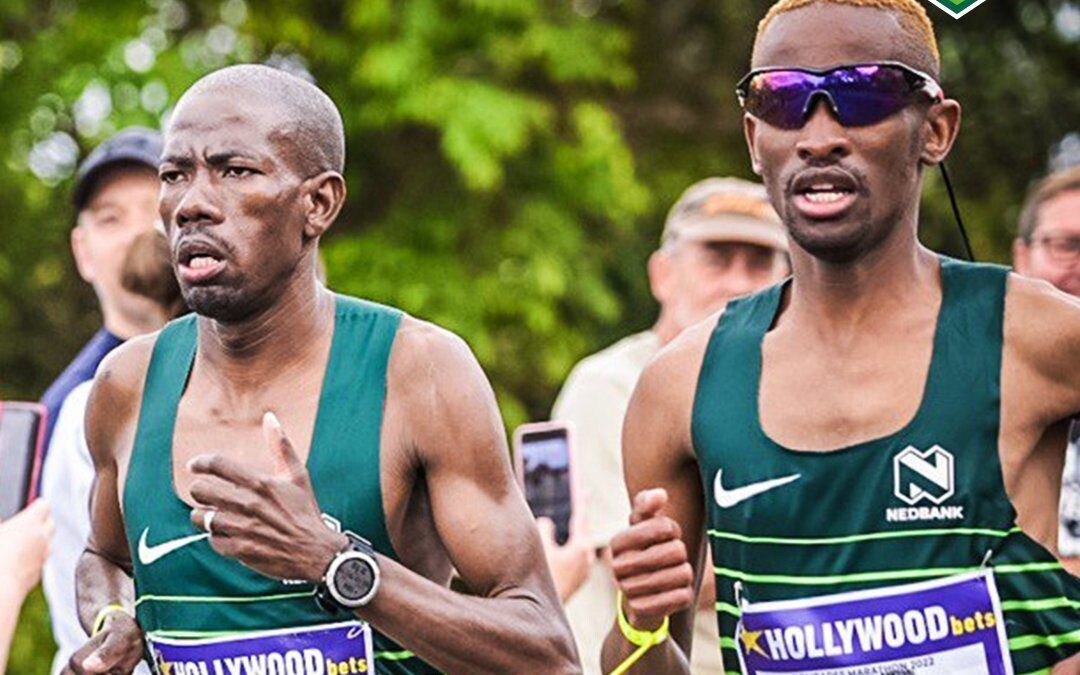
“They have been disqualified from this Sunday’s 96thComrades Marathon after it was found that they had supplied false qualifying information,” said James.
James said the cheating runners are tarnishing the reputation of the sport.
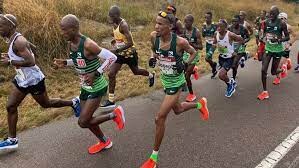
“Runners found to have been cheating in any way – be it via submitting false qualifying details or in the race itself – are tarnishing the reputation of the sport and the Comrades Marathon, as well as disrespecting fellow athletes,” he said.
In this light the CMA has announced the suspension of these 25 entrants who are members of various clubs, including Phuma KZN AC, Protea Striders, Save Orion AC, Sasolburg AC, Celtic Harriers, Chillie Running Club CG, Chiltern AC, Collegians Harriers, Diepkloof AC, Irene Athletics Club, Jozi X Training, Run Walk For Life NWN, Run Zone AC, SAPG AC, Sunward Striders AC, Team Vitality Club KZN, Thorn Tree Striders, Top Runner AC and Woodview AC.
“These transgressors will not be permitted to participate in the 2023 Comrades Marathon and the CMA has also notified the respective athletes and their running clubs management of the disqualifications.
“It is incumbent upon every athlete to honor the ethical code and ethos of the sport. We promote fair sport and to this end are continuing with investigations into other alleged transgressors, the outcome of which will be announced in due course,” he explained.
(06/05/2023) ⚡AMPby Koena Mashale
Comrades Marathon
Arguably the greatest ultra marathon in the world where athletes come from all over the world to combine muscle and mental strength to conquer the approx 90kilometers between the cities of Pietermaritzburg and Durban, the event owes its beginnings to the vision of one man, World War I veteran Vic Clapham. A soldier, a dreamer, who had campaigned in East...
more...Sound to Narrows celebrates 50 years
On Saturday, June 10, thousands of community members will turn out for the 50th annual Sound to Narrows run in Tacoma. This year’s event returns to Vassault Park after two years of being a virtual-only run and includes something for everyone, from the state’s oldest 12K run for all ages to a 20-yard diaper dash for kids.
“For 50 years, Sound to Narrows has been a treasured community event that MultiCare has been proud to support,” said Florence Chang, president of MultiCare. “Being able to celebrate this milestone anniversary with an in-person event makes this year extra special, and so many of us at MultiCare — including myself — are looking forward to being there on race day.”

All proceeds from Sound to Narrows will benefit MultiCare Academy for Students in Healthcare (M.A.S.H.) Camp. Formerly known as Nurse Camp, this free, five-day camp introduces local high school students to careers in health care. Students join medical professionals from various disciplines for a first-hand look at the multifaceted world of health care.
Registration starts at $45 for adults and $10 for children participating in the in-person 12K or 5K, and includes a collectable 50th anniversary t-shirt, runner’s bib and Sound to Narrows medal. Entry for students participating in the Fit for Sound to Narrows 2K is $5. There will be a virtual option again this year, for those who want to participate but don’t feel ready for a large, in-person event. The registration fee for the virtual run is $30 and includes bib number, t-shirt and finisher medal.

Check-in starts at 6:30 a.m. at North Vassault and 37th Street in Tacoma, with rolling start times for each event beginning with the 12K walk at 7:30 a.m. The awards ceremony will take place at 9:45 a.m. Runners participating in the event virtually will not be eligible for awards.
Whether it’s the signature 12K route with challenging hills and spectacular water views or the fast and flatter 5k route, Sound to Narrows aims to make physical fitness inclusive for the greater Puget Sound community.
Sound to Narrows is sponsored by Pacific Source Health Plans, TRA Medical Imaging, Olympic Sports & Spine, Tacoma Rainiers, South Sound Running and Tacoma Public Utilities. For more information and to register, visit soundtonarrows.org.
(06/05/2023) ⚡AMPSound to Narrows
Washington State's Oldest 12k. The Sound Narrows is the South Sound's kick-off to summer. Choose from the state's oldest 12k, or our fast and challenging 5k routes. After your race, enjoy a slew of vendors, fun bands, and camaraderie with fellow participants. ...
more...At 69, Bobby Kersee is track's 'mad scientist' and as influential as ever
Four years ago, the man associated with speed more than any track and field coach in the world felt himself slowing down, and he did not know why.
Since he was born in Panama in 1954 to a Panamanian mother and U.S. Navy father, Bobby Kersee has always been restless, a self-described wanderer with energy that matched his athletes. But in 2019, feeling unusually sapped, he called his doctor in St. Louis. Blood tests produced results dangerously far beyond the norm. Pancreatitis kept him stuck in a hospital for four weeks.

Once discharged, Kersee gave up red meat and alcohol.
What he would not quit was track.
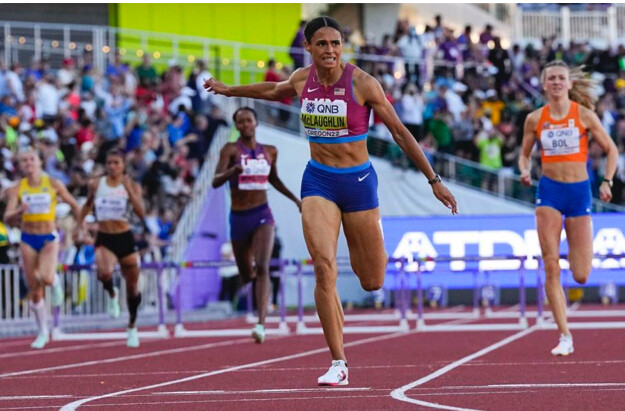
Forty years after coaching his first world champion Kersee, now 69, paced relentlessly for four hours on Thursday while watching his training group at West Los Angeles College.
“Everyone kind of says the same thing: You know, he's different in terms of he's basically a mad scientist,” said Athing Mu, the 20-year-old reigning Olympic and world champion at 800 meters who switched to Kersee’s coaching in September to expand her range. “He knows what he's doing.”
Under cloudy skies at the track high above Culver City, nine athletes in his training group, dubbed Formula Kersee, ran tailored workouts and waited for his every word, from the barked “let’s go!” to commands about mechanics he hollered to athletes mid-run. He lifted hurdles, held court with reporters and stopped only to film block starts with his iPhone.
At an age when he might have become anachronistic, Kersee and his methods still represent sprinting’s gold standard, associates and athletes say. Invigorated by a training group that describes itself as a family and could be dominant into the next decade behind headliners Mu and 23-year-old 400-meter hurdles world champion and world record-holder Sydney McLaughlin-Levrone, Kersee said his career has no discernible finish line.
His coaching, primarily of sprinters and hurdlers, has brought his athletes at least one gold medal in 10 consecutive Summer Olympics, a litany of world championships and world records and, for Kersee, veneration, criticism and influence.
As the first professional meet held at UCLA’s Drake Stadium since 1990, and a key early tentpole in USA Track & Field’s attempted plan to grow its U.S. fanbase before the 2028 L.A. Olympics, this weekend’s Los Angeles Grand Prix is both a callback to a time when track’s popularity soared and, its organizers hope, a harbinger such times can return.
Outside of Sebastian Coe, the 1984 Olympic gold medalist in the 1,500 who has since ascended to lead track’s global governing body, World Athletics, few figures have spanned both eras as prominently as Kersee.
Athletes and associates credit his ability to turn seemingly outlandish goals and times into tangible results to an ability to know what they need. Malachi Davis, who has overseen McLaughlin-Levrone’s training since she turned professional, likened Kersee to a conductor, his whistle and yellow stopwatch replacing a baton to direct “a beautiful dance of confidence and knowledge.”
Many coaches can teach how to run fast and build a race plan, McLaughlin-Levrone said, but Kersee understands “how to break it down piece by piece.”
Robert Forster, a Santa Monica-based physical therapist who has worked with Kersee’s athletes since 1983, said Kersee understands the “work-rest ratio” better than any coach, and does not overtrain where other coaches might double down on mileage. Forster has seen Kersee send an athlete home to rest just from the look on their face, and likes to tell a story about the 2016 Olympics, that Kersee later confirmed. Allyson Felix, the Los Angeles native who under Kersee became the most decorated athlete in track’s history, was nursing a severely sprained ankle and the physical therapist told Kersee it needed to be iced 20 minutes every hour. Forster did not expect, however, that Kersee would stay up the entire next night icing the ankle as Felix slept.
Kersee was an early adopter of technology, upgrading his video cameras at a Westwood electronics store years before he could film block starts of sprinters Jenna Prandini and Morolake Akinosun on his iPhone and zip the footage to an iPad on the infield of the West L.A. track.
Yet the Kersee mystique has endured as much because of his grasp on psychology as biomechanics — feeling for when to push and when to pull back.
Brandon Miller, a top 800-meter hopeful who began working with Kersee in September, has heard other athletes describe Kersee as “crazy.” He disputes that characterization, but noted that Kersee knows to stoke his competitiveness entering a workout’s final repetition with four words: “OK, what you got?”
“I've never met any coach like him,” Mu said. “He's not going to make you do anything that's for his sake. You know, it's gonna be all for you and the benefit of you and your career. And so, I come in here, I knew that he was very intentional, and that's something I needed, especially if I want my career to be long.”
Raised by a grandmother as an “A-train baby” bouncing between the Bronx and Queens, Kersee lost his mother, Daphne, when he was 14, before moving to San Pedro for high school.
He put himself through college at Long Beach State by working at a youth correctional facility in Whittier, where Kersee watched wards from midnight until 8 a.m. After graduating, he had two jobs: Track coach at Cal State Northridge, and counselor at another youth facility in Chino. He took over UCLA’s track and field program in 1980 and that provided enough money to be comfortable. Coaching Greg Foster to his first world championship in 1983, and watching his athletes win six golds and four silvers at the Los Angeles Olympics one year later, provided the final confidence he could sustain coaching as a career.
But he did not leave behind the edge required to do his former jobs.
“I used to work in the prisons, so you can’t walk into the prisons being Mother Teresa,” he said. “And then I did find myself carrying a little bit too much of that to the track. I had to calm myself down and say, 'Wait a minute, you’re not working with a warden.'”
Once, an elderly woman approached Kersee in an airport in Indiana and told him she did not like what she had seen from Kersee or the other famed coach with the B.K. initials: Bobby Knight. He did not belittle his athletes, he said, but he also didn’t leave room for interpretation about who ran the workout. The edge created a mystique that “he's crazy,” Miller said. “But he's not. I feel like everybody has preconceptions of everybody but you won't really know unless you're there and you're with them every day.”
Just as when he built his vaunted World Class Athletic Club in the 1980s, he will only train those he can coach hard and have chemistry. His athletes typically train Monday, Tuesday, Thursday and Friday. He treats Monday Zoom calls with the group as though he is re-interviewing for the job. It’s more convenient than years before, he said, when he recalled gathering before dawn in Europe to address their complaints with him.
“I think we have that understanding that I’m going to listen and respect them,” he said. “But my job is to get the job done for them individually and collectively but you hired me. And if you hired me, let me do my job.”
That job, essentially, can be reduced to one thing: Imparting confidence in his plan. And no one does it like Kersee, said Davis, who sprinted professionally before aiding McLaughlin-Levrone.
“He's a competition coach, so the time it counts, you feel confident,” Davis said. “And your head coach is basically your general and then competition is basically war. And yes, you prepare for war but that final voice, that presence, that action, that essence, that’s Bobby. And he earned that by what he’s accomplished throughout his career.”
Kersee allows that age has softened him. As McLaughlin-Levrone recalled last August, Kersee earned her trust when he saw her overwhelmed with emotion at a 2020 practice and handed her a paper showing a wheel of emotions, saying he had trouble expressing himself, too.
Though accustomed to criticism of himself for years — he joked he would be buried in a track, and "probably as much as people hate me, they’ll put me in lane one, because I’ll be stepped on the most" — he worries about how the inundation of social media affects athletes’ mental health. He has traveled to support the singing ambitions of Formula Kersee sprinter Chloe Abbott. This spring, a smiling Kersee was featured on TikTok when his athletes remade the opening credits of the 1990s sitcom “Family Matters.”
Four decades into his career, he has “a whole lot of knowledge and a whole lot of patience,” he said. “But still, don’t let grandpa get out of the chair.”
Ato Boldon was never coached by Kersee during his sprinting career but has known him for 31 years, since they overlapped at UCLA, and has seen a “golden-hearted” side to the coach. He also described Kersee’s coaching equivalent as either Knight or San Antonio’s Gregg Popovich.
“Everybody under him wins,” said Boldon. “But it’s not necessarily a democracy.
“... As time has gone on, people are like, ‘Wow he’s so this or he’s so that, he’s so abrasive.’ Listen, do you want results, or do you not want results?”
No one argues that Kersee gets results. The most common criticism is how rarely his athletes compete en route to smashing records and claiming gold.
Among athletes, meet directors, agents and track officials who see a need for the sport’s biggest stars and strong competition to draw in casual fans, it has become a question of how to unite what is best for the top athletes’ futures with what is best for the sport’s growth. The tensions surrounding the discussion are not dissimilar from the way “load management” in the NBA has sparked concerns whether it will turn off fans from the regular season.
Because many top athletes train under Kersee, he has become a focal point. There is also his history of pulling athletes late before a meet, sometimes because of injury, and sometimes as a power play, as in 1994, when a dispute over pay led him to withdraw Gail Devers from a high-profile Los Angeles indoor meet.
The topic reignited last week when he withdrew Mu and McLaughlin-Levrone from the Grand Prix, a meet for which he serves as co-promoter. It came soon after telling Track & Field News in February that even he would like to see McLaughlin-Levrone run more often, and told The Times in March that there was no reason meets in the U.S. couldn’t draw thousands if the sport’s leaders banded together to promote strong competitions.
Asked about the balance of what is best for his athletes, or the sport, Kersee this week called it a byproduct of limited sponsorship money within the sport, which incentivizes performances at the biggest meets, which often require qualification earlier in the season. Only a handful of stars make big money and can afford to be choosy. He contrasted it with the NFL and NBA, where athletes can still earn a paycheck while resting.
“I think it’s a little tougher on our athletes to try to balance out wanting to run for the public and run for our sport and also knowing if I run too much or make one little mistake it might cost me making a team,” Kersee said. “That if I go out there and run five or six races I’m going to get to the point of, 'OK why is he running me so much and she gets injured over there, did she really need to run?'”
McLaughlin-Levrone released a statement after being pulled from the Grand Prix field that she “regrettably” would not be competing, citing her coach’s choice. It also said she trusted his judgment, which the world record-holder echoed again Thursday.
“He has a plan and he is going to work it out to perfection,” said Boldon, who will call Saturday’s meet as part of NBC’s broadcast team. “It might not benefit USATF, it might not benefit the fans, but you tell me, what moment stood out most from last summer's world championships?”
It was McLaughlin-Levrone’s stunning 50.68 time to win the 400-meter world title and lower her own world record. The run cut through the noise to make SportsCenter. It also left McLaughlin-Levrone sore for days, she said. Seeing her parents in the stands, for the first time after becoming the first woman to run under 51 seconds, she told them “that hurt, so bad.”
“We've been very calculated in when we run and I think it's yielded us great results,” McLaughlin-Levrone said. “Bobby always uses analogies and he's like, 'You don't take the Ferrari out every day for a drive. You take it out when it needs to come out and it does its things and you put it back in the garage.' So, your body can only be pushed to a certain level so much in your career.
“You only have so many races in your legs and I think we're really strategic about which ones we choose to run. Obviously I know the sport wants to see a little bit more and I think we're trying to figure out how to do that in a safe way that we can still accomplish our goals and give them something to look forward to.”
For McLaughlin-Levrone and Mu, the question is not whether they will make this summer’s world championships in Hungary, or next summer’s Paris Olympics, but which events — possibly plural — they will run.
When Kersee evaluates whether to bring an athlete into his coaching, he also looks for their potential range. He thought he lost his job coaching Felix when he told the 200-meter star during his interview that he would have her run the 400.
Mu and McLaughlin-Levrone’s youth and potential range is one of the sport’s most speculative discussions; news about their upcoming races create instant headlines. The duo are “two of maybe the most talented athletes he’s ever had,” Boldon said.
Their world championships last summer gave McLaughlin-Levrone an automatic berth into the upcoming world 400-hurdle field, and Mu an entry into the 800. With that secured, Kersee has focused on running McLaughlin-Levrone in the open 400 meters, where Marita Koch’s world record of 47.60 has been effectively unapproachable for 38 years — only four women have run even faster than 49 seconds in the past 20 years. She once thought 47.60 was “impossible.” Not anymore.
“It's a very daunting number to look at, I'll tell you that,” McLaughlin-Levrone said. “But at the end of the day, I think if we can take the 400 hurdles to 50.6, I think 47.6 isn't too far off.”
In addition to her 800-meter world title, Mu once owned the collegiate 400-meter record and ran on the U.S. 4x400-meter relay team that won Olympic gold in Tokyo.
“I'm still super young and I have not touched the surface of a lot of things yet,” Mu said. “But I do have visions, which is like really big goals of competing in obviously the Olympics again, and then worlds and hopefully, doubling up.”
Would that mean the 800 and 400, or the 800 and 1,500?
“Hopefully both,” she said. “I mean, I would love to have a chance to do 4/8 and then go ahead and do the 8/15 at some point.”
Maybe this explains why Kersee moved so quickly across the track during practice. There was no sign he had once slowed down.
“I’m glad,” he said, “I have that Energizer Bunny still in me.”
This story originally appeared in Los Angeles Times.
(06/04/2023) ⚡AMPLululemon launching six-day ultramarathon for women in 2024
Lululemon will launch a six-day ultramarathon next year–a step into new territory for the athleticwear brand that it says is aimed at promoting and better understanding the potential of women in endurance sports.
The company says the Further six-day ultra will kick off on March 8—International Women’s Day—on a certified looped course at a location to be announced. Ten athletes are slated to compete in the event: Camille Herron, Devon Yanko, Kayla Jeter, Leah Yingling, Mirna Valerio, Montana Farrah-Seaton, Stefanie Flippin, Vriko Kwok, Xiaomeng Jia and Yoon Young Kang.
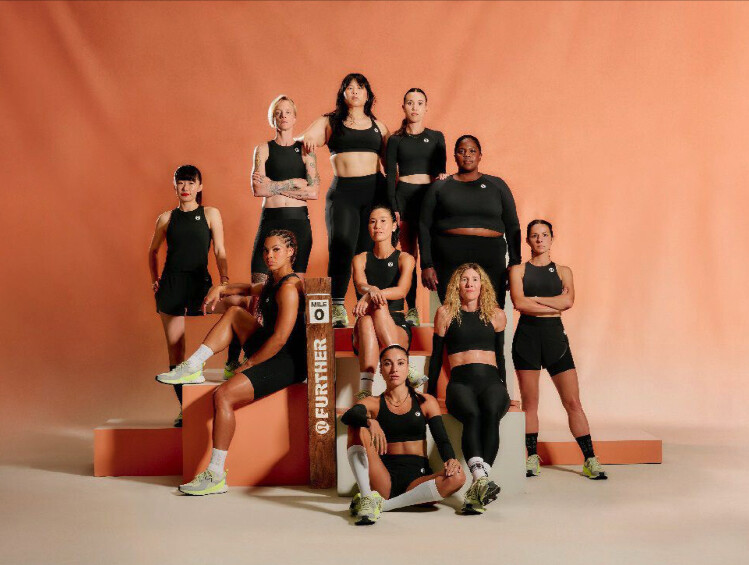
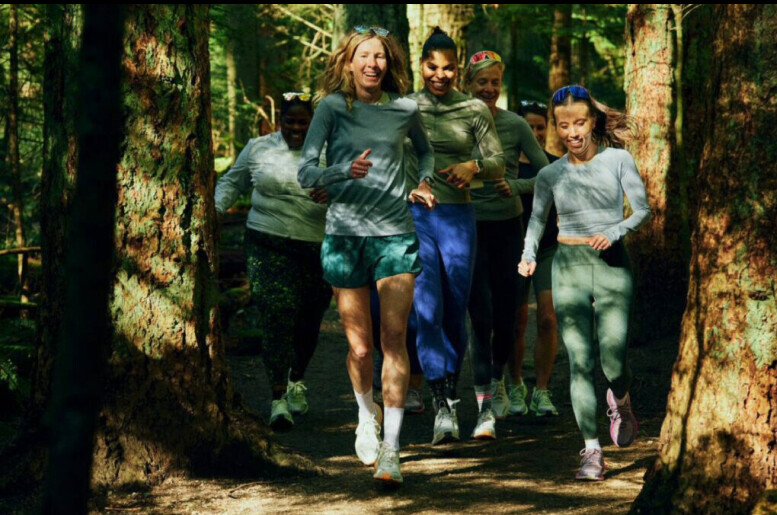
“Women are continuing to redefine what’s possible,” says Herron, the American ultrarunner who set the 48-hour women’s world record in Canberra, Australia in March by running 435.336km. “It’s important we have the platform and opportunities to showcase what we’re capable of. Further represents this to me. I’m honoured to join this phenomenal group of athletes, elevate women’s running and celebrate our human potential.”
The multi-day event will give the runners the chance to run the furthest distance of their careers with the opportunity to set world records, says the company.
Lululemon says it will be partnering with Canadian Sport Institute Pacific to conduct research studies on athletes during training and the ultramarathon itself to better understand female endurance performance and human endurance performance in general. Each athlete will have access to sport science and medicine support to inform personalized training programs spanning physical, mental and emotional support. Findings from the research are expected to be published at the beginning of March.
“Women are continuously setting new ultramarathon records, with the difference between male and female performance appearing to get smaller the further humans run,” says Trent Stellingwerf, senior adviser of innovation and research at Canadian Sport Institute Pacific. “However, there is limited research in this space, which creates a biased understanding of human endurance as women are heavily under-represented in sports science.”
Lululemon cites an an audit of select sports science and sports medicine journals that found only four to 13 per cent of published studies were female-only. The new research is intended to address the “limited knowledge around female athletes while bringing awareness to the need for additional research,” says the company.
“Women are historically underserved when it comes to opportunities to compete, research devoted to the pursuit of their goals, and product innovations built with them in mind, yet they continue to push the boundaries of human possibility in sport regardless of the inequities they face,” says Nikki Neuburger, Lululemon’s chief brand officer. “Further is grounded in our purpose at lululemon to unlock greater possibility and well being for all, and we see it as an opportunity to better serve women, solving for their specific unmet needs. With Further, we aim to inspire belief in what is possible for women when they’re supported with resources typically reserved for men.
Canadian multi-day ultramarathoning pioneer Trishul Cherns tells Canadian Running that while organizing a multi-day race may seem to some as unusual territory for Lululemon, he sees many positives in the Further project.
“From my perspective, it puts the spotlight on something close to my heart, multi-day running. The goal of the Global Organization of Multi-Day Ultramarathoners (GOMU) is to make multi-day running mainstream,” says Cherns, who adds the Further project “puts a spotlight on women in multi-day running. Ultramarathons are not just 100 mile trail runs; they are diverse–10-day, 1,000-mile, 3,100-mile races on tracks on roads—just like the group of women that make up this project.”
He applauds Lululemon’s effort to invest more resources and attention to women’s sports. “Their focus is on data capture to further sports science and research on women’s endurance. Brava!” says Cherns. “It’s very true that women are sorely under-represented in the research data and the science of female performance is marginalized or non-existent … Only recently has the discussion of women’s menstrual cycles on sports performance even been openly talked about by women athletes, let alone the subject of serious study.”
Along with its announcement of the Further multi-day ultramarathon, Lululemon unveiled the Blissfeel Trail, the company’s first road-to-trail running shoe. The company says the insights it gains from the Further project will help the company expand on products designed to support women as they go further on their runs.
(06/04/2023) ⚡AMPby Running Magazine
Unexpected ways bib pins can hold your race together
Safety pins might just be the most overlooked, but essential, bit of running gear on race day. Woefully neglected—I can’t count the number of times I’ve slapped myself on the forehead with an “I forgot pins!” on my way home from a race expo—bib pins do the heavy lifting for our paper-mounted timing chips as well as helping draw the line between the rule-abiding runner and the unbibbed “bandit.”
For trail runners, these sharp and shiny unsung heroes are particularly precious, as I was reminded last weekend during my attempt at running 100 miles at the Sulphur Springs Trail Race in Ancaster, Ont. I only made it 100 km, but my race would have ended much sooner had I not used my bib pins in unintended ways when things started to fall apart. Here are a few ways bib pins have come to my rescue that may be helpful to keep in mind when you have to MacGyver your way out of trouble on the trails.

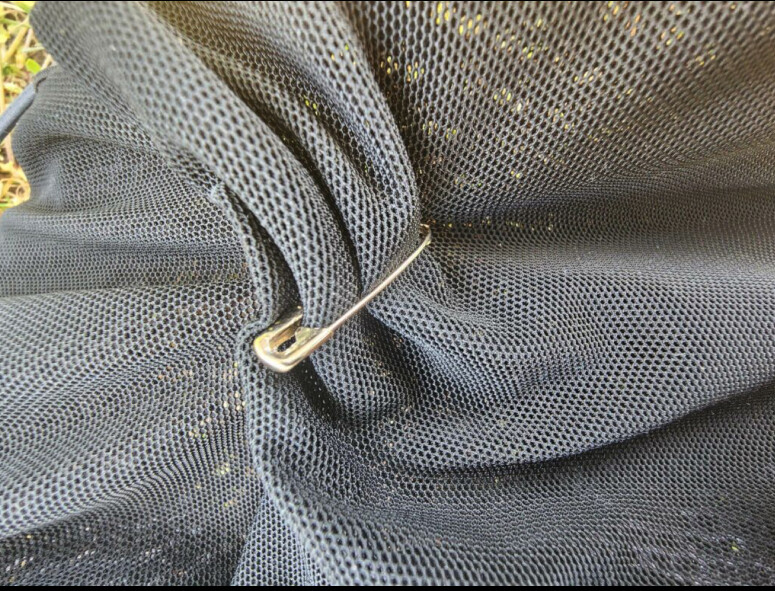
Emergency repairs
For my third 20-km loop at Sulphur Springs, I switched from shoes to sandals, as my feet have a tendency to puff up like bread in the oven. Seven kilometres into the loop, the whatchamacallit that kept the straps of my left sandal connected to the sole broke off, making the sandal unwearable. I texted my wife/crew leader to meet me a bit further down the trail with my backup footwear. It was only when I saw her, after she had run 20 minutes to bring me exactly what I’d requested, that I remembered I couldn’t take the footwear from her. (Having her carry my gear is against the race rules, and would disqualify me.)
I hung my head, contemplating having to run the next 13 km barefoot, but a glimmer of light from the corner of my race bib caught my eye. Eureka! I removed the shiny bib pin, threaded my sandal strap through the hole of the sole, and fastened the safety pin to the bottom. To my surprise, the bib pin kept my sandal from unravelling for the rest of the loop. That one tiny pin took care of everything (except the apology I owe my wife for making her run all that way for nothing).
Clutch adjustments
My longest training run leading up to Sulphur Springs was 60 km. Those long runs are crucial, not just for getting your body and mind in shape, but also for testing your gear for comfort and fit. My new hydration vest passed all the quality-control tests during my training: it was snug and comfortable and its pockets gripped my water bottles firmly enough that I didn’t have to hear “squish, squish, squish” for hours on end. But on race day, at around the 75-km mark, that vest turned into an iron maiden, inflicting untold pain as it rubbed against my upper torso. I tried applying more lubricant to my chest, but it was useless, as the damage was done, and I was going through too much liquid to risk going without it. What saved the day, or at least made it bearable to continue for another 25 km, was taking two pins from my race bib and using them to cinch either side of my vest. That crucial adjustment kept my vest from rubbing against the worst hotspots.
Blister management
I haven’t had to perform an emergency blisterectomy for a while, not since I learned to throw sandals into the mix. But on my first 50-miler at Sulphur Springs some years back, my ever-swelling feet outgrew my toebox. They say you can’t make an omelette without breaking a few eggs, and sometimes the same holds true for trail runs and blisters. It’s never pretty, but using a bib pin to pop a blister can at least make continuing on your race bearable. I don’t recommend letting the pin do all the work, as it can raise the risk of infection—use a small bottle of alcohol to sterilize the pin, and bandages to keep the deflated blister tightly wrapped. This will help your feet stay as comfortable as possible.
(06/04/2023) ⚡AMPby Running Magazine
Running throughout middle age can help prevent memory decline, study shows
Sticking to a regular running regimen throughout middle age may help prevent or slow memory loss associated with getting older, according to a new study.
Scientists at universities in the United States and Mexico are adding to the growing evidence of running’s benefits to brain health with research looking specifically at the effects of regular exercise on neurons formed in early adulthood. Their findings, published in the journal eNeuro, show long-term running not only promotes the survival of these neurons, but also their integration into a network relevant to the maintenance of memory encoding during aging.


“Long-term exercise profoundly benefits the aging brain and may prevent aging-related memory function decline by increasing the survival and modifying the network of the adult-born neurons born during early adulthood, and thereby facilitating their participation in cognitive processes,” says Henriette van Praag, study co-author and associate professor of biomedical science at Florida Atlantic University.
For the study, researchers studied the brains of mice who had access to a running wheel and compared them to those of rodents that did not. Although this type of research precludes the use of human subjects—researchers used the rabies vaccine to help trace connections in the brain over a period of several months—the results of the study make clear the benefits to people of maintaining a regular fitness regimen, says study co-author Carmen Vivar of the Centro de Investigacion y de Estudios Avanzados del IPN in Mexico.
“Our study provides insight as to how chronic exercise, beginning in young adulthood and continuing throughout middle age, helps maintain memory function during aging, emphasizing the relevance of including exercise in our daily lives,” said Vivar.
“Long-term running may enhance pattern separation ability, our ability to distinguish between highly similar events and stimuli, a behaviour closely linked to adult neurogenesis, which is among the first to display deficits indicative of age-related memory decline.”
The study doesn’t offer guidance on how many kilometres or minutes runners should target to maximize their brain health. The researchers do underscore the importance of consistency, however, noting the value of maintaining daily exercise from early adulthood through middle age in bringing about the memory benefits cited in the study.
(06/04/2023) ⚡AMPby Running Magazine
How Saunas Benefit Your Brain
It’s not just hot air. These gym amenities really can bring you health rewards.
From the Huberman Lab podcast to your biohacker buddy’s garage to your social feeds, saunas are everywhere right now. Part of the surge in interest (and sales) is largely thanks to science showing a connection between frequent sauna use and better physical and mental health and maybe even longevity—including some stunning evidence that it may help prevent dementia. Not to mention the whole sauna thing: the community, the relaxation, the ritual, the ahh moment.

Most of the research on brain benefits comes from Finland, where sauna bathing is a pillar in the culture of being healthy and happy. The sauna is the poor man’s pharmacy, goes one old proverb. And increasingly, science agrees.
A few years ago, when Finnish researchers dug into some overlooked data on chronic disease risk—numbers they’d been collecting on middle-aged men since the 1980s—they noticed a startling link, says Jussi Kauhanen, M.D., Ph.D., director of public health at the University of Eastern Finland and head of the research group today.
Scientists in any other country wouldn’t have thought to include “How often do you sauna bathe?” on the lifestyle questionnaire. But in Finland, where it’s essentially as universal as diet and exercise, the question seemed only natural, Dr. Kauhanen explains.
Their results: Men who took saunas four to seven times a week had about a 65 percent lower risk of developing Alzheimer’s disease or other dementia over the next 20 years than men who did it once a week (after adjusting for other factors, like drinking and exercise). A 2020 study that tracked almost 14,000 Finnish people confirmed the earlier study’s results: Those who took saunas nine to 12 times a month had a 53 percent lower chance of dementia over the next 20 years than people who went zero to four times, and researchers have hunches about why.
How heating up helps your brain

Sitting there sweating bullets for as long as you can stand it may not look very productive, but there’s actually a lot going on in your body—including some of the same stuff that happens when you work out, Dr. Kauhanen says. Hitting the gym or the sauna lowers inflammation, believed to play a role in dementia. Both activities also trigger your body to make special proteins that promote neuroplasticity (brain-derived neurotrophic factor) and proper protein folding in the brain (heat shock proteins)—potentially warding off dementia. (FYI, ice-bath junkies: Cold plunges could have similar impacts on the brain via cold shock proteins, Dr. Kauhanen says, although there’s nowhere near the amount of evidence for this yet that there is for heat.)
Saunas may also help the brain by giving the heart a workout much like exercise does, says Christopher Chen, M.D., director of the Memory, Ageing and Cognition Centre at the National University Health System in Singapore. This not only contributes to lowering the risk of dementia but also improves how your arteries function, helps with healthy blood pressure, keeps oxygen and other nutrients flowing into your cells, and takes waste products out.
Finally, saunas are just kind of a fun place to be. Depression and social isolation are risk factors for dementia. In Finland, Dr. Kauhanen says, going to the sauna is an enjoyable and often social experience, which is linked to better psychological health over time. This type of sauna experience might be harder to get in the U. S., though, where guys avoid conversation and eye contact.
As promising as these studies may be, it’s highly unlikely that saunas are a silver bullet for dementia—but they might be one way to load a few regular bullets (like socializing or heart-health effects) into your gun, says Jason Karlawish, M.D., codirector of the Penn Memory Center at the University of Pennsylvania and author of The Problem of Alzheimer’s. There are other benefits of saunas as well, especially after working out; read more about them here.
The takeaway: If saunas make you feel good—and you’re covering your bases by maintaining generally healthy habits, especially actually working out—then you’ll likely benefit from investing time in one. Or even investing in one for your home, particularly if you want to make it part of your lifestyle.
Stay in for five to 20 minutes at a time (easier to do if you have a little ventilation), alternating with cold exposure like winter air or an ice-cold bath, so you can get back in and do it again if you choose. Start with short sessions and take a break when you need to, Dr. Kauhanen says. “Just listen to your body.”
3 Ways to Bring the Sauna Benefits Home
Infrared options don’t get nearly as hot as the 176 to 212 degrees of the typical Finnish saunas, but they still get you sweating. Traditional-style saunas hit those temps—but generally cost more.
(06/04/2023) ⚡AMPby Men’s Health
Teen Runner Gives Over 600 Pairs of Shoes to Elementary School Kids
He organized a 5K run to raise money, and partnered with a nonprofit to outfit them with new kicks
Last year, a high school sophomore in Atlanta spent his daily commute home from school brainstorming ideas for his Eagle Scout project. An avid cross country and track runner whose 4x400-meter relay team won at Nike Indoor Nationals this winter, Collin Maher knew he wanted to give back to his community with a running-related project.

Everyday, he drove past an elementary school attended primarily by economically disadvantaged students. What if he combined his passions to help those kids?
Maher came up with a two-part plan. He organized a 5K race to raise money to give new shoes to every student at Lake Forest Elementary School. He secured permits, requested road closures, and registered the race so it would be USATF-certified and an official qualifier for Atlanta’s premier annual running event, the Peachtree Road Race. He even managed to get a sponsor for the 5K, which he called the Cocoa Classic.
Maher’s event raised $18,000, and he partnered with the nonprofit Shoes That Fit to outfit all 629 students at the elementary school with new shoes. On the charity’s website, the Boy Scout said, “The families there, their priority is not buying new shoes, it’s making sure they have food on the table. I drive by that school every day. And I know a new pair of shoes can boost your confidence. A bad pair of shoes can hurt your feet.”
Teachers sized their students, and last week, Maher arrived on the school’s campus with hundreds of shoe boxes in tow. A Fox 5 reporter wrote that some children yelled, “I love you, Collin,” as they opened their boxes.
“They’re overwhelmed with emotion, I am too just to see this,” said Principal Laryn Nelson, “I’ve never experienced this in my career, and I’ve been doing this 30 years.”
(06/04/2023) ⚡AMPby Runner’s World
New Jersey Runner Saves Family From Fire
She and an 85-year-old neighbor banged on doors and windows to wake the sleeping family
An unnamed runner in South Brunswick, New Jersey, was getting in her early morning miles on Wednesday when something made her pause. She noticed smoke and fire coming from a home in the residential area.

An 85-year-old neighbor named Santo Livio was going about his morning routine and had also noticed “fog” coming from the house, according to ABC7 New York. Together, Livio and the runner sprung into action and helped save the family inside from the fire.
She starts to run, she was banging on the door, I was banging on the window,” Livio told the news station. “I said I’ll go home and call 911. Police and firefighters started coming and the smoke became a blaze.”
Fire alarms didn’t go off inside the home, and the family sleeping inside had no clue that they were in danger until hearing Livio and the runner banging on their door and window. A father and four children were rescued, according to fire officials. The mother wasn’t at home because she was working an overnight shift.
The fire chief, Raymond J. Hayducka, expressed gratitude to Livio and the South Brunswick runner, saying that it was “their quick thinking and heroic actions” that saved the family.
(06/04/2023) ⚡AMPby Runner’s World
Ethiopians Ashenafi Moges and Sifan Melaku runs away with titles at 2023 Stockholm Marathon
Ethiopia’s dominated the 2023 Stockholm Marathon, a World Athletics Label Road Race event, took place on Saturday, June 3. The following are top 20 results from 2023 Stockholm Marathon with Ashenafi Moges and Sifan Melaku running away with the tiles.
On the men’s, Moges away late to win with a time of 2:10:32 pulling away from his countryman Derara Hurisa (Ethiopia) who finished second in a time 2:11:01 ahead of Tsegaye Mekonnen (Ethiopia) who ran 2:12:32 for third place.
The Sweden National Senior Marathon Championships went to Samuel Tsegay after finishing fifth overall with a time of 2:14:28.
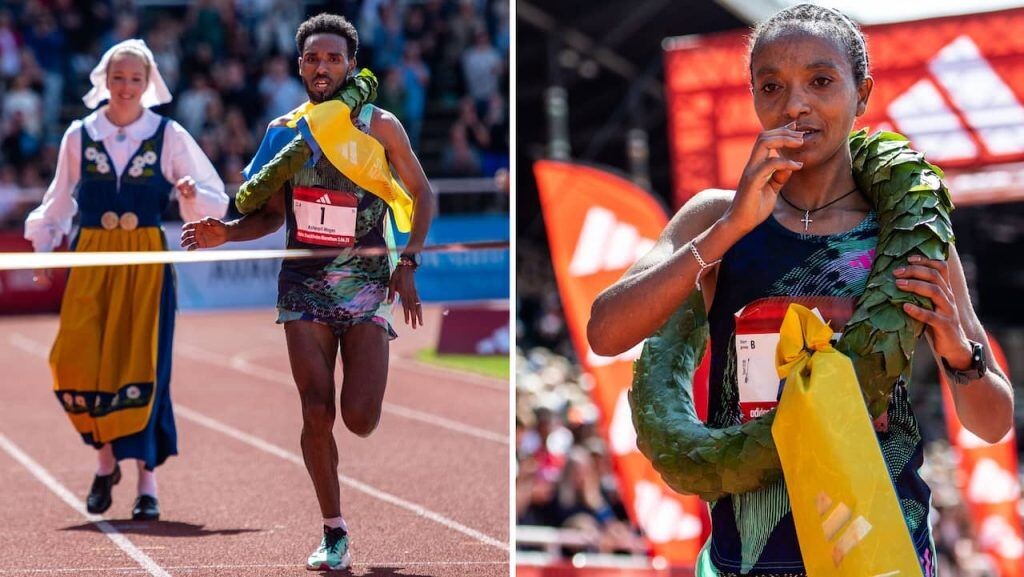
On the women’s side, Ethiopian athletes swept the competition with Sifan Melaku running 2:30:39 for the victory. Her compatriot Sorome Negash (Ethiopia) clocked 02:33:26 for second place with Yenenesh Dinkesa (Ethiopia) getting third in 2:36:39.
The Sweden national title went to Carolina Wikström (Sweden), who finished fourth overall with a time of 2:36:52.
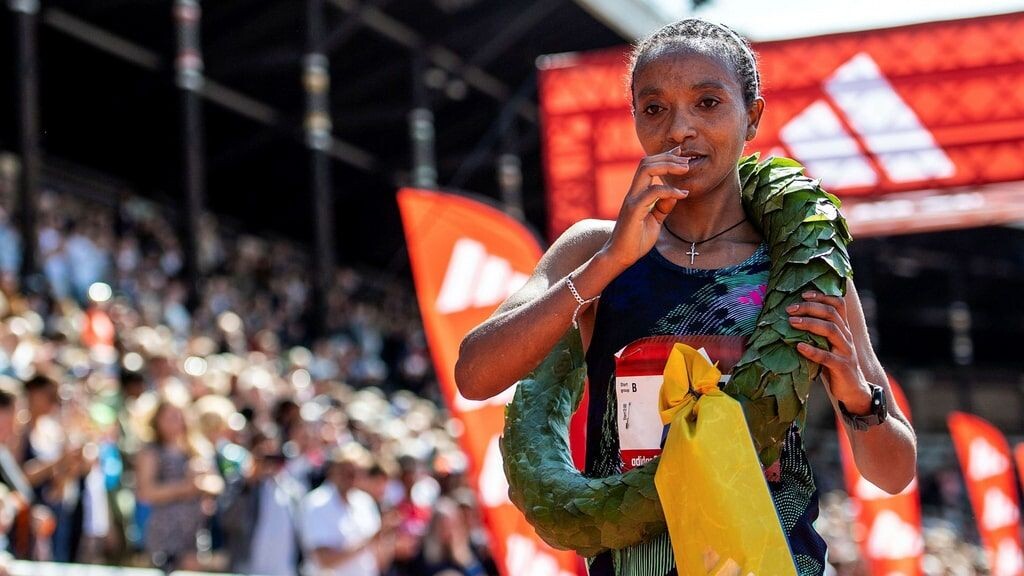
by Glen Andrews
ADIDAS Stockholm Marathon
ASICS Stockholm Marathon is an exciting race in a beautiful city with runners from all over the world. This is one of the major sporting events in Sweden with hundreds of thousands of spectators along the route cheering the participants. The race takes you through Stockholm, one of the world’s most beautiful capitals. Built on 14 islands around one of...
more...Kiptum, Kosgei to lead Kenya Marathon team in Budapest
The second fastest man in marathon history, Kelvin Kiptum and women's world marathon record holder Brigid Kosgei will lead the Kenyan marathon team at the World Athletics Championship in Budapest, Hungary, scheduled for August 19-27.
Kiptum, the 2023 London Marathon champion will team up with Geoffrey Kamworor and Titus Kipruto.
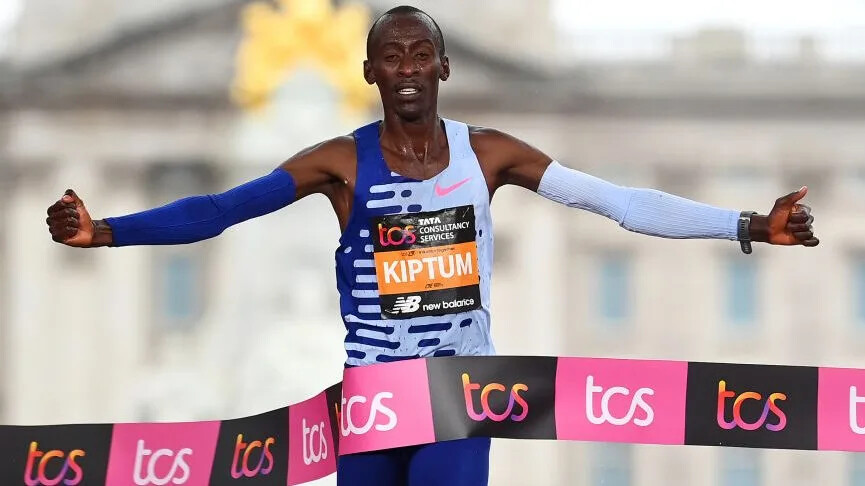
The 2023 Rotterdam Marathon silver medalist Timothy Kiplagat and the 2022 Commonwealth Games bronze medalist Michael Githae are the reserve runners.
Double Chicago and London Marathon champion Kosgei will have company from the 2023 Tokyo Marathon winner Rosemary Wanjiru and the 2016 5,000m African champion Sheila Chepkirui.

The 2022 Commonwealth Games silver medalist Margaret Wangari and the 2014 World Half Marathon bronze medalist Selly Chepyego will be the reserve runners for the women's cadre.
The men's team will be targeting reclaiming the world title that Kenya last won in 2017 through Geoffrey Kirui.
Kenya was last victorious in the women's category in 2019 when Ruth Chepngetich was crowned in Doha. Kosgei and Co will be on a mission to recapture Kenya's lost glory.
The team was named after Athletics Kenya held a meeting with a panel of coaches in Eldoret on June 1.
The panel consisted of Patrick Sang, Richard Metto, David Leting, Julius Kirwa, Joseph Cheromei and Peter Bii.
Athletics Kenya director for competitions, Paul Mutwii disclosed that the line-up was based on the willingness and availability of the athletes.
(06/03/2023) ⚡AMPby Samuel Nganga
World Athletics Championships Budapest 23
From August 19-27, 2023, Budapest will host the world's third largest sporting event, the World Athletics Championships. It is the largest sporting event in the history of Hungary, attended by athletes from more than 200 countries, whose news will reach more than one billion people. Athletics is the foundation of all sports. It represents strength, speed, dexterity and endurance, the...
more...Too Mentally Fried on a Run? Here’s How to Motivate Yourself to Keep Going
New research shows that motivational self-talk can counter brain drain.
Susanna Sullivan is no stranger to mental fatigue. From late August until early June, the 2:24 marathoner teaches pre-algebra to 104 sixth-graders—which, if you’ve ever dealt with middle schoolers, you’ll know can be exhausting.

“If a student asks, ‘Can I go to the office?’ I immediately have to make all these other considerations: Who else is out of the room? Do I trust the kid to go directly to the office? Are they distressed?” says Sullivan. “By the end of the day, my brain is toast.”
While her non-athletic colleagues may be able to go home and recharge after a long day, Sullivan needs to find a way to rally. Her coach, who is the head coach at George Mason University, holds practices in the evenings. Given that Sullivan is expected to make the American marathon team for the World Championships in August, these workouts matter... whether she’s mentally drained or not.
Much of the prevailing advice recommends doing your best to prevent mental fatigue. For runners like Sullivan, however, prevention isn’t a viable option. In that case, science suggests motivational self-talk might be the solution.
The Problem With Mental Fatigue
Anyone who has had a “long day” knows what mental fatigue feels like: you’re drained, you can’t concentrate, your self-regulation is trashed, and you probably have no interest in going for a run, never mind a hard workout. This comes from putting in the effort to pay attention to something while blocking out distractors—which research shows is tiring and kills your ability to self-regulate.
“There are a certain amount of effs you can give in a day. And if you give them all up, by the end of the day you’ve got none left to give,” says Shannon Baird, Ph.D., a certified mental performance consultant who works with the United States Army Special Forces.
Typically, Baird and others recommend finding ways to pause and recharge throughout the day to avoid creating a mental fatigue “deficit.” If you become mentally fatigued, the most common recommendations are to put off a hard workout or adjust your pace or intervals. Sometimes, however—as in Sullivan’s reality—mental fatigue is unavoidable, and you can’t reschedule. If you hit traffic on your way to a race, for instance, you can’t just move the race to a different day, and you probably don’t want to give up on your goals. In that case, according to a recent study published in the Journal of Applied Sport Psychology, try some motivational self-talk.
Why Motivation Is Important
According to Gleber Pereira, Ph.D., an associate professor in the physical education department at Universidade Federal do Paraná in Brazil and the lead author on the study, motivation is a key contributor to whether or not you’re willing to continue exercising, particularly at a given intensity.
“We have two reasons to explain how you stop or continue exercise: potential motivation, or your willingness to keep exerting yourself in exercise, and motivational intensity, which is how you perceive effort during the exercise,” he says. According to this model, a runner will slow down or stop when their perceived effort matches their level of willingness.
Mental fatigue has a double-whammy effect when it comes to potential motivation and motivational intensity:
First, researchers theorize that it may decrease your potential motivation before you ever start exercising.
Second, it makes you perceive the effort as more difficult sooner than if you were mentally fresh.
Therefore, Pereira and his colleagues hypothesized that if they could manipulate athletes’ motivation levels, they could offset these performance-impairing effects of mental fatigue. They decided to test an intervention that is freely available to every athlete: self-talk.
Testing Motivational-Self Talk
The researchers took 12 men who typically exercised three to five days per week and had them perform three identical cycling tests to exhaustion several days apart. In the first two sessions, participants spent 30 minutes prior to the cycling test either relaxing in a comfortable chair (the control condition) or performing a mentally fatiguing activity called the Stroop task.
During this task, participants identified the display color of words that appeared on a computer screen while ignoring the color that the letters spelled out. (So if the word “red” appeared in green ink, the participant was supposed to press the green button.) The researchers then used a brainwave-measurement technique called electroencephalography and asked participants to self-report their level of fatigue to confirm that, in the mental fatigue condition, they were in fact mentally fatigued.
In the third session, participants were trained how to perform motivational self-talk—essentially redirecting negative thoughts by using short motivational phrases such as “Let’s go!” and “You can do it!” They then performed their final cycling test, which used the same setup as the mental fatigue (Stroop task) condition; this time, however, they were instructed to use motivational self-talk cues whenever they had negative thoughts, felt tired, or otherwise wanted to stop.
It Works!
When the subjects were mentally fatigued, their endurance performance worsened (i.e., they quit sooner) by approximately 19 percent compared to the control condition. However, when the subjects were mentally fatigued and practiced self-talk during exercise, their endurance performance remained similar to the control condition—meaning that despite being mentally fatigued, they were able to maintain their effort for longer.
Pereira and his colleagues speculate that motivational self-talk works in two ways. First, it helps you maintain or increase your potential motivation, i.e., your willingness to exert yourself.
“Mental fatigue may decrease your potential motivation from before you exercise,” says Pereira. “But when you use motivational self-talk, you might increase your willingness to exert.”
Second, it affects your perception of effort. The researchers found that while mental fatigue increased participants’ ratings of perceived exertion (RPE) and feelings of displeasure at the outset of the test (compared to control), the participants reached their peak RPE and feelings of displeasure—which would lead to slowing down and stopping—later in the test when they used motivational self-talk than when they didn’t.
Put another way, motivational self-talk helped them to delay feelings of maximal exertion (“This is so hard, I can’t keep going”) and displeasure (“I hate this, it isn’t worth it”), which improved their performance.
How to Develop Motivational Self-Talk
According to Baird, motivational self-talk is all about manipulating your internal environment.
“Your body is crying for attention because you’re pushing your body. But you don’t have to listen to the thoughts. You don’t have to board that train.” Instead, she says, “you want to facilitate your brain to be an asset, not a detriment.” One way to do that is through motivational-self-talk.
ID Your Negative Thoughts
To replace debilitating thoughts with ones that will enhance your performance, start by identifying the thoughts that are your most common detractors from performance. Maybe they have to do with physical sensations (“This hurts”), boredom (“When will this be over”), or despondency (“I’m a terrible runner; I’m never going to achieve my goal”). Wherever your brain tends to go, you want to be able to quickly recognize these thoughts when the arise.
Choose Motivational Phrases
Once you are prepared to recognize your negative thoughts, write down several motivational self-talk cues that resonate with you. Some examples from Pereira’s study include “Do your best,” “Go to your maximum,” and “Keep going.” He recommends keeping the sentences short and referring to yourself as “you” rather than “I.”
Sullivan finds her motivation in comparing the task at hand to other hard things. “You only have to run for two more minutes” or “Just make it up this hill” works because, as she says, “That seems so much more manageable than 104 sixth graders. A hill is nothing compared to them.”
Practice
Finally, it’s time to practice using your phrases. “Every time your thought goes to some wish to stop or decrease the pace—that’s when you need to use it,” says Pereira. “If you can do it in practice, you can be ready to do it in a race.”
(06/03/2023) ⚡AMPby Runner’s World
Jennifer Russo Shatters Courtney Dauwalter's Backyard Ultra World Record
The 57-year-old’s new record also makes her the first American female to cover 300 miles in 72 hours.
A mom of three, the 57-year-old from New Richmond, Ohio, completed the multi-day race, which began on Saturday and finished with 74 laps (also called “yards”) of the course, totaling a whopping 311 miles. In the backyard ultra race format, runners must run one 4.167-mile loop, or yard, every hour until one runner is left.

Russo’s new record makes her the first American female to cover 300 miles in 72 hours in any race format, a record that unfortunately won’t be ratified since the course was not USATF-certified. Russo’s performance also ties her for 16th place in the all-time longest distance covered in the backyard ultra format, surpassing the former record of 68 yards set by fellow American ultramarathoner Courtney Dauwalter at Big’s Backyard Ultra, in Bell Buckle, Tennessee, in 2020.
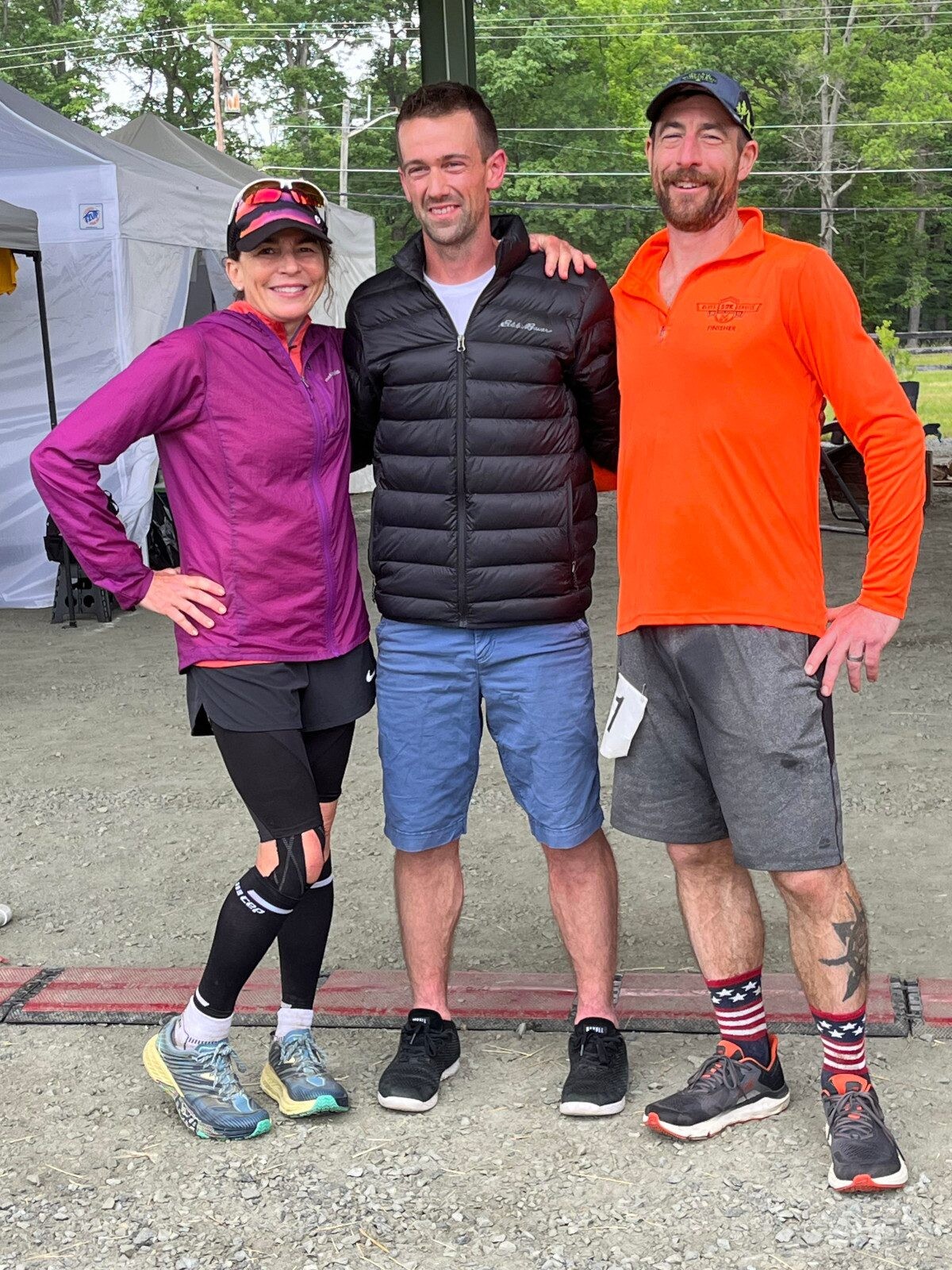
After nearly six hours of competition between Russo and New Jersey’s Scott Snell, Snell emerged as the victor, running 75 yards. Levi Yoder of Dundee, Ohio, finished in third with 63 yards but couldn't complete his 64th.
Elsewhere in the competition, Canada’s Viktoria Brown of Ontario picked up the second-highest number of yards among the six female racers, with 49, finishing the race in the top six. She fell seven laps short of Amanda Nelson’s women’s Canadian backyard ultra record set in Rettert, Germany at the Race of Champions-Backyard Masters.
In addition to (clearly) logging loads of miles, Russo herself is also a race organizer and co-founder of Empower Ultras, which puts on multiple ultra and endurance races throughout the country.
(06/03/2023) ⚡AMPby Runner’s World
Man Discovers Prehistoric Mastodon Tooth While Out on a Run in California
The Santa Cruz resident handed it over to a local museum to study.
On Tuesday, Jim Smith of Santa Cruz discovered a mastodon tooth while running on a California beach. Mastodons (large, prehistoric elephants) roamed North and Central America in the Ice Age. Scientists believe they went extinct over 2,000 years ago.

Smith wasn’t the first person to spot this particular mastodon tooth. A tourist found the sizable chomper on Rio Del Mar Beach last week. After photos circulated on social media, Wayne Thompson, a paleontology collections advisor for the Santa Cruz County Museum of Natural History, reached out to the woman. “I practically hit the floor. It was a mastodon tooth, right in the same area where we know mastodons lived in Santa Cruz County,” Thompson told KRON 4.
The next day, the tooth was gone. Santa Cruz County Museum of Natural History workers and volunteers combed the beaches for the gigantic tooth over the holiday weekend but came up with nothing. Then, Smith went for a run.
Smith had heard about the search for the mastodon tooth on the news. So when he found it on the beach, he quickly turned it into the museum. “He was so excited to hear it was a mastodon tooth and was eager to share it with the Museum,” said Liz Broughton, visitor experience manager at the Museum.
The museum will take some time to study the fossil before the public gets to see it. The tooth will be added to a host of mastodon fossils discovered in the area. In the meantime, Smith will probably be looking out for a mastodon rib or pelvic bone. After a few thousand more miles, Smith might be responsible for discovering a whole prehistoric elephant.
(06/03/2023) ⚡AMPby Runner’s World
Mia Brahe-Pedersen just became the third-fastest U.S. high school female athlete of all time
Mia Brahe-Pedersen, the 17-year-old star in the making from Lake Oswego High School in Oregon is the fastest female runner in the state in 100 and 200 meters. Her personal best time of 11 seconds in the 100 meters makes her the third-fastest U.S. high school female of all time—the boys never had a chance. Among her competition in the race? Brahe-Pedersen’s prom date, Ethan, who she said has been a gracious runner-up. She recently posted a video of the triumph to her TikTok page, garnering support and praise from women as well as challenges from many more men.
“I’ll take whatever competition I can get,” she told KGW8. “I don’t care if they’re boys or girls or whatever. I really don’t care. If I can get to my goals while racing you, I will do it, and I’m appreciative that you want to be in a race against me.”John Parks, Brahe-Pedersen's coach, has plenty of experience coaching runners at the highest level. Upon seeing her, he knew Brahe-Pedersen possessed the potential to become an Olympian.
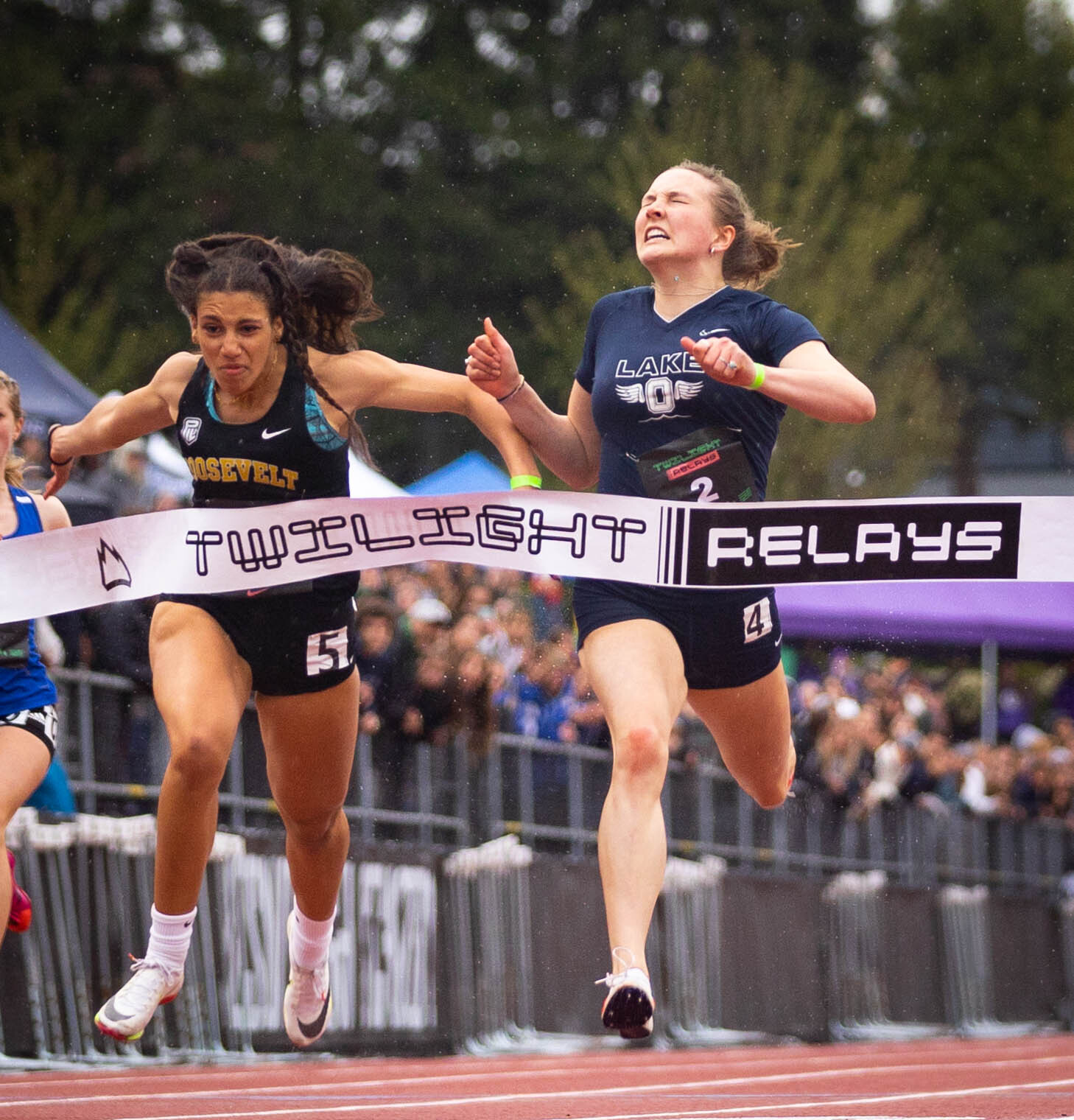
“She’s better than the top American collegiate in the 100,” Parks told KGW8. “Taking down Marion Jones 100 record, Allyson Felix record indoors, Sonya Richards Ross.” Parks knows a thing or two about what it takes to be an Olympic runner; he’s worked with talented runners at every level, including fellow Oregonian Ryan Bailey, who introduced the pair.
"She is eager to learn and wants to work," Bailey said in an interview with RunnerSpace. "I want to see her destroy every record possible. Everything I've learned in my career I can put into her, from avoiding injuries, being in a good mental space, things I wished I would have known."
The next record for Brahe-Pedersen to shatter? A sub-11 time. Parks thinks she has what it takes to get there.
"She's so driven and as tough as a competitor as I've ever seen. She works harder and is more dedicated. She's the coach's dream."Mia Brahe-Pedersen, fresh off of setting a new 100-meter record at the Nike Portland Jesuit Twilight Relays with an 11.07 run, has crushed even more competition by recently winning a 100-meter mixed-gender race.
(06/03/2023) ⚡AMPby Runner’s World
Faith Kipyegon smashes women’s 1500m world record in Florence
Kenyan Faith Kipyegon smashed the women’s 1500m world record, clocking 3 minutes, 49.11 seconds at a Diamond League meet in Florence, Italy, on Friday.
Kipyegon, a two-time Olympic champion and two-time world champion, took 96 hundredths of a second off Ethiopian Genzebe Dibaba‘s world record from 2015. Kipyegon began the day as the second-fastest woman in history at 3:50.37.

The 29-year-old was already the most decorated female miler in history, the only one with four global 1500m titles. Her Olympic gold medals in 2016 and 2021 were separated by a 22-month maternity leave from competition (that included 12 months without running).
Kipyegon was the eighth of nine children growing on a farm in the Kenyan Rift Valley. She was a soccer player at age 14 when she lined up for a one-kilometer run in PE class, according to World Athletics.
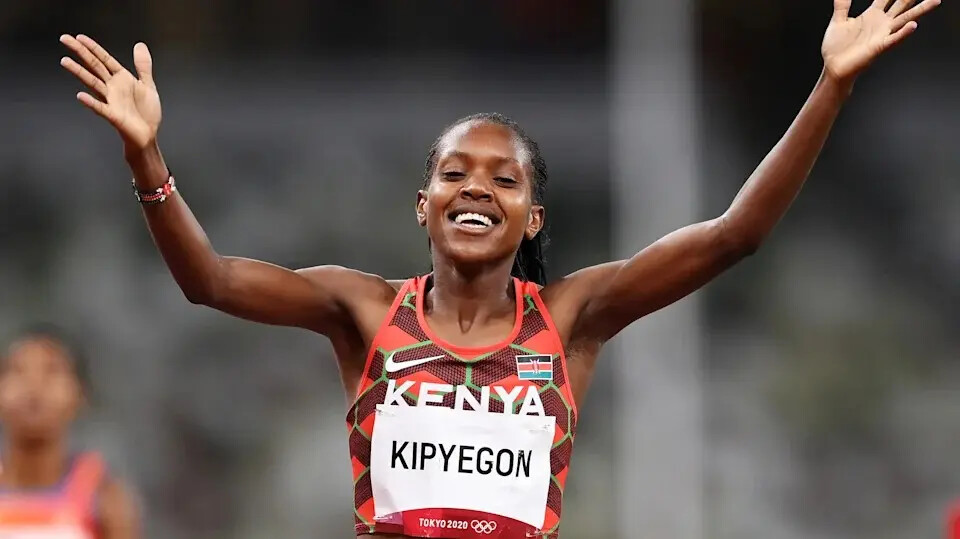
“I won that race by 20 meters,” Kipyegon said, according to World Athletics in 2016. “It is only then I knew I could run fast and be a good athlete.”
In 2010, a barefooted Kipyegon placed fourth in the world cross country championships junior race as, at age 16, the youngest finisher in the top 21. The next year, she won it. The year after that, she made her Olympic debut at age 18. By 2015, Jenny Simpson, arguably the best American miler in history, had a nickname for her: “The Sniper,” for her ability to run people down in the final lap.
She ran her last lap on Friday in under 59 seconds.
Next year, Kipyegon can become the second person to win the same individual Olympic track race three times, joining Usain Bolt. She said last year that she may shift to the 5000m after the 2024 Paris Games, according to Olympics.com.
Also in Florence, world champion Fred Kerley extended a year-plus win streak in the men’s 100m, prevailing in 9.94 seconds over Kenyan Ferdinand Omanyala (10.04) and American Trayvon Bromell (10.09).
(06/02/2023) ⚡AMPby Olympic Talk
Five ridiculous workouts from ultrarunner Aleksandr Sorokin
Lithuania’s Aleksandr Sorokin has five ultrarunning world records to his name, and it is his grueling training sessions and mileage that set him apart from other endurance athletes. Leading up to his recent 100km world record in Vilnius, Lithuania, the 41-year-old averaged 300 kilometers per week, with some ridiculous training sessions. Here’s a glance at a few of them.
1.- 40 reps of 1,000m with 1-2 minutes’ rest

Kilometer repeats can feel long for most runners; now imagine doing 40 of them. This workout from Sorokin is mind-boggling. He averaged three minutes and 28 seconds per kilometer over the 40 reps. According to his Instagram post about the workout, he told his long-time coach Sebastian Białobrzeski that he wanted to cry after finishing rep #20. (Sania, we don’t blame you.)
2.- Three reps of 10K progressions off 1K
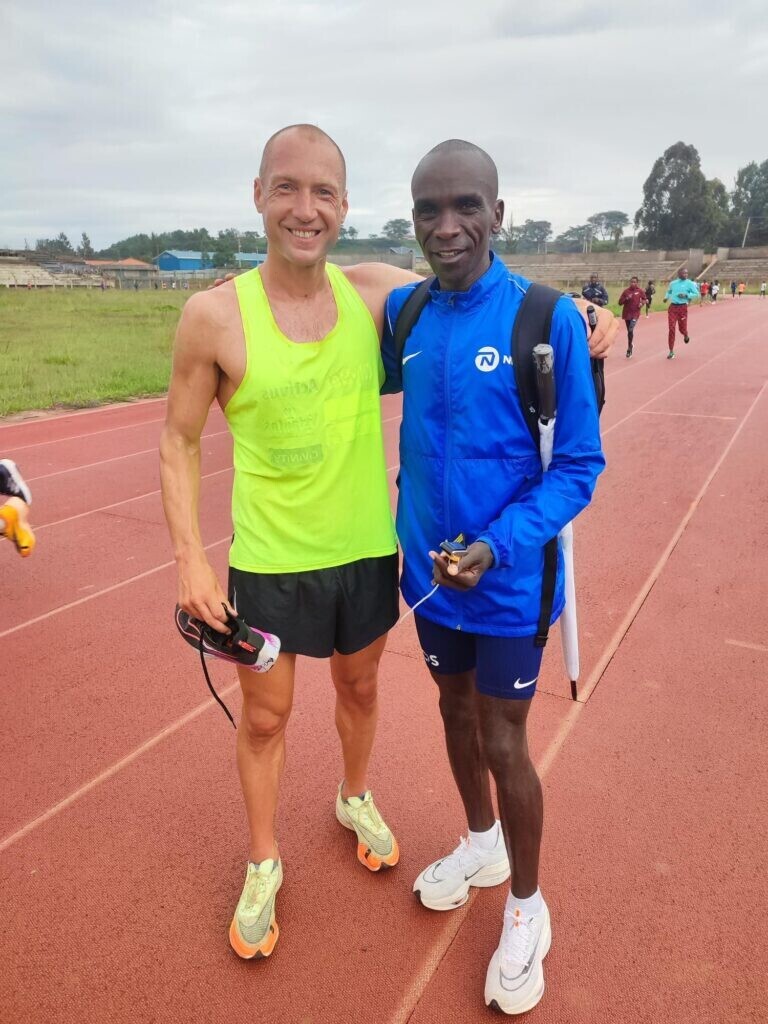
Adding progression runs to your training is a great way to improve your endurance and help your body adapt to running longer distances and sustaining higher intensities. It also plays a role in building mental stamina. In Sorokin’s case, this 30K progression workout is to help him get familiar with world record paces when fatigued. This can be a good session for someone training for a marathon, but the workout would be way too much mileage for any distance under 30K.
3.- Five reps of 5K with three minutes’ rest
In the lead-up to the 2023 Seville Marathon in Spain, Sorokin threw down this wild 5K session, averaging 3:15-3:20 per kilometer off three minutes’ rest between reps. The 41-year-old ended up placing 118th overall in a time of 2:25:33.
If you switch the workout to three or four reps with the same amount of rest, it can be a good workout for those training for a half-marathon or marathon, as it simulates your race effort.
4.- 10 reps of 2K, off 1K float
This might be the least ridiculous Sorkoin workout of the five, but it’s still 30 kilometers of volume and done at a fast pace. Similar to the 5K workout above, this can be done at your goal half or marathon pace. The thing about float rest is, you have the ability to mark the workout as hard as you want. The faster you float (faster than a jog), the harder the workout will be, and vice-versa.
5.- 42-kilometer steady run
A week after breaking his 100K record by six seconds in 6:05:35, the Lithuanian star celebrated his achievement on his Strava in typical ultrarunning fashion, heading out for a casual 42.2-kilometer steady run in two hours and 50 minutes.
Sorokin hasn’t always been a runner; he did not start until 2013, at 32. In a 2021 interview with Canadian Running, Sorokin told us that he began running to get in shape, when he weighed 100 kg (220 lb.). “At the time I wasn’t playing any sports, just drinking and smoking a lot,” he said. After a few months of training, he entered a half-marathon, and a few weeks after that, he saw an advertisement for a 100 km race in Lithuania and began his ultrarunning career. (And the rest is history.)
(06/02/2023) ⚡AMPby Marley Dickinson
Usain Bolt wants to return to track and field
The fastest man in history, Usain Bolt, who dominated men’s sprinting for nearly a decade, has expressed interest in reviving the sport that brought him worldwide fame.
In an interview with Reuters, the 36-year-old Jamaican sprinter revealed he has aspirations to make a significant impact in track and field, highlighting a need for charismatic personalities to inspire and bring back the sport’s glory. He disclosed he has reached out to World Athletics on multiple occasions, expressing his willingness to make a larger impact in the sport if given the opportunity. Bolt said the discussions are ongoing, but he eagerly awaits a position where he can actively contribute to the growth and development of the sport.
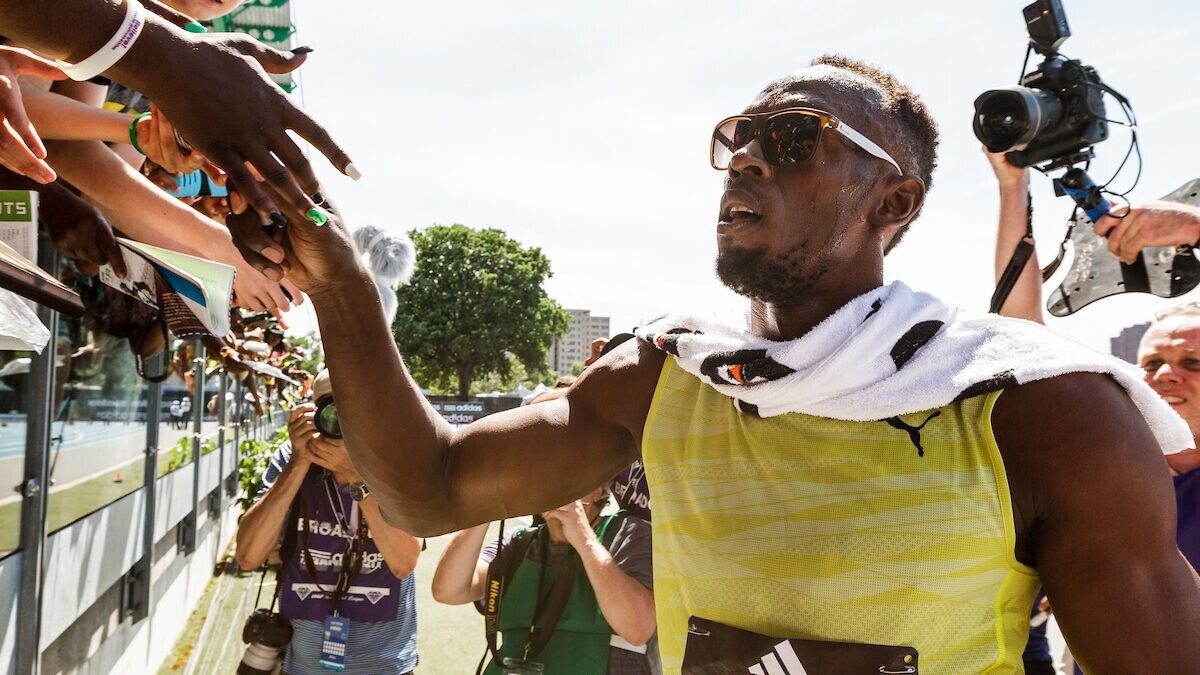
Bolt acknowledged that the sport experienced a slight decline after his departure. However, he sees promising signs in young athletes like U.S. sprinter and 200m world champion Noah Lyles. “Lyles has the charisma and big personality required to engage and captivate audiences,” said Bolt to Reuters. He believes emerging personalities (like Lyles) will help fill the charisma gap, leading to a resurgence of interest in track and field.
The eight-time Olympic gold medallist also reflected on the lack of popularity of the sport in the U.S. and on the disappointing crowd turnouts at the 2022 World Championships in Eugene, Ore. “Sometimes it’s all about where it is, America is not the biggest track and field place,” he said. But he anticipates that the upcoming 2024 Paris Olympics will be a significant moment for the sport, citing its accessibility, historical presence and talented athletes as contributing factors.
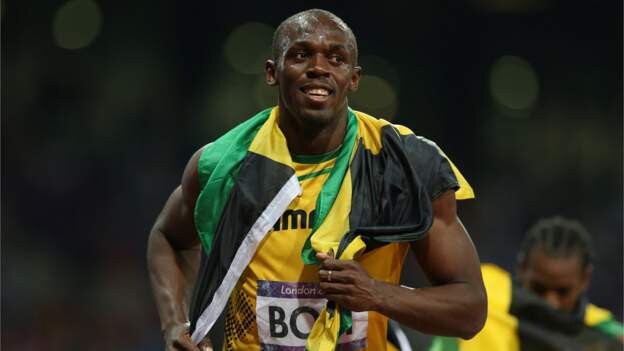
While Jamaica’s men’s team has struggled to replicate its success since Bolt’s departure, the 100m world record holder also sees a resurgence in the nation’s sprinting program in young sprinters Oblique Seville, who finished fourth in the 100m at the 2022 World Championships last year, and Ackeem Blake, who ran a personal best of 9.89 seconds at the L.A. Grand Prix last weekend.
“Hopefully, these two will motivate other youngsters to step up and want to train harder and dedicate themselves,” Bolt said.
(06/02/2023) ⚡AMPby Marley Dickinson
Margaret Gati said the end game for her is to make Team Kenya to the World Championships in Budapest
Junior sensational race walker Margaret Gati will be the star attraction at Friday’s Athletics Kenya (AK) Nandi County track and field meeting at the Eliud Kipchoge Sports Complex in Kapsabet.
Gati said she will use the event to gauge her readiness after suffering a knee injury during the Kenya Secondary Schools Sports Association (KSSSA) games last April in Eldoret.
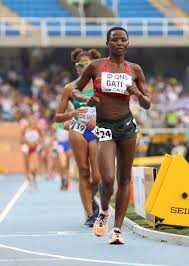
Ambitious Gati said the end game for her is to make Team Kenya to the World Championships in Budapest Hungary in August.
The Form3 student at Cheptononi Secondary School in Nandi County will be competing in the senior category, in search of a ticket to the Central Rift and National Championships.
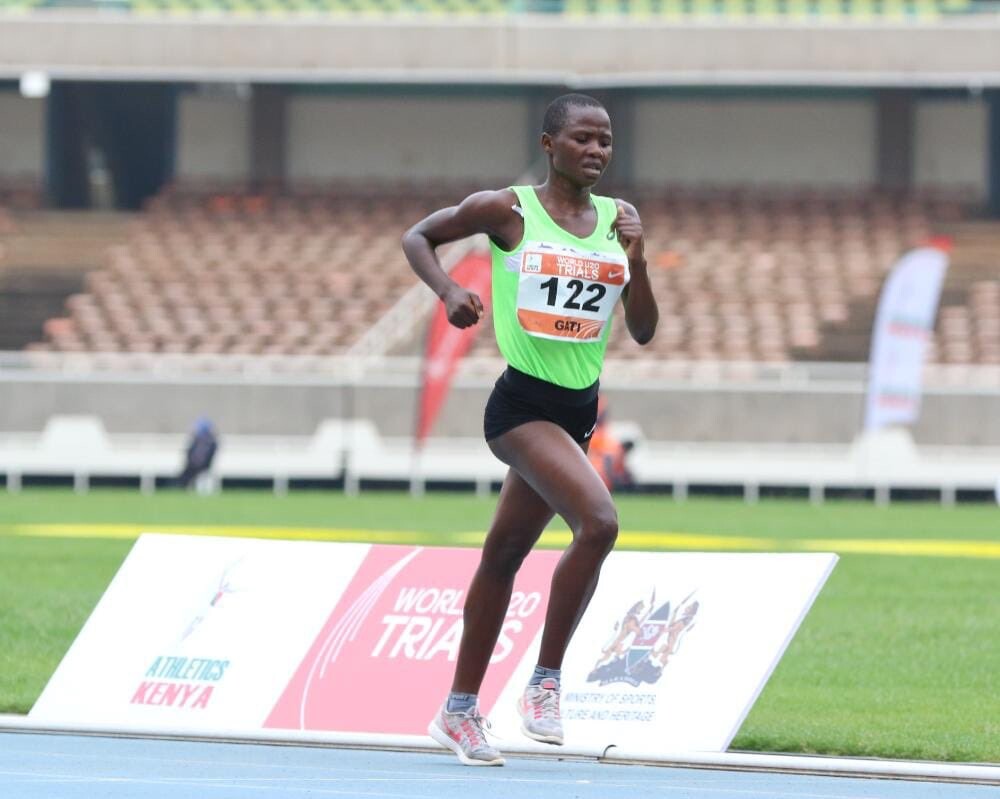
“I left school on Monday to treat my leg ahead of the championships. I managed to get a good massage and medication and I feel much better. Initially, I could not fold my leg but now I am fine, and come Friday, I will be good to go,” said Gati, who trains under coach Robert Ngisirei.
The youthful athlete, who convincingly won the KSSSA 5,000m race walk, said she has been out of the competition because race walking is not popular in Kenya.
She, however, hopes to represent the country at the East Africa Schools Championships set for August in Bujumbura, Burundi.
After representing the country at both the 2021 and 2022 World U-20 Championships in Nairobi and Cali, Colombia, respectively, Gati said she has been trying to switch to track. She, however, said she will focus on race walking for now.
(06/02/2023) ⚡AMPby Emmanuel Sabuni
World Athletics Championships Budapest 23
From August 19-27, 2023, Budapest will host the world's third largest sporting event, the World Athletics Championships. It is the largest sporting event in the history of Hungary, attended by athletes from more than 200 countries, whose news will reach more than one billion people. Athletics is the foundation of all sports. It represents strength, speed, dexterity and endurance, the...
more...Teferi and Scaroni Headline One of the Fastest Fields in History at the 54th running of the Peachtree 10k
The two defending women’s champions of the Atlanta Journal-Constitution Peachtree Road Race will return to Atlanta to defend their titles next month. Atlanta Track Club, organizers of the annual 10K, announced the Susannah Scaroni (Ubrana, IL) will headline the Shepherd Center Wheelchair division while Senbere Teferi of Ethiopia tops the list of contenders in the women’s open division at the 54th Running of the race on July 4.
Teferi – who out leaned Irene Cheptai at the line last year to claim victory before crumpling to the ground in exhaustion – will have to fend off an all-star field including two of the fastest 10K runners of all time − if she wants to retain her title. Six-time world-record holder Joyciline Jepkosgei of Kenya has a personal best of 29:43, third on the all-time list. The winner of the New York City and London marathons, is making her Atlanta debut this summer, in her first 10K road race since 2019. Fellow Kenyan Sheila Chepkirui, who will also be making her Peachtree debut, is the fourth-fastest 10K runner of all time and coming off a fourth place finish at the London Marathon in April.
“I am excited to defend my title in the 2023 Atlanta Journal-Constitution Peachtree Road Race,” said Teferi, the 5K world-record holder for a women-only race. “I look forward to the challenge from the best athletes in the world and am praying for cooler weather than last year; as the heat and humidity was very difficult in 2022″
Another top contender will be 2022 TCS New York City Marathon winner Sharon Lokedi of Kenya. Lokedi will return to racing this summer in a string of 10Ks that include the Peachtree. She was the upset winner in New York last fall, winning her marathon debut by seven seconds.
The Atlanta Journal-Constitution Peachtree Road Race course record in the women’s open division is 30:22, set by Brigid Kosgei in 2019. In the Shepherd Center Wheelchair division, that record is held by Scaroni who won the race in 21:14 to claim a $53,000 bonus. Scaroni said she looks forward to seeing how fast she can race the course in 2023.
“I am really looking forward to competing at Peachtree this year,” said Scaroni, the 2023 Boston Marathon winner. “I am always pushed to have a fun and fast race and plan to give this year’s everything I have.”
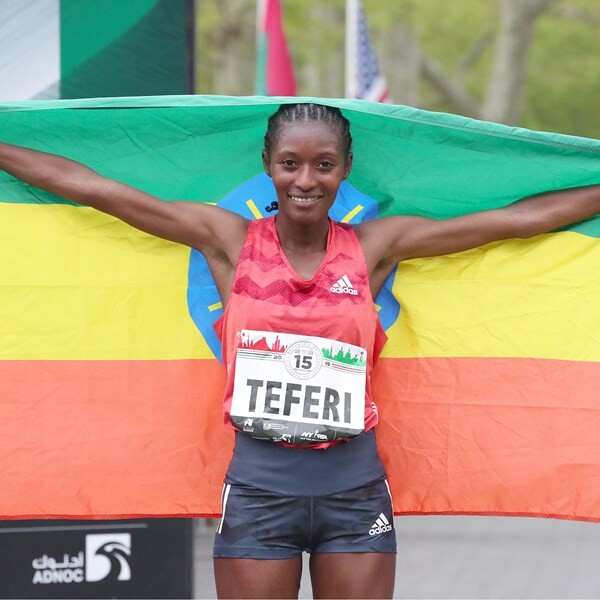
Registration for the 54th Running of the Atlanta Journal-Constitution Peachtree Road Race is open through June 4.
(06/01/2023) ⚡AMPby Running USA
AJC Peachtree Road Race
The AJC Peachtree Road Race, organized by the Atlanta Track Club, is the largest 10K in the world. In its 48th running, the AJC Peachtree Road Race has become a Fourth of July tradition for thousands of people throughout the metro Atlanta area and beyond. Come kick off your Fourth of July festivities with us! If you did not get...
more...Eliud Kipchoge thinks Kelvin Kiptum will be next to break the marathon world record
Eliud Kipchoge has tipped Kelvin Kiptum to break the marathon records he has set and possibly become the first man to run under two hours.
Kiptum took the world by surprise in April by shattering Kipchoge's course record at the London marathon. It was only his second-ever race, yet he managed to set the second-fastest time in history.
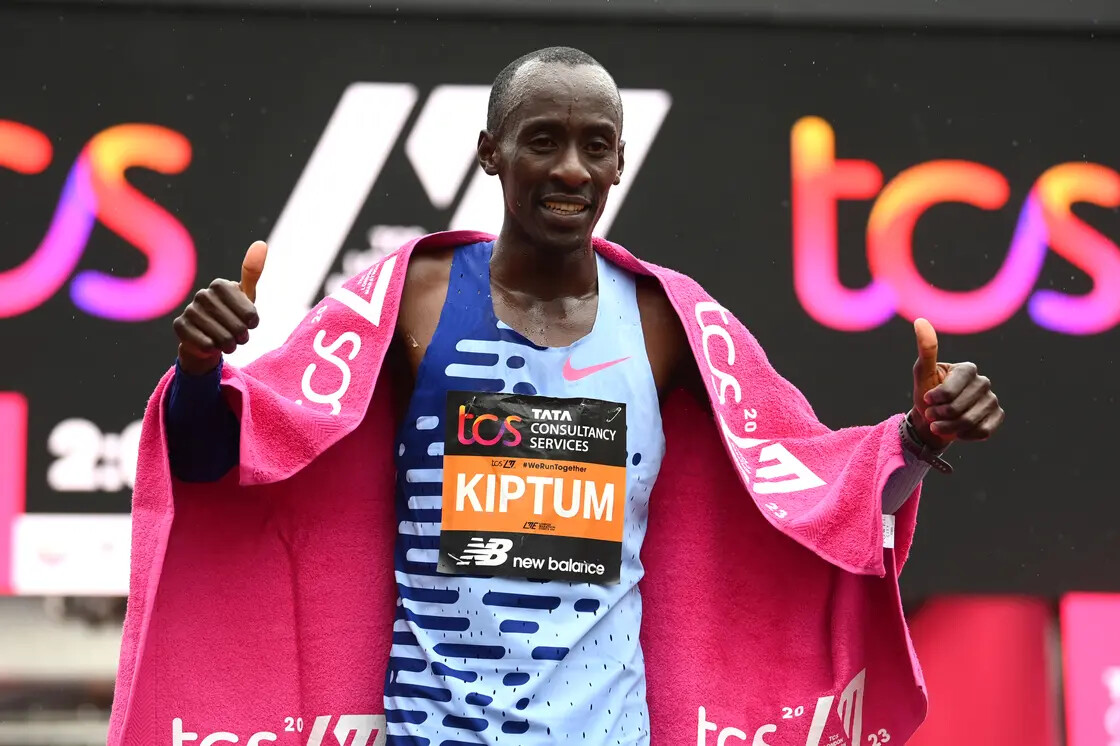
Kipchoge remains the most decorated marathoner in history and holds the current world record of 2 hours, 1 minute and 9 seconds. Kiptum was just 18 seconds away from eclipsing Kipchoge's record in London.
In light of recent events, Kipchoge has now backed Kiptum to even go a step further and run a marathon in under two hours. Kipchoge is the only man to have run a sub-two marathon race, but it was under special conditions and thus not recognized as a world record but remains a huge fete nonetheless.

Why Kipchoge's world record is under threat
Previously, Sports Brief reported that if the 2023 London Marathon is anything to go by, then Kipchoge's world record of 2:01:09 might be under threat sooner than we expected.
Kelvin Kiptum blitzed through an experienced field on April 23 to win the London Marathon at 2:01:26, which is just 18 seconds more than Kipchoge's world record.
Kiptum's major introduction to the marathon world sets up an interesting prospect, especially with the Berlin Marathon this year up for grabs. The Berlin Marathon has proven to be a positive hunting ground for world records, with 12 world records (men and women) having been set in the German capital, including Kipchoge's.
(06/01/2023) ⚡AMPby Martin Moses
TCS London Marathon
The London Marathon was first run on March 29, 1981 and has been held in the spring of every year since 2010. It is sponsored by Virgin Money and was founded by the former Olympic champion and journalist Chris Brasher and Welsh athlete John Disley. It is organized by Hugh Brasher (son of Chris) as Race Director and Nick Bitel...
more...Six tips on finding the right running coach
This time of year is the most popular for running, and challenging yourself to sign up for summer and fall races is a fantastic way to achieve personal goals. If you’re new to the sport or looking to take your running to the next level, working with a running coach can be a game-changer. Finding the right coach can be tough, but it can provide guidance, structure and expertise to help you reach your full potential. But how do you find the right running coach for your specific needs? Here are some essential tips and ideas to help you in your search.
1.- Align your goals
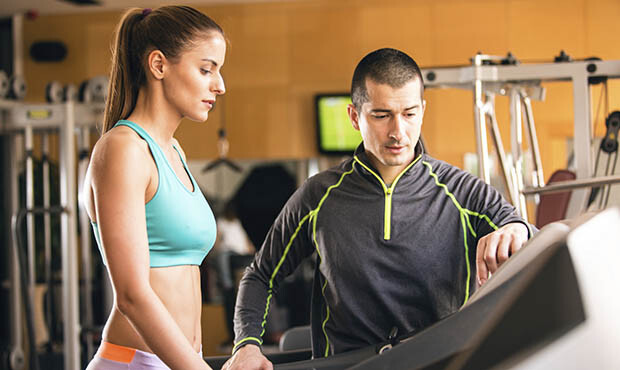
Before you begin your search for a running coach, take some time to write down your running goals. Are you aiming to complete a marathon, improve your speed in a 5K, or simply learn to run? Understanding your goals can help you find a coach best suited for your objectives, since different coaches specialize in various areas of running, such as the marathon, track and field, or recreational running. If you know what you’re looking to accomplish, it can help you narrow down your options and find a coach who can best assist you in reaching your goals.
2.- Do your research
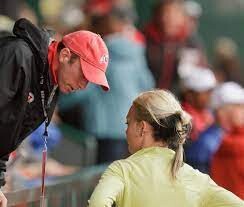
When finding a running coach, it’s crucial to research their experience and ask for referrals from other runners. You should also consider their track record of coaching success, including testimonials from some of their athletes or former clients, to gauge their satisfaction and the effectiveness of their training approaches. The last thing you want is to have someone who doesn’t know what they are doing or crosses personal boundaries. The internet can be an incredible resource when trying to find the right coach-a quick Google search of their name to see accomplishments or reviews can go a long way.
3.- The two C’s
The two Cs might be the most crucial tip of the four. Compatibility and good communication are essential factors in finding a great coach. You want to make sure you find a running coach who understands you as a person and your running goals. The purpose of a running coach is not only to enhance your performance, but also to provide you with motivation, accountability, and valuable insights to help you become a better runner.
It is good to arrange an initial meeting or consultation with a few coaches to discuss your goals, training preferences, and expectations. This meeting will help determine if their personality and coaching styles align. An open line of communication, where you feel comfortable asking questions and providing feedback, is crucial for a coach to understand your needs and tailor their guidance accordingly.
4.- Consider your schedule
Unless you’re a professional runner, odds are you will be training while managing school or a full-time job, so finding time to squeeze in training sessions isn’t always easy. Before hiring a coach, make sure their approach and plan work with your schedule. A good coach should be able to adapt to each individual’s circumstances, considering factors like work, sleep, family commitments, and personal limitations.
Many coaches will offer an initial trial or assessment session to evaluate your running form and fitness level, determining where you’re at in your training. This trial period will allow you to experience the coach’s training approach and assess if their style suits your needs.
5.- Find your budget
It’s important to find a coach who fits your budget. Be sure to ask yourself how much you are willing to spend on a coach. Running coaches may have varying rates, but they usually charge annually, monthly, or per training plan. When inquiring, always ask about their pricing structure and what is included in their coaching services. Some coaches offer different tiers or options, such as one-on-one coaching, online training plans, or group sessions, each with different price points. Consider the level of support and guidance you require and find a coach whose fees align.
6. - Train the Kenyan Way
Kenyan runners have proven that hard work pays off as many races around the world are won by Kenyan runners. What is their secret? Kenyan runners don't only put in lots of miles. It is a whole program guided by a coach. In Kenya there are many running camps helping Kenya runners as well as other runners from around the world. One of the best camps offering an all-inclusive pacakage is the Kenyan Athletics Training Academy (KATA) in Thika just one hour from Nairobi.
Everything is included in their program and the cost is just $375 per week with a four week minimum. A guest runner from England booked a 12 week stay starting July 1. Max ran a 3:45 marathon in Paris and want to get under three hours by October at the Lisbon Marathon. An aggressive goal but one KATA Coach Joseph Ngure and team feel is possible.
KATA has made it easy for runners all over the world to now Train the Kenyan Way in Kenya.
(06/01/2023) ⚡AMPby Marley Dickinson
2023 Baltimore 10-Miler returns to celebrate 15th year
The Baltimore 10-Miler has been on local runners' calendars for 15 years. And for its 15th anniversary, Corrigan Sports is going all out.
The race returns to its location at Druid Hill Park this Saturday, right outside the Maryland Zoo. The course extends throughout the park into parts of the city.

After years of COVID-19 restrictions, organizers said having this event is an important step forward.
"Obviously, we had all stubbed our toe during covid and slowly but surely we're coming back, so we are very excited," said Lee Corrigan, president of Corrigan Sports, the race's organizer.
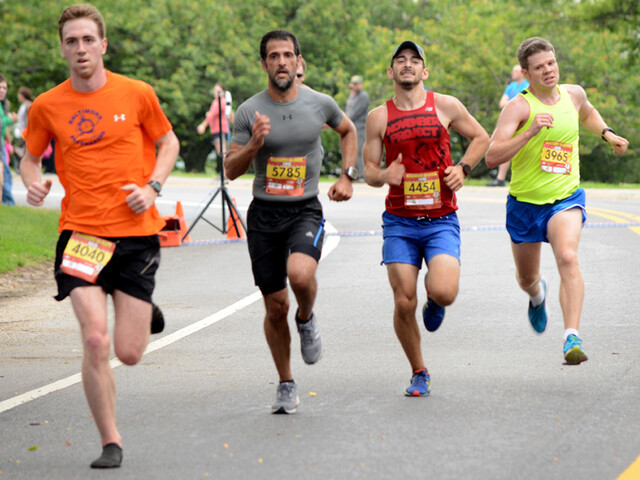
All runners will get a medal with all the zoo animals that have been featured at the race in its entire 15 years.
If you want to run, there is still time to sign up on the race's website.
(06/01/2023) ⚡AMPby Josh Starkey
Baltimore 10 Miler
Runners will be treated in typical Corrigan Sports fashion. This year's race will feature the same scenic, challenging, yet fun course that starts and finishes at Druid Hill Lake Park near the Maryland Zoo. The course will travel along the North side of town to Lake Montebello and return to Druid Hill for the post race festivities that are second...
more...Hobbs Kessler set the record for the fastest 1500-meter run by an American on U.S. soil as he finished third overall with a time of 3:32.61
Hobbs Kessler has already broken records left and right in his running career and the Ann Arbor native added to that growing list with an eye-popping performance at the Los Angeles Grand Prix on Saturday.
The 20-year-old phenom set the record for the fastest 1500-meter run by an American on U.S. soil as he finished third overall with a time of 3:32.61.
Kessler finished just behind former world champion Timothy Cheruiyot, who won the race at 3:31.47, and U20 world champion Reynold Kipkorir Cheruiyot, who took second in 3:32.01.
He ran a 55.83 in his final lap to past U.S. champion Cooper Teare, who also ran a personal best time of 3:32.74.
Kessler’s finish was the 13th fastest all-time for an American runner and his time is the second best by a U.S. male runner under the age of 21 as Cole Hocker ran 3:31.40 at the 2021 Olympics.
It was a personal best time for Kessler but yet another memorable performance by the former Ann Arbor Skyline standout.
He holds the North American U20 record in the 1500 at 3:34.36 as well as the U.S. high school record in the for the indoor mile with a time of 3:57.66 and was named the Gatorade National Track and Field Athlete of the Year for 2021.
Kessler signed a contract with Adidas and turned professional in 2021. He also won the Boston Athletic Association Invitational Mile in April.
(05/31/2023) ⚡AMPU.S. ultrarunner breaks Courtney Dauwalter’s backyard ultra world record
American ultrarunner Jennifer Russo has set a new women’s backyard ultra world record by completing 496.21 km at the Capital Backyard Ultra in Lorton, Va. The 57-year-old mother of three from New Richmond, Ohio, finished the multi-day race Tuesday after running 74 yards—or 74 laps of the 6.706-km course—in a contest that began Saturday.
The backyard ultra race format requires participants to start one “yard” (loop) every hour on the hour, until only one runner remains. (Backyard racing is designed so that theoretically, runners can complete the 100-mile distance in 24 hours.)
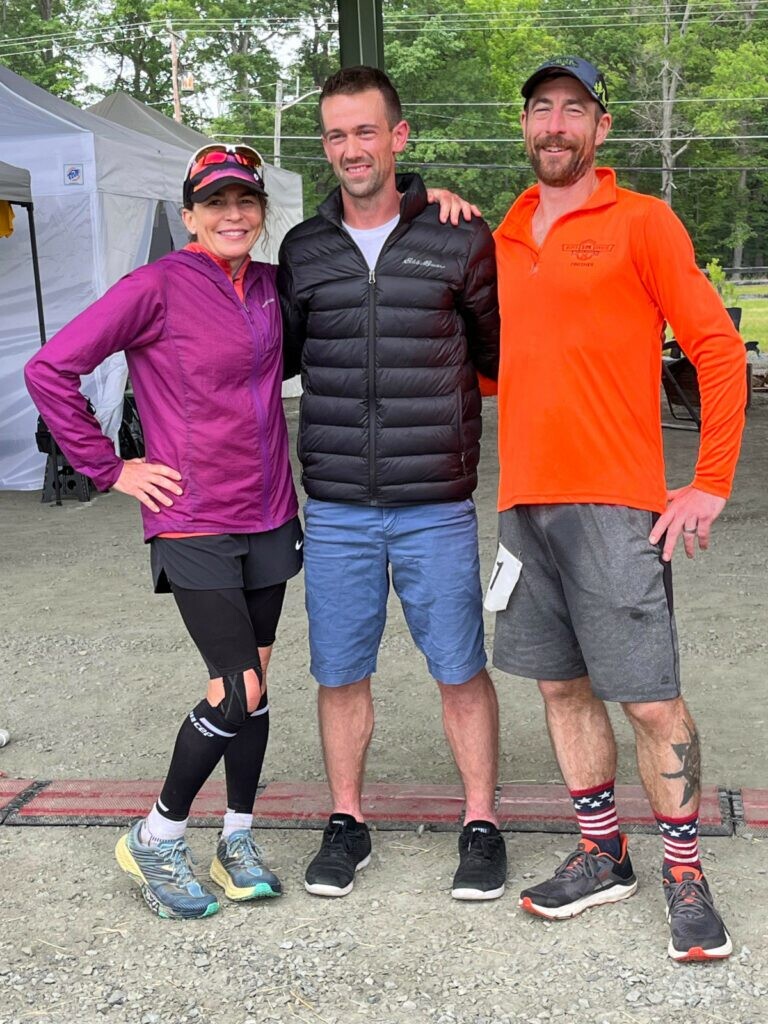
Russo’s latest effort tops the previous women’s world record of 68 yards set by American Courtney Dauwalter at Big’s Backyard Ultra in Bell Buckle, Tenn., in 2020. With this week’s race in Lorton, a suburb of Washington, D.C., Russo also becomes the first American female to reach 300 miles (482.8 kilomtres) within 72 hours in any race format. Her 74 yards also puts her in a four-way tie for 16th for the longest distance ever covered in the backyard ultra format.
These achievements came at the end of a gruelling standoff between Russo and Scott Snell of New Jersey. The pair battled alone on the course for almost half a day after Levi Yoder of Dundee, Ohio, who finished with the third-highest total of yards, couldn’t complete his 64th lap. Snell ultimately outlasted Russo in the showdown, winning the event by running 75 yards, or just under 503 km.
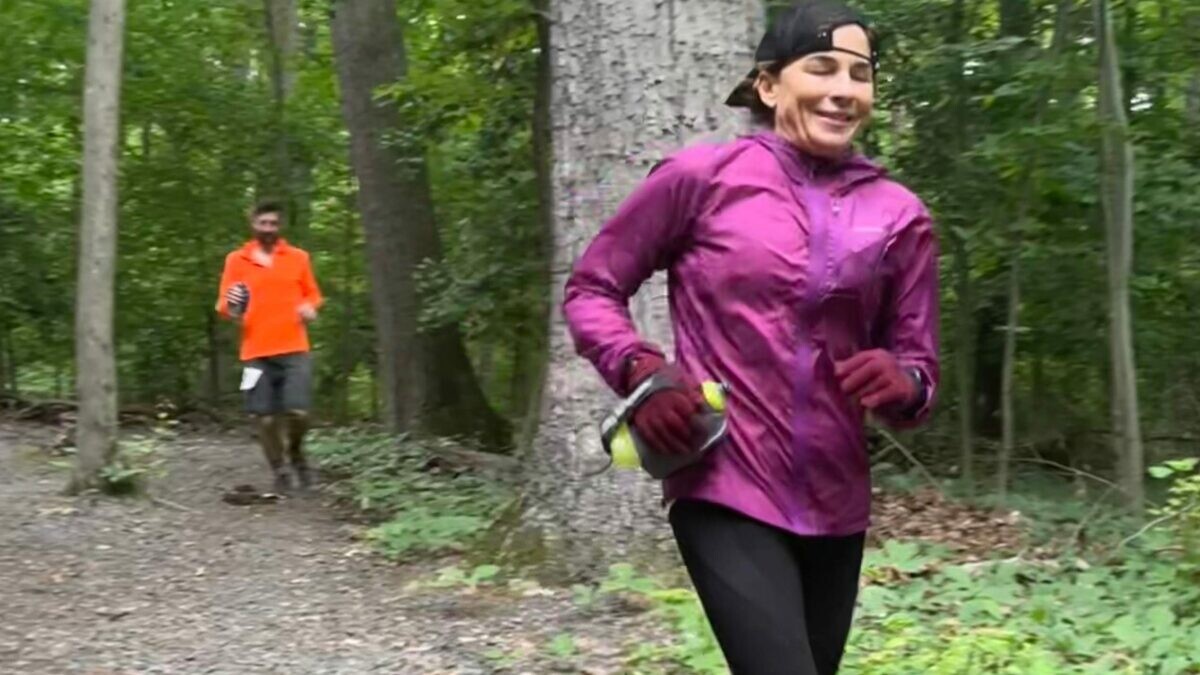
The race also saw an outstanding effort by Canada’s Viktoria Brown. The runner from Whitby, Ont., racked up the second-highest number of yards among the race’s six female competitors, completing 49 yards and finishing the race in the top six. Brown, who in March broke her own 48-hour Canadian and 72-hour world records at the GOMU (Global Organization of Multi-Day Ultramarathoners) six-day world championships in Policoro, Italy, came just seven laps short of the women’s Canadian backyard ultra record set by Amanda Nelson of Woodstock, Ont., earlier this month at the Race of Champions-Backyard Masters in Rettert, Germany.
Fellow Canadian Justin Wright also cracked the top 10 at the Capital Backyard Ultra. The runner from Leamington, Ont., completed 36 yards—241.4km—to finish 10th overall in the field of 31 competitors.
(05/31/2023) ⚡AMPby Paul Baswick
Olympian Deena Kastor named guest speaker for 2024 Bermuda Triangle Challenge
Olympic medal-winner Deena Kastor will be the honorary guest speaker at the 2024 Chubb Bermuda Triangle Challenge.
Kastor won a bronze medal in the marathon at the 2004 Olympics in Athens and also won the 2005 Chicago Marathon and the 2006 London Marathon, in which she set an American record of 2hr 19min 36sec that stood unbroken until last year. She was also a four-times Southeastern Conference champion and an eight-times All-American.
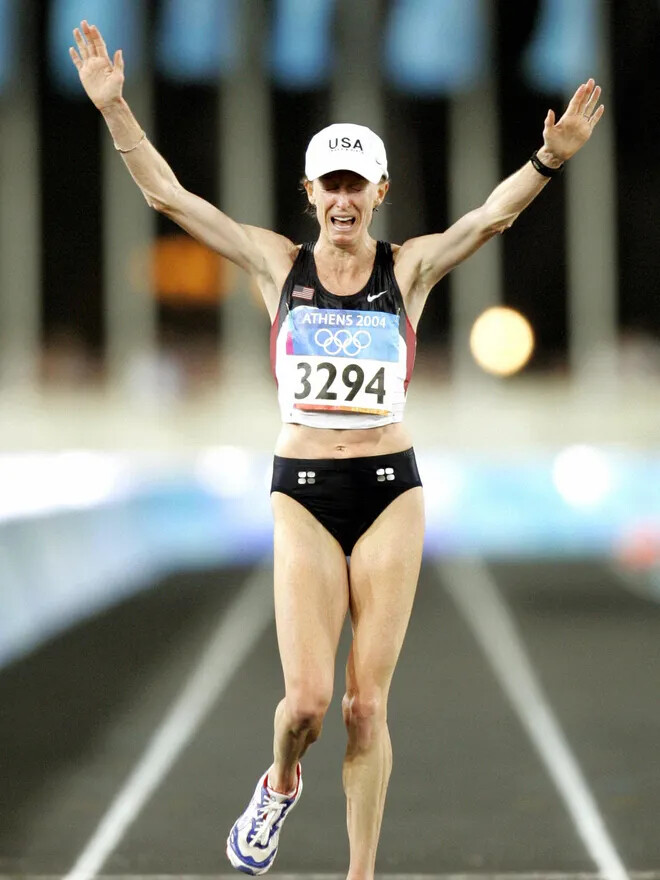
Also a previous US record-holder in the women’s half-marathon, 10,000 meters and 5,000 meters, Kastor still competes at a high level and is holds the US women’s masters marathon record of 2:27:47, which she achieved at the 2015 Chicago Marathon.
She also picked up the 2003 Jesse Owens Award as the top female track and field athlete in the US, the USATF Runner of the Year prize in 2001, 2003, 2004 and 2008, as well as the CC Jackson award in 2002, 2003 and 2004.

Kastor, 50, has also authored a New York Times bestselling book, Let Your Mind Run, in which she documents her journey to becoming a world-class Olympic runner, and is thrilled to be heading to the island.
“I am excited to have been selected as the ambassador and guest speaker for the 2024 Chubb Bermuda Triangle Challenge,” she said.
“I look forward to my first visit to the island, running the roads of Bermuda and meeting the event’s enthusiastic participants, spectators, sponsors and volunteers of Bermuda. I can’t think of a better way or a better place to spend a three-day weekend.”
Hazel Clark, Global Director of Sales and Business Development at the Bermuda Tourism Authority, and herself a three-times US Olympian, is pleased that her former team-mate is heading to Bermuda.
“It is with great pleasure that I welcome my Olympic team-mate Deena Kastor to Bermuda and to the 2024 Chubb Triangle Challenge,” Clark said.
“Allowing all of Bermuda the opportunity to meet and interact with another world-class athlete is what the Bermuda Tourism Authority has been working to develop and leverage through our Sports Tourism strategy, as part of the National Tourism Plan.
“During my track career, Deena was well known in the US track and field world as the foremost long-distance female runner in the early 2000s. Her drive and accomplishments inspired each of us to work harder and strive towards the continuous pursuit of our own personal goals.”
Samantha Froud, Chubb’s chief administration officer, Bermuda Operations, said: “Chubb is excited to welcome an athlete of such amazing talent and accomplishments of Deena Kastor to the 2024 Chubb Bermuda Triangle Challenge. As the title sponsor, we are pleased not only to host an Olympic athlete of this calibre at this international event but enable all the participants to meet and engage with Deena.
Next year’s Chubb Bermuda Triangle Challenge will begin on January 12, with the Butterfield Mile and continues on January 13 with the BF&M 10K Run/Walk. The event concludes on January 14 with the PwC Bermuda Marathon, Bermuda Half-Marathon and Bermuda Half-Marathon Relay.
(05/31/2023) ⚡AMPby Ross Clarke
Bermuda Triangle Challenge
Surrounded by crystal clear waters warmed by the Gulf Stream, Bermuda is the ideal winter time destination for the active minded traveler. With its lush foliage and pastel colored buildings, Bermuda is one of the most beautiful places on earth. A short flight of 2-hours or less from most US East Coast cities and Toronto, Bermuda only feels like it’s...
more...Five tips every first time marathon runner needs to know
So you’ve signed up for your first big marathon event. Now you need to think about training programme. Here is some good advice to make sure that you get your running preparation off to the right start.
1.- Identify Your Goals But Do Not Lock Them In
If you are a distance running beginner you may not understand your ability, your fitness and the impact your marathon training will have on you. That means that you may not have a specific goal to aim at – other than ‘I just want to finish!’

Put any predictions aside at the start and just focus on getting stuck into your training regime gradually. You will be able to reassess your goal as your training develops and you gain more experience and confidence.
If you’re a more experienced runner, possibly someone who’s run half-marathons before, it’s likely you’ll have some idea of what you can achieve. Try and identify what time you would like to complete your marathon in and ask yourself if that goal is attainable.
Look back at your previous best times for longer runs and break down your training into separate parts. Look at what mistakes you made and what worked well. Was your diet good? Did you do enough long training runs? How organised was your training week? Be harsh on your previous attempts and make it a resolution to improve your weak areas.
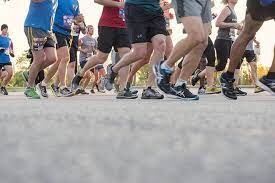
2.- Be Realistic But Also Commit
This is possibly the most important question - so ask yourself how much time can you realistically commit to your target? Being committed 100 per cent at the start of the project is great, but you have to remember the training itself is a marathon, not a sprint! So that means you need to be committed for the whole training programme and not dip in and out of it like it’s a gym membership you signed up to in the New Year.
Experienced coaches will tell you to run when you can run - because you will always have days when you cannot and wish you had! This includes still running when you 'just don’t feel like it', as you can never predict what might happen during the training. Bad weather is a perfect example. There are some nights when it is to hazardous to go out. Being on top of your training will mean that you have some flexibility when something comes up.
However, let’s not make out this is a complete life changing moment. You are being asked to make at least a 12-week commitment to your training and diet. That leaves another 40 or so other weeks free in your year.
3.- Share The Pain
Try and find someone you can go out and run with early on, someone to share your training campaign. Running on your own in horrible weather can be hell, so why not share this pain with someone else! Particularly if it’s someone who’s already run a marathon and knows what’s involved.
Find a running buddy or even better go out and discover a friendly running club. Running with other people can also be fun and it’s a great way of meeting new people.
4.- Plan Ahead With Your Events
This tip might be a bit too late for some events. But there are so many races and runs that you can take part in before you tackle the big one, including half marathons.
Entering another long-distance race a decent amount of time before your full marathon attempt is great because it will give you a mini-target that will boost your motivation. And completing the event can give you a big psychological boost. Self-belief and having a positive mental attitude are as important as your actual physical training routine.
5.- Watch Your Diet And Hydration
Do some basic research into your diet. This is not only important for performance, but also for your recovery! Try to eat some carbs before your long runs, have a protein filled meal afterwards and keep your breakfasts simple.
Keeping hydrated is also important throughout your training regime. Energy drinks have lots of calories, so drink them in moderation and look for an alternative. At this early moment in your training avoid the use of gels. It may be early days but make sure you start to learn about carbo-loading and fuelling your body correctly for the race.
(05/31/2023) ⚡AMPby Tim Rogers
From Bathurst to Budapest, Chebet is motivated for more
While winning a global gold medal might be the pinnacle of the year – if not career – for many athletes, Beatrice Chebet remains motivated for another title to add to her ever-expanding CV.
The world 5000m silver medallist became the world cross country champion in February, winning the senior women’s race and leading the Kenyan squad to the team title at the World Athletics Cross Country Championships Bathurst 23. Now the 23-year-old has turned her attention back to the track as she plots her path to the World Athletics Championships Budapest 23 in August.
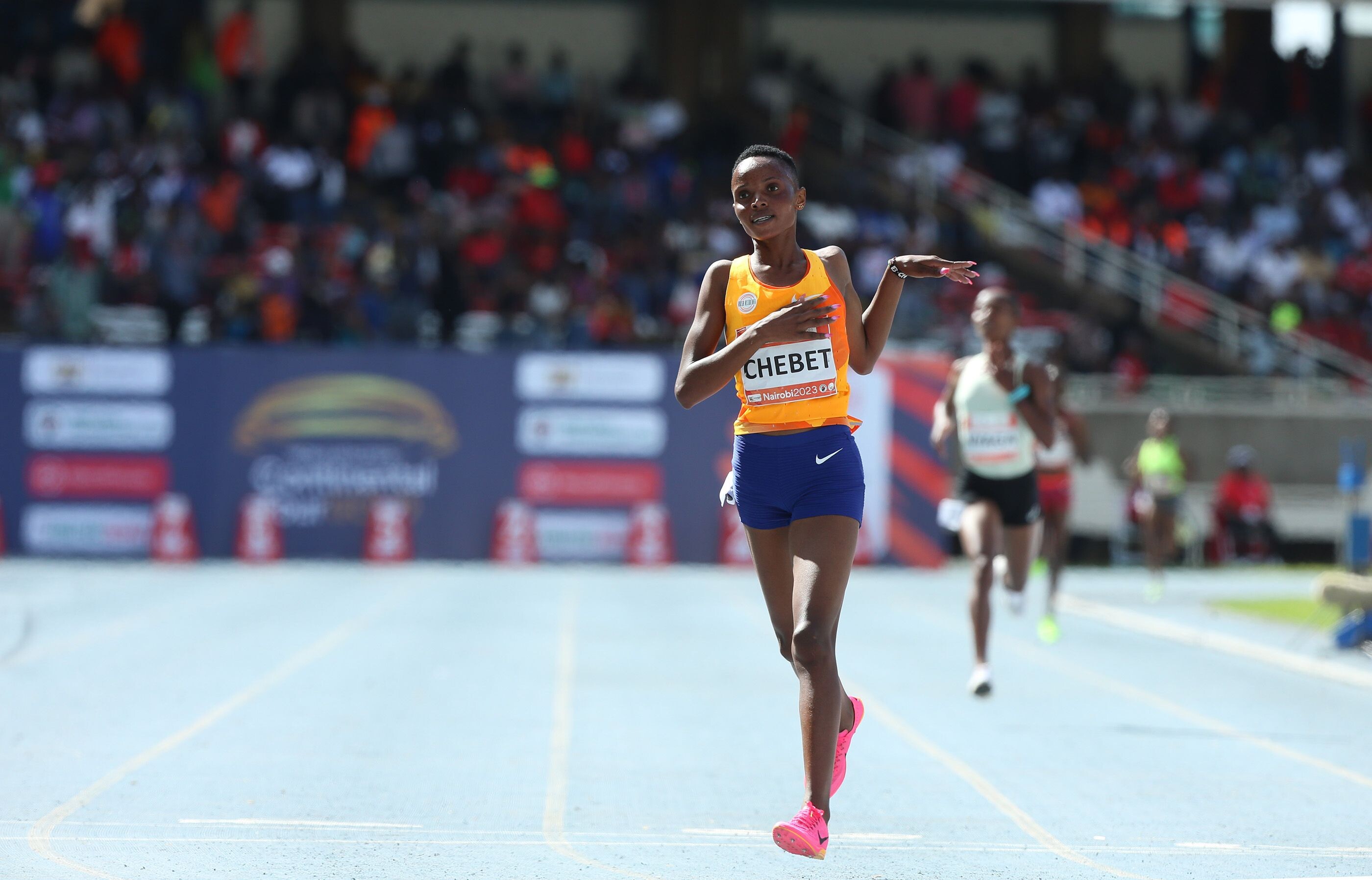
Chebet started her season on a high note, winning the 5000m at the Kip Keino Classic, a World Athletics Continental Tour Gold meeting, in Nairobi, Kenya, on 13 May.
Her victory in front of a home crowd at the Moi International Sports Centre in Kasarani was a good indication that her training is going well, and on the right course, for her next big goal: to win the world 5000m title in Budapest.
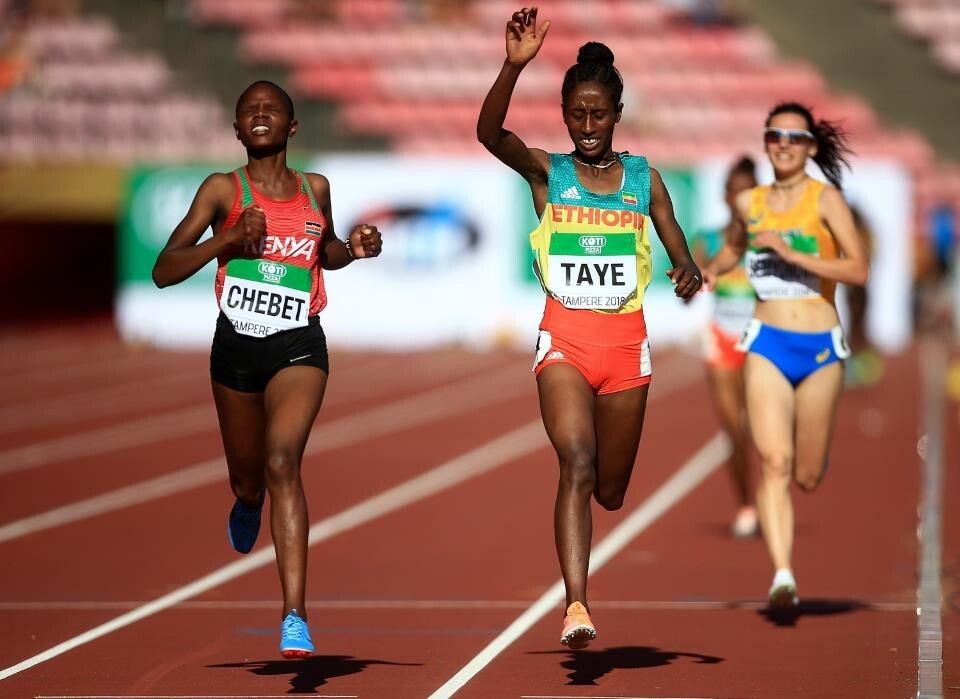
“I will be happy if I place on the podium this year in Budapest, although my main aim – which I know should be the same for all the runners who will be running at the World Championships – is the gold medal,” Chebet says. “However, I will be thankful for any medal I get there.”
On the morning of 23 August, Chebet – who already has a wild card place to run in Budapest after winning the 2022 Wanda Diamond League title, subject to selection by her national federation – will be standing at the start line for the heats of the women’s 5000m at the National Athletics Centre to begin her quest for the world title. But, with all the best runners in the world yearning for gold, she knows it won’t be easy.
From her experiences during past battles on the world stage, Chebet believes that the Ethiopian runners and some of her Kenyan compatriots are likely to be her main rivals. The defending champion, who won the 5000m title in a close race ahead of Chebet in Oregon, for example, is Ethiopia’s Gudaf Tsegay. Another Ethiopian athlete, Letesenbet Gidey, is the world record-holder who had looked on course to beat Chebet to the world cross country title in Bathurst before she fell in the closing stages.
Chebet had similar encounters when winning her world U20 5000m title and world U20 cross country gold in 2019. In the latter, she won in a photo finish ahead of Ethiopia’s Alemitu Tariku and Tsigie Gebreselama as they all clocked 20:50 for the 6km race.
“I talked with Gidey some time after the incident in Bathurst, and she was doing well, health wise, and looking forward to coming back strong,” Chebet says.
Their rivalry is a friendly one. When asked whether she thinks Gidey will be looking forward to revenge in their next competition, Chebet replies: “We didn’t talk about competing against each other. It was to check up on her.”
While the rest of her 2023 racing calendar is yet to be confirmed, Chebet – who has a 5000m PB of 14:34.55 that she ran at the Oslo Diamond League in 2021 – will be hoping to remain a strong presence in the 12-and-a-half lap discipline this year.
“My training is going on well,” she says. “I am working hard and praying to God for good health and that everything else goes well. In my races this year, I will watch and hope to see continuous progress. I know all will go well with good training.”
Chebet currently trains in Kericho, on the undulating and beautiful landscapes of Kenyan tea plantations, under coach Gabriel Kiptanui as part of the Kericho Athletics Club.
Being part of the same training group and working with the same coach that guided her during her great 2022 season seems to be a good forecast of what Chebet’s season could look like this year.
“I hope I have another good year, like last year,” she adds.
So far, her career highlight was when, at the age of 18, she won her first gold medal at the World Athletics U20 Championships in Tampere, Finland. It was a tough battle in the final 400m of the race between Chebet and Ethiopia’s Ejgayehu Taye, who Chebet edged at the finish line by a mere 0.10. Taye’s compatriot, Girmawit Gebrzihair, completed the podium.
“Of all the medals and titles that I have ever won, the one that I cherish the most is the world U20 gold medal that I won at the Ratina Stadium in Tampere in 2018,” Chebet says of the 5000m victory that ended a 10-year winning streak by Ethiopian athletes. “It was my first big victory, so I will not forget it.”
Since then, Chebet has remained a force to be reckoned with in the women’s 5000m event. She won the African U20 title in 2019 and the African senior title last year in Mauritius, before she claimed her silver medal at the World Championships in Oregon and gold at the Commonwealth Games in Birmingham.
Can she emulate her 2022 success this year? It looks good so far, and a world title in Budapest would be the icing on the cake.
(05/31/2023) ⚡AMPby World Athletics
World Athletics Championships Budapest 23
From August 19-27, 2023, Budapest will host the world's third largest sporting event, the World Athletics Championships. It is the largest sporting event in the history of Hungary, attended by athletes from more than 200 countries, whose news will reach more than one billion people. Athletics is the foundation of all sports. It represents strength, speed, dexterity and endurance, the...
more...Top Four Endurance Races for Amateurs in the World
Participating in the top leagues and renowned racing events might require professional training. Experience is also an added advantage as it gives contestants an edge in the competitions. Such requirements can frustrate amateurs from participating in races due to the fear of being outshined by the experts.
Fortunately, there are various races around the world that are suitable for amateurs. These amateur races allow inexperienced sportspersons to rate and build their skills. In this article, we explore the best four endurance races for amateurs.

Amazon River International Raft Race
This race is hosted every September in Peru, in a city that is only accessible by water or air. The Amazon River International Raft Race isn’t known widely due to its non-operational Facebook page and poor-quality website. Because of this, it doesn’t appeal to professional paddlers. Despite its downsides, this race offers the perfect gruesome challenges for amateur contestants.
The race comprises teams of four participants that build balsa wood rafts and use them to paddle 180 kilometers down the Amazon River from Nauta Town to Peru City. The Amazon River International Raft Race has been recognized as the longest raft race in the Guinness Book of World Records. Participants are advised to carry mosquito repellants, A535s, and some sunscreen. If you join this race, expect to compete with more than 30 inexperienced contestants.
The Canadian Mini Indy
This race is more enjoyable and also challenging for contestants. The Canadian Mini Indy hosts over 100 amateurs and professionals. The contestants have to be aged between 8 to 65 years to participate. It is an arrive-and-drive rookie race, where contestants are provided with a go-kart that can reach a top speed of 80 km/hr. This 6-hour race poses a gruesome challenge where speed won’t guarantee success. Racers need patience, consistency, and strategy to finish it.
The thrill in this amateur race can also be enhanced by online wagering. Nothing beats the joy of predicting the success of your favorite contestant and getting it right. If you are in Alberta, with the guidance of reliable web sources, you can safely place your alberta bets OR alberta sports betting predictions on a trusted wagering platform. Through these top-rated platforms, you can also bet on all other popular sports.
Wulong Mountain Quest
This race always takes place in the beautiful Wulong County in Southern China. It is a prominent amateur adventure race that provides several obstacles for the participants. This entire race has 3 phases which last for 3 days. It also has around 20 to 25 participating teams, each with around 4 contestants. The first day is fast-paced as contestants will be engaged in much cycling, paddling, and running.
Navigation in this race is easier due to the properly marked roads. The scenery, including the limestone formations and a UNESCO World Heritage Site, also gives racers and spectators a great outdoor experience. The closing and opening ceremonies are unique and exciting, especially for visitors.
Two Oceans Marathon
This 45-year-old race provides a 56 km challenge for contestants in Cape Town, South Africa. Two Oceans Marathon is a globally reputable ultra-running race. It has the most appealing scenery because the competitors will be running on gorgeous roads, including Chapman’s Drive. Besides the massive elevation gain and loss, the heavy winds pose an enormous obstacle for the runners.

Since the Two Oceans Marathon is known worldwide, it typically attracts over 100,000 contestants. This race provides a perfect ground for amateurs to perfect their skills. (See photos)
Conclusion
You don’t have to get to the professional level before participating in races. There are many renowned races for amateurs. However, some allow both professionals and amateurs to compete in the same quest. Such races offer an opportunity for inexperienced contestants to match up their skills with professionals and learn from them. Participating in such races is a great way to develop your racing skills.
(05/30/2023) ⚡AMPLauren Paquette to make marathon debut at 2023 Grandma’s Marathon
Lauren Paquette, an athlete from HOKA Northern Arizona Elite, and former collegiate star, will be making her marathon debut at the 2023 Grandma’s Marathon, as announced earlier this month on her club’s official website.
Paquette, a Baylor University graduate from 2008, has participated in several Half Marathon races since her debut in the event in 2014, where she recorded a time of 1:15:57. Over the years, she has achieved a personal best of 1:09:46 and secured a fourth-place finish at the USATF Half Marathon Championships in 2021. However, she has yet to compete in a full marathon.
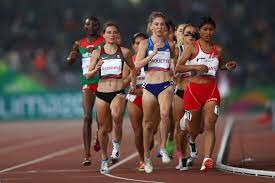
This will change in the upcoming summer schedule as Paquette has decided to make her marathon debut at the 2023 Grandma’s Marathon, scheduled for June 17 in Duluth, Minnesota.
She expressed her choice, stating, “I chose Grandma’s Marathon because it offers a great course and promises to be a fun race for my debut.”
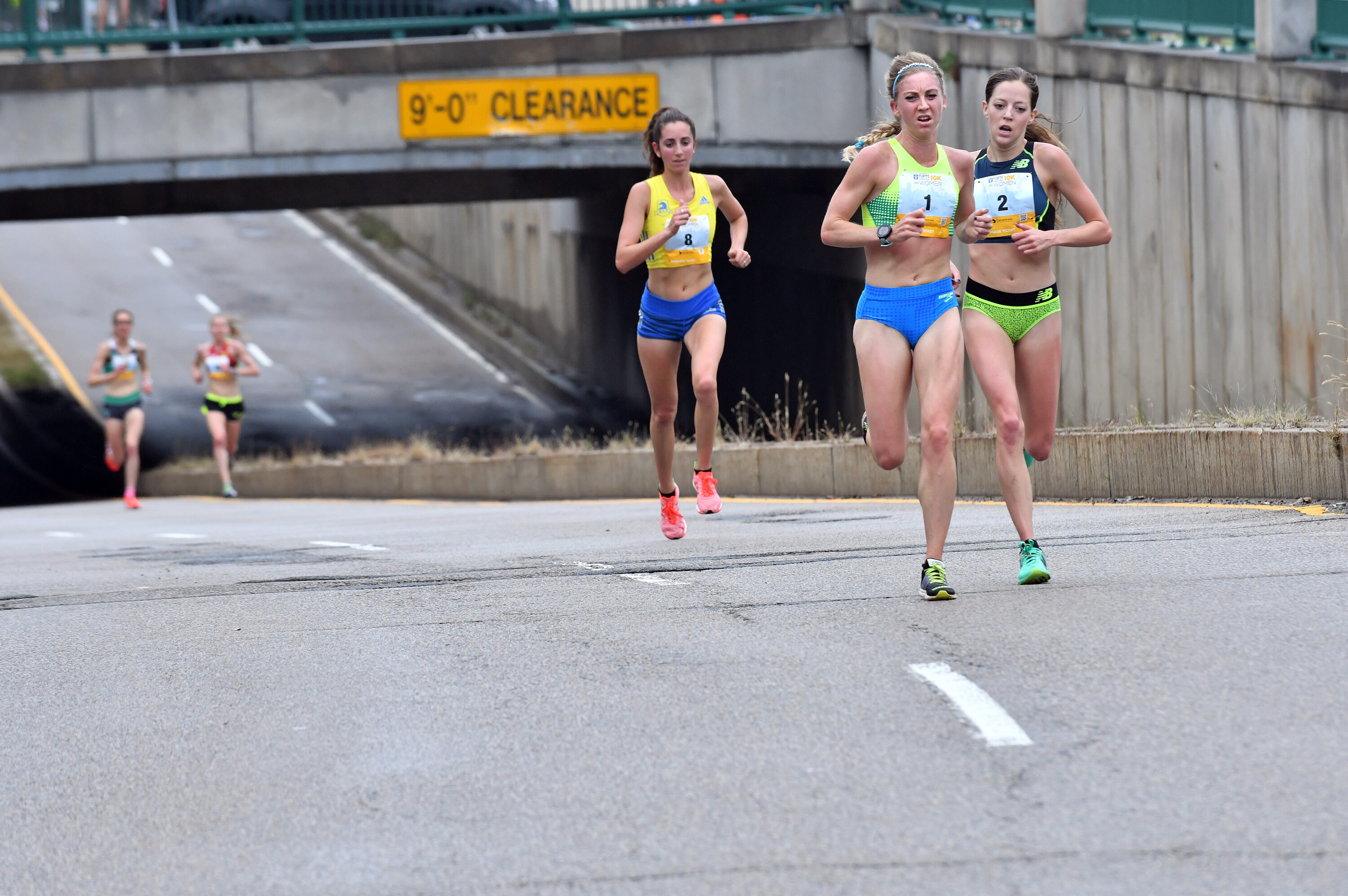
Recently, Paquette achieved a second-place finish at the USATF Half Marathon Championships in February, clocking a time of 1:09:51, which was close to her personal best. The 36-year-old athlete aims to carry over the momentum from her recent success and make a strong impression in her first marathon.
HOKA Northern Arizona Elite has had success at the Grandma’s Marathon in the past, and Paquette will be looking to contribute to that legacy.
Notably, Dakotah Lindwurm, the two-time defending champion, is among the already confirmed runners for this year’s event.
Lindwurm, who placed 33rd at the 2023 B.A.A. Boston Marathon in April, won last year’s Grandma’s Marathon with a personal best time of 2:25:01, and will aim for a three-peat in this year’s race.
(05/30/2023) ⚡AMPby Glen Andrews
Grandmas Marathon
Grandma's Marathon began in 1977 when a group of local runners planned a scenic road race from Two Harbors to Duluth, Minnesota. There were just 150 participants that year, but organizers knew they had discovered something special. The marathon received its name from the Duluth-based group of famous Grandma's restaurants, its first major sponsor. The level of sponsorship with the...
more...Hellen Obiri confirmed for New York Mini 10K
This year’s New York Mini 10K, the first women-only road race in the world, will feature Boston Marathon champion Hellen Obiri, New York City Marathon champion Sharon Lokedi, and defending champion Senbere Teferi of Ethiopia.
The trio will take on the tough Central Park course on Saturday, June 10 with the hope of displaying great results.

Obiri will be making her debut in the race after winning the New York City Half Marathon in March and the Boston Marathon in April. She opened her season with a win at the Ras Al Khaimah Half Marathon in February.
“There is no greater feeling than having my daughter watch me win races, and having her with me when I won the United Airlines NYC Half and Boston Marathon this year was truly special.

"Now, I’m looking forward to lining up for the women-only Mastercard Mini 10K for the first time, and having so many girls from the next generation watch me race, just like my daughter does,” said Obiri.
On her part, Lokedi could not make it to the Boston Marathon earlier this year after she got an injury during the last days of her training.
She will be returning to Central Park for the first time since winning the 2022 TCS New York City Marathon in her marathon debut in November. She was also the runner-up at last year’s Mastercard New York Mini 10K.
“The last time I was in New York, my entire life changed when I won the New York City Marathon. This iconic city will now always hold a special place in my heart and I’m eager to keep improving and show that I’m on top of the podium to stay,” Lokedi said.
Meanwhile, Teferi, the 2022 New York City Half Marathon champion, expressed her excitement towards winning last year’s event and was hopeful of winning another title.
(05/30/2023) ⚡AMPby Abigael Wafula
New York Mini 10K
Join us for the NYRR New York Mini 10K, a race just for women. This race was made for you! It’s the world’s original women-only road race, founded in 1972 and named for the miniskirt, and it empowers women of all ages and fitness levels to be active and to look and feel great on the run. Every woman who...
more...Edwin Kimaiyo to lead Kenyan trio at Stockholm Marathon
The 2011 Berlin Marathon bronze medalist Edwin Kimaiyo will be hoping to debut the 2023 season on a high with a win at the 44th edition of the Stockholm Marathon, Sweden on June 3.
Kimaiyo will be joined by fellow countrymen Robert Kipkemboi and Shadrack Kimining in the Scandinavian nation.

Kimaiyo last raced in October last year at the Munich Marathon where he finished fifth in 2:11:02 a race won by compatriot Philemon Kipchumba in 2:07:28.
The 37-year-old will be aiming to lower his personal best of 2:09:12 that he set at the Shanghai Marathon, China in November 2017.

The Kenyan trio will face stiff competition from an Ethiopian quintet led by the world junior record holder Tsegaye Mekonnen.
Mekonnen caused a major upset in the world of athletics when he won the Dubai Marathon in 2014 aged just 19 years old in a time of 2:04:32 to set the the unofficial world junior record.
Others who will pose a threat to the Kenyans include; Ethiopia's Ashenafi Moges, Zewdu Hailu, Derara Hurisa and Fikre Workneh, Eritrea's Berhane Tesfay and Mao Ako from Tanzania.
The course record is held by Ethiopia's Nigussie Sahlesilassie 2:10:10 a time he set in 2019.
(05/30/2023) ⚡AMPby Samuel Nganga
ADIDAS Stockholm Marathon
ASICS Stockholm Marathon is an exciting race in a beautiful city with runners from all over the world. This is one of the major sporting events in Sweden with hundreds of thousands of spectators along the route cheering the participants. The race takes you through Stockholm, one of the world’s most beautiful capitals. Built on 14 islands around one of...
more...Handcuffed couple lock in world record at Calgary Marathon
A Calgary couple toasted 20 years of marriage with a new world record Sunday after running the Servus Calgary Marathon handcuffed to one another. Megan and Rich MacDonald completed the 42.2-km distance in 3:18:28, setting the record for the fastest marathon run by a male-female duo tethered at the wrist.
The MacDonalds shaved 25 minutes off the previous record set at the 2019 London Marathon. In addition to hitting their target time, the couple also surpassed their fundraising target of $8,000 for MitoCanada, a charity that helps support and protect Canadians living with mitochondrial disease. The couple began training for their world-record attempt in February.
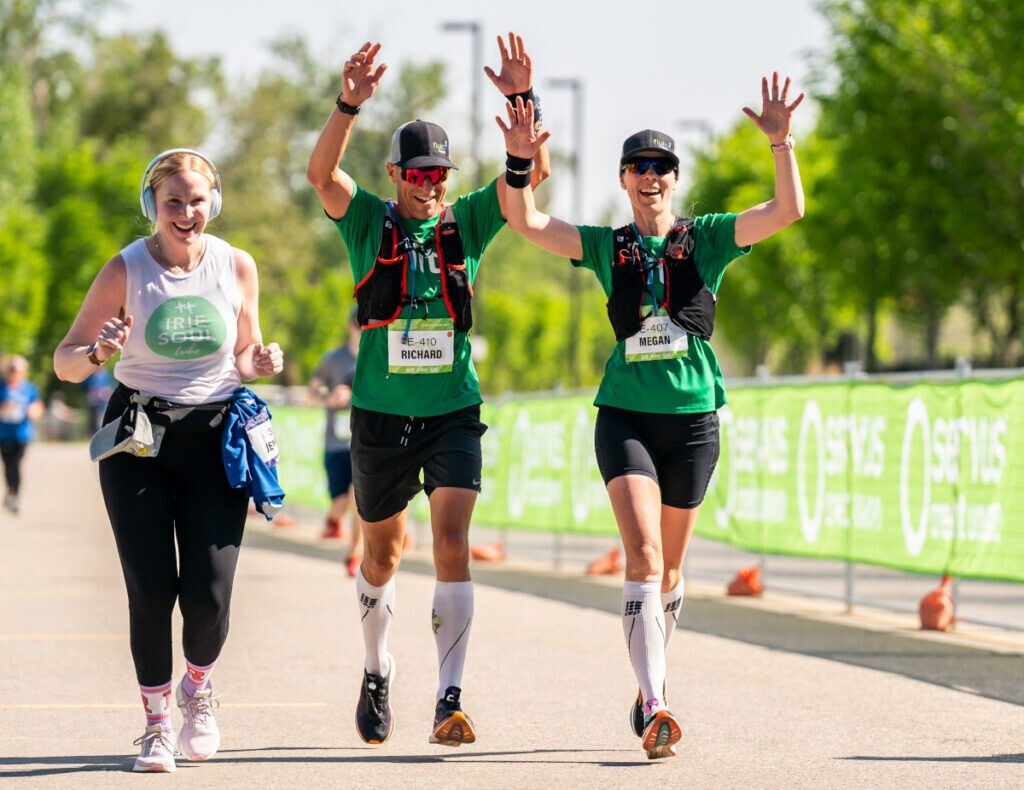
Sunday’s event wasn’t the first time the MacDonalds locked in a world record at the Calgary Marathon. In 2017, Megan was part of the 10-member Team MitoCanada who set the Guinness World Record for the fastest marathon run by a female team linked together (3:27:58). That same year, Rich was part of the 112-person team who set the record for the most people to finish a marathon linked together.
Sunday’s event wasn’t just a marathon to remember for the MacDonalds, but for a race day that continues to build its post-pandemic momentum, said John Bird, interim executive director with Run Calgary. “Today’s race went so well, and we were delighted to welcome more than 9,200 people to the finish line,” said Bird. “We had our highest attendance since the pandemic, raised more than $475,000 for charity, and brought together the running community in a great celebration of health and wellness. I’d like to thank the 1,100 plus volunteers who gave their time to help others achieve their goals today.”

The men’s marathon was won by Lance Risseeuw in 2:36:04, and the women’s event by Maria Zambrano, in 2:48:02. Both winners are from Calgary.
In addition to the marathon, which drew close to 1,200 participants, the race day included 50-km, half-marathon, 10-km, and 5-km events, as well as a 1.2-km “kids marathon.”
In total, 93 charities benefited from donations collected through this year’s marathon, with $475,000 being collected as part of the Servus Charity Challenge. The event has raised $9.7 million for charities over the last 12 years.
(05/30/2023) ⚡AMPby Paul Baswick
Scotiabank Calgary Marathon
This is Canada's oldest marathon, Canadians and runners from around the world love this race, consistently voting in the Best Road Race in Alberta. There is a 50k, full-marathon, half-marathon, 10k, 5k family walk/run and kids races. You expect the route to be packed with participants and enthusiastic spectators. ...
more...400s for speed and endurance
You may assume that 400m repeats, 400s or ‘quarters’ as they are known in the US, are only for runners of the shorter distances, but that’s just not true, and whether you are a 5k or marathon runner the workouts can be tailored to your goals.
Your local track is 400m in length so doing one lap is an easy distance to utilise in training. What you need to understand whether a runner or coach is that this particular repetition distance can be used in multiple different ways and achieve multiple different stimuli.

Many experienced runners will have the standard 400m repeats integrated into their training programmes and in this article, I will outline different variations that can be undertaken using this popular distance.
Please note all workouts below are samples and should always be tailored to the individual depending on their target race distance, physiological profile, training and injury history.
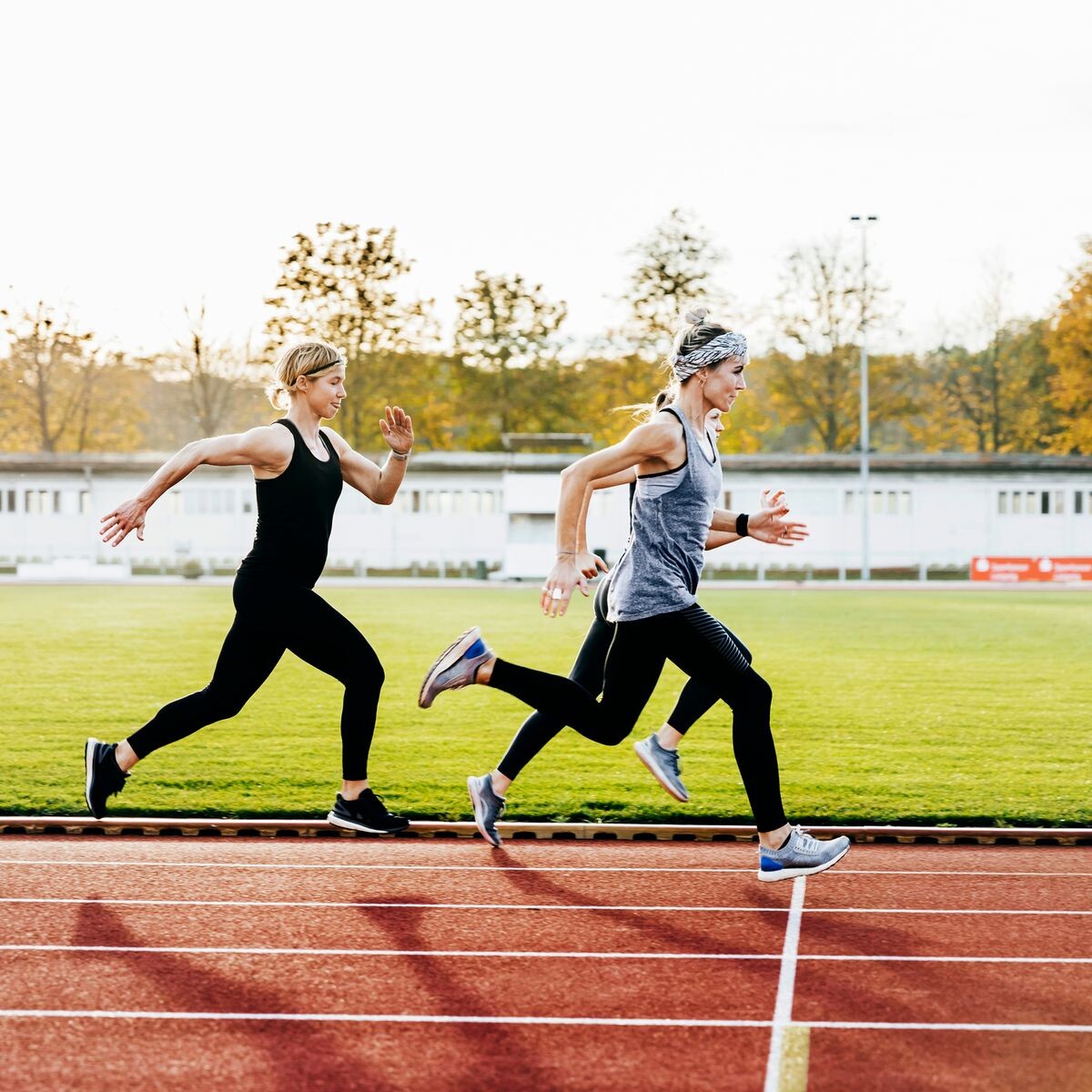
Samples workouts
800m pace: 4x400m with 5-6 mins walk recovery OR 2 sets of (2x400m) with 90 secs walk recovery between reps and 10 mins walk between sets.
1500m pace: 6-10x400m with 90 secs-2 mins walk/jog recovery OR 2-3 sets of 3x400m with 75 secs walk/jog recovery between reps and 3 mins walk/jog recovery between sets.
3000m pace: 8-12x400m with 75-90 secs walk/jog recovery OR 2-3 sets of (4x400m) with 45-60 secs jog recovery between reps and 3 mins jog recovery between sets.
5000m pace: 12-16x400m with 60 secs jog recovery between reps OR 3-5 sets of (4x400m) with 45 secs jog recovery between reps and 3 mins jog between sets.
10,000m pace: 20-25x400m with 45 secs jog recovery OR 2 sets of (10-14x400m) with 30-45 secs jog recovery between reps and 3 mins jog between sets
Half marathon pace: 30-35x400m with 30 secs jog recovery between reps OR 2 sets of (15-20x400m) with 15-30 secs jog recovery between reps and 2-3 mins jog between sets.
In the examples above you can see 400m intervals can be used with a variety of different paces from 800m pace all the way to half marathon pace.
What essentially changes along with pace is the volume of the workout and the recovery between reps and sets. By doing this you change the stimulus achieved from the given workout and this holds true for using any distances 400m/600m/800m/1000m/1200m/1600m/2000m etc.
Think about what you are trying to achieve from the workout, what stimulus you are looking for and then look at three main areas; pace, volume and recovery.
With regards to the recovery think about whether you would like this to be walking, shuffle jogging or a float jog recovery where we keep the recovery part steady.
Different ends of the scale
When we talk about achieving a certain stimulus lets look at two examples on the opposite end of the pace scale.
The 4x400m workout at 800m pace produces very high lactate levels and heart rates near max levels. It is very physically and mentally demanding and it produces an anaerobic stimulus.
The 400m workouts at half marathon pace, however, produce far lower lactate levels, heart rate is lower, but it helps improve lactate shuttling and it is a total aerobic stimulus.
Also, consider that 400m reps can be used in many other ways other than just as a stand-alone workout. They can be tagged on to the end of a workout or used within workouts.
There is no one way to use them and mixing them with other paces works quite well.
Example workouts for experienced runners
Tempo run and 400s: 10 min tempo effort, 4x400m @ 10km pace, 4 min tempo effort, 4x400m @ 10km pace, 10 min tempo effort
Uphill tempo and 400s: 5 min steady state uphill effort, 4x400m @ 5km-10km pace, 5 min steady state effort uphill, 4x400m @ 5km-10km pace
Power hills and 400s: 4-6x400m @ 10km pace, 4×10 secs short power hills, 4-6x400m @ 10km pace, 4×10 secs short power hills, 4-6x400m @ 10km pace
400s at descending paces: 4-5x400m @ HM Pace, 4-5x400m @ 10km pace, 4-5x400m @ 5km pace, 4-5x400m @ 3km pace
Continuous tempo and 400s: 20-30 minute continuous Tempo followed by 4x400m on a track descending paces from 10km down to 3km pace
Mile reps and 400s: 1 Mile @ 10km pace, 4x400m @ 5km pace x 2-4 sets.
The examples above are just a way of showing how you can incorporate the use of 400m intervals in a mixture of different workouts. The key message here is they are flexible and can be altered to suit your training distance and goals.
Runners and coaches just need to experiment, use their imagination and keep changing up their workout designs to find exactly what works for your desired targets.
A key message again to reinforce is that what you do with the volume of the workout, the pace of the rep and the recovery between reps/sets dictates the overall load and stimulus achieved.
It’s about trial and error sometimes, have fun with the design of your workouts and don’t be afraid to try something new.
(05/29/2023) ⚡AMPby Steven Macklin
Ben Schneiderman wins men’s citizen race title at 43rd Bolder Boulder
Leading up to the 43rd running of the Bolder Boulder, Ben Schneiderman didn’t feel great about a lot of his workouts.
He felt great on race day, however.
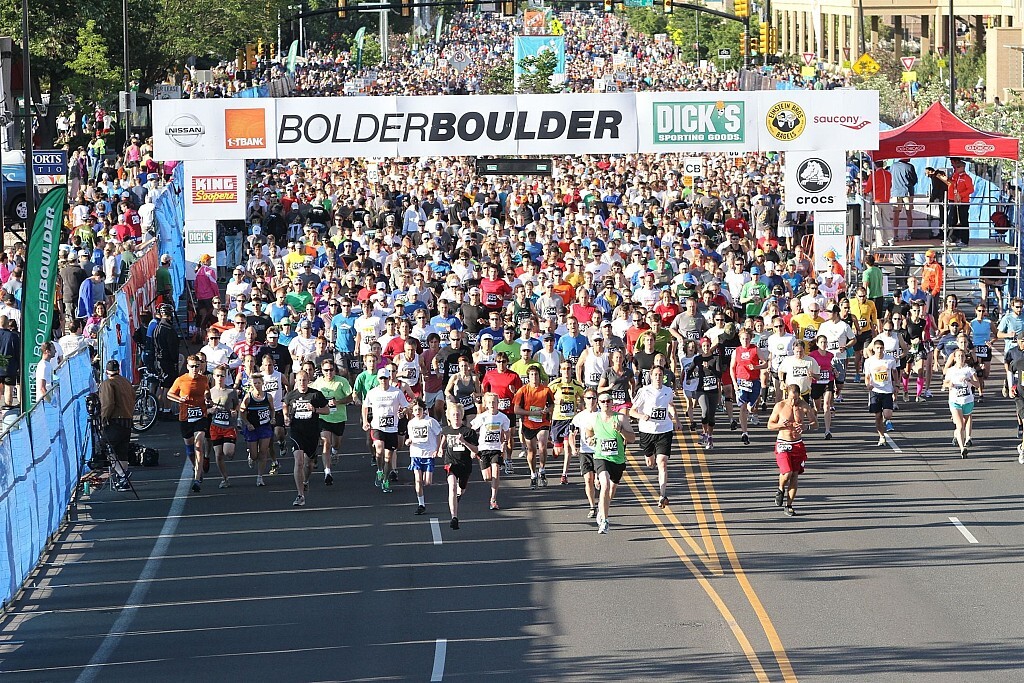
On Monday, Schneiderman won the men’s citizen’s race at the Bolder Boulder, using a strong final push to finish in 31 minutes, 1.88 seconds.
“It’s pretty exciting,” Schneiderman said. “I qualified for the Olympic trials in the marathon in December at the California International Marathon, so I kind of decided to take a break from the full marathon and run a couple of shorter races after that before the fall. So I kind of picked out Bolder Boulder because it’s local and it’s a great race. It feels good.”
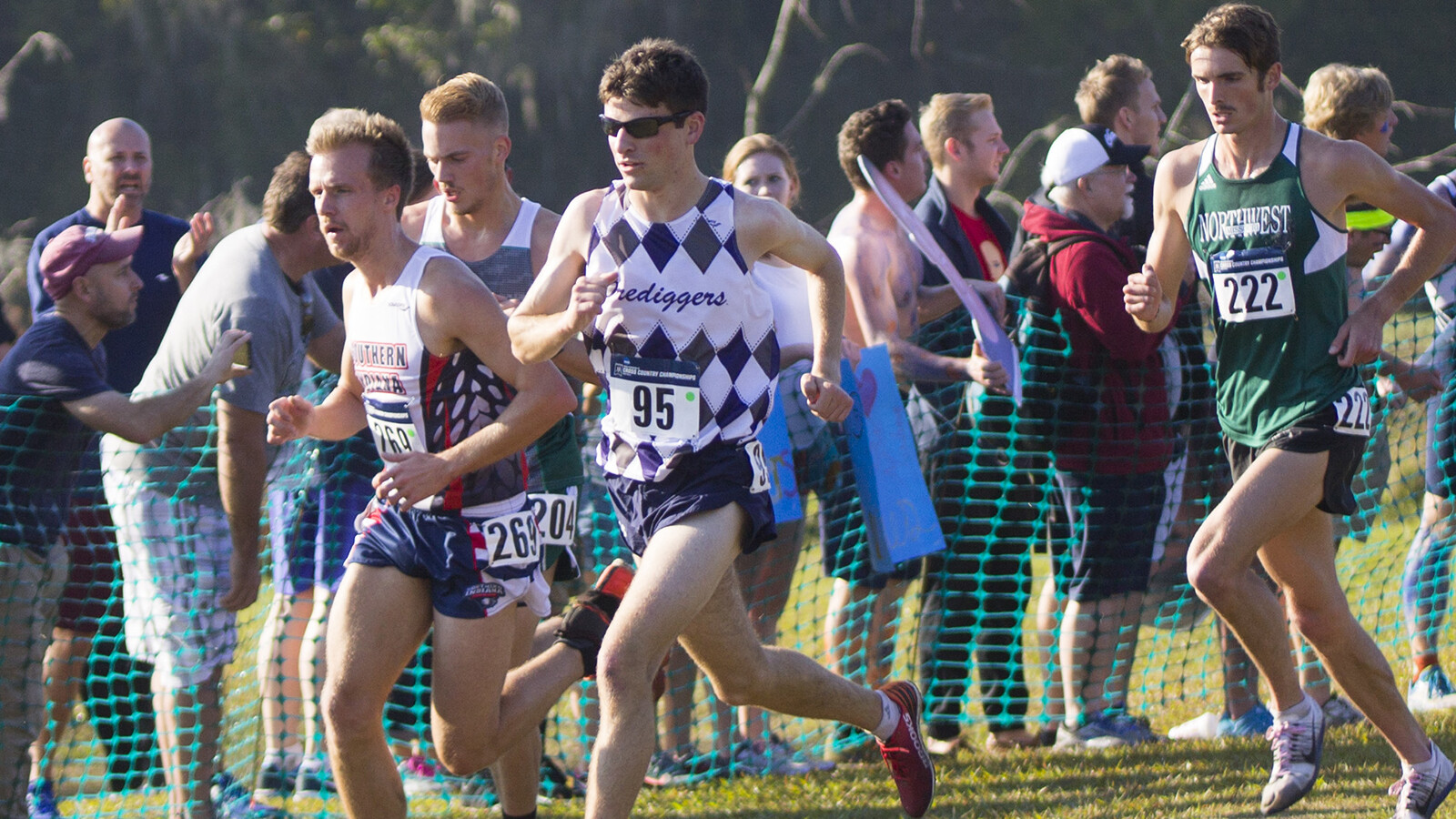
Josh Romine was second, in 31:06.98, while Max Sannes was third, in 31:17.50.
Schneiderman was in third for much of the race, but surged past Romine and Sannes on the final uphill stretch.
“I wanted to kind of go after those front two,” he said. “They were ahead of me for most of the race, but I thought I could maybe get them on the hill there at the end, which is how it played out.
“I’m strong on hills. The uphill final mile definitely helped me. Usually on those downhill stretches is where it seemed like they would pull away a little bit and then I would get back on the uphill a little bit.”
Schneiderman grew up in Colorado Springs and graduated from Liberty High School in 2014, lettering all four years in track and cross country. He then ran at Colorado School of Mines, where he earned several All-RMAC honors.
Schneiderman, who graduated from Mines with his PhD in December, had run in the Bolder Boulder a couple of times before, but this was his first time since 2015.
“It was fun,” he said. “I never finished that far up before. When I was in high school, I was (around 40th place) usually. It was a good race. Good day for it.”
Also running Monday was Schneiderman’s brother, Noah, who finished in 35:23, as well as former Mines teammate Jake Mitchem, who was fourth (31:20.16).
“He just told me he was going to do it like a couple weeks ago, so I was like it would be cool to work together, which we did for like the first half of the race or so,” Schneiderman said.
In the second half, his training paid off as he claimed his first win.
“This is encouraging,” said Schneiderman, who will compete in the Olympic trials in February. “I wasn’t really sure how fit I was coming into this because I just had a lot of sort of flat-feeling workouts during this training block, but it felt really nice to come out here and feel good and feel like I could put myself in it.”
(05/29/2023) ⚡AMPby Brian Howell
BOLDER BOULDER
In 1979 we dreamt of attracting a few hundred of our friends to race though the streets of Boulder, Colorado to celebrate Memorial Day with our families. Fast forward almost 40 years and the Bolder BOULDER has grown to become one of the largest and most highly acclaimed 10K’s in the world. Almost 1.2 million runners, joggers, walkers and spectators...
more...Eilish McColgan says her recent injury makes World Championship gold less likely
Eilish McColgan says winning gold at this summer's World Championships is a "pipe dream" and she is instead focusing on breaking the 30-minute barrier in the 10,000m.
The 32-year-old Scot is recovering from the knee injury that forced her to pull out of the London Marathon last month.

She returned to light training at the weekend and thinks gold in Budapest in August is now less likely.
"That would exceed my goals right now because of the setbacks," she said.
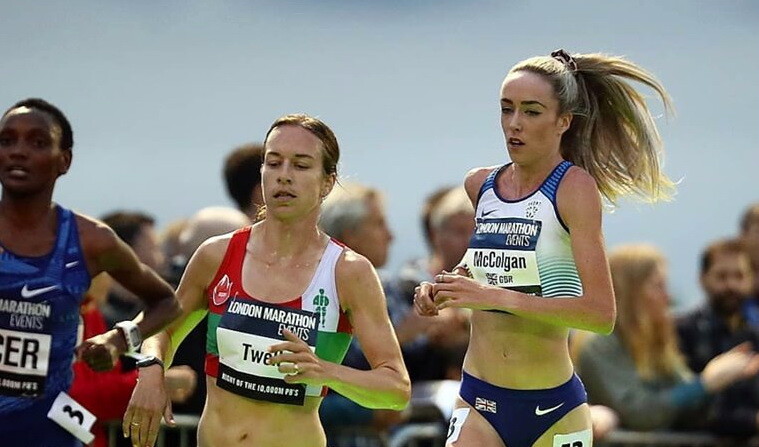
"I think it would be a pipe dream right now, but I am not going to set myself any real limits.
"To be in Budapest and be at the start and healthy would be a big achievement to be honest.
McColgan won 10,000m gold in the European Championships in 2021 and then at the Commonwealth Games 12 months later, before creating history in March of this year by setting a new British record of 30:00.86.
"My big thing this year would be to break the 30 minutes in the 10k," she added.
"I think there are only 12 women in the world who have done that - it would be a big achievement for me.
"Earlier in the year, I had no doubt I could break 30 minutes. Now there is a little bit of a doubt because I haven't been able to train for the last so many weeks."
The one bonus for McColgan is that her knee problem did not require surgery and now she can concentrate on completing her rehab and improving her best ever time.
"To be in the top six fastest women in the world - that would be a great achievement," she said.
(05/29/2023) ⚡AMPby BBC Sport
World Athletics Championships Budapest 23
From August 19-27, 2023, Budapest will host the world's third largest sporting event, the World Athletics Championships. It is the largest sporting event in the history of Hungary, attended by athletes from more than 200 countries, whose news will reach more than one billion people. Athletics is the foundation of all sports. It represents strength, speed, dexterity and endurance, the...
more...Eliud Kipchoge routes for girl-child career and education
Double Olympic marathon champion Eliud Kipchoge is rooting for the empowerment of girl-child both in sports and education.
This, he said, will equip the girls with more knowledge, sensitize them on the developments within their bodies as they grow and make them develop self-respect.
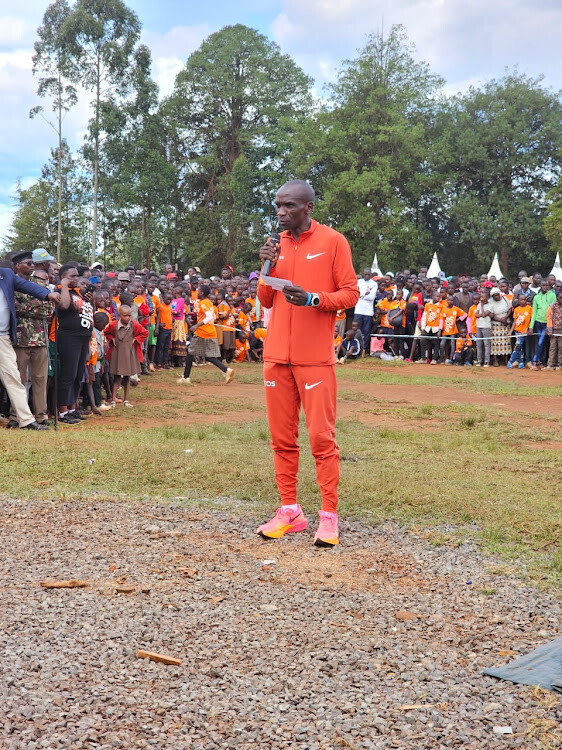
The world marathon record holder added that fitness is key to establishing talent.
“It is proper to establish their (girl) talent, whether in athletics or other fields to allow them to thrive. Fitness is paramount. The fittest girl is always bright," Kipchoge, a four-time London marathon champion, was speaking in Kapsisiywa, Nandi County during the first edition of Kapsisiywa Girl Run on Saturday.

"It doesn't mean the boy-child has been overlooked, we are dedicated to girls because they are vulnerable due to the menstrual cycle. Sanitary pads are rarely used in villages. People are still using mattresses, clothes among others and we want to sensitize them and tell them to use the clean method," he added.
The next phase, he said, will target the boys who equally need to be informed.
“Our main aim is passing education to everybody. We want people to develop self-awareness”.
He urged parents and guardians to give an opportunity to the girls who have shown interest in sports especially athletics which has helped improve the living standards of many families.
“Parents and guardians must play a leading role in ensuring that the girls get much-needed education and develop their careers. We have to set a good example and that will ensure that all girls finish high school before making the right choice in their lives,” said Kipchoge, the three-time Berlin marathon champion.
(05/29/2023) ⚡AMPby Emmanuel Sabuni
Rejeanne Fairhead sets new 5k record for 95 plus
Canada’s Rejeanne Fairhead can now call herself the fastest 95+ woman in the world. On Saturday afternoon in 30 C weather, the 96-year-old unofficially destroyed the women’s 95+ world record, running 51:09 for five kilometres at the Ottawa 5K.
At Friday’s press conference, she said her secret to running fast is keeping busy. “I try to be active in all sports, and take care of myself and be happy,” said Fairhead.
Fairhead received honours from the race announcers before and after the race for her attempt and new accomplishment. She is the eldest participant of the Ottawa Race Weekend for the second consecutive year.
The women’s 95+ world record Fairhead beat was that of American Betty Lindberg, who ran 55:48 at the 2022 Atlanta Peachtree 5K.
(05/28/2023) ⚡AMPGerman sprinter runs 9.51 seconds, discovers clock was broken
Those in attendance at the Puma Fast Arms, Fast Legs track meet on Wednesday in Wetzlar, Germany, were in shock when German sprinter Milo Skupin-Alfa stopped the clock at 9.51 seconds in heat two of the 100m qualifying round. The timing clock showed Skupin-Alfa ran the fastest 100m time in history, but moments later it was discovered to be broken.
Germany is well known for its fast tracks–it’s where the great Usain Bolt set his 100m world record of 9.58 seconds at the 2009 World Championships in Berlin. But Skupin-Alfa will have to go back to the drawing board to run 9.51 seconds.

The time would have been a massive result for the 24-year-old, Skupin-Alfa, who held a personal best of 10.23 seconds heading into the race. Meet officials managed to get the clock fixed shortly after and credited him with the heat win and a time of 10.36 seconds (+2.4 m/s).
Only one sprinter in history has, unofficially, run faster than Bolt’s world record. In 2011 on a Japanese TV show, U.S. sprinter Justin Gatlin ran 9.45 seconds for 100m with the help of several massive wind fans gusting +20.0 m/s tailwinds. The 2004 Olympic 100m champion had a large industrial fan behind his starting blocks and four wind fans strategically placed in the lanes beside him.
Even though Skupin-Alfa did not run a personal best or world record in Wetzlar, he has a promising career ahead of him.
(05/28/2023) ⚡AMPby Running Magazine
10 Reasons to Start Following Track and Field This Year
The 2023 season should be full of record-breaking performances from the sport’s biggest stars. Here are the most important things to know.
Track is back, and if the results from the indoor season and early outdoor meets are any indication, it should be another year of eye-popping results around 400-meter ovals this summer.

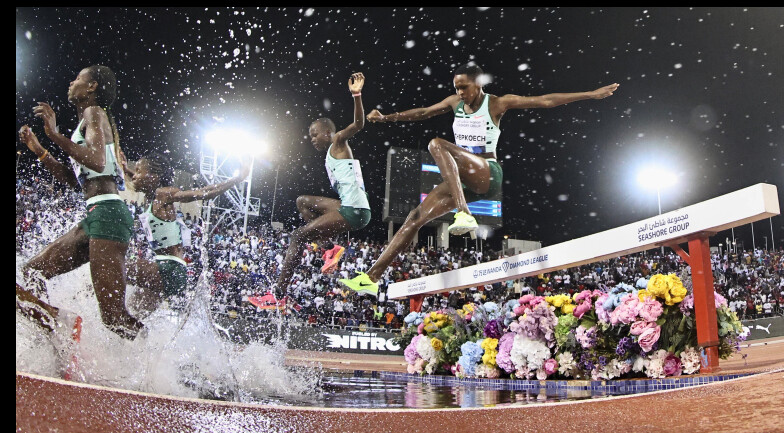
Why is track and field relevant to the average recreational runner?
Perhaps you’re running some of the same distances in your training and racing. Or maybe you have a connection to some of the events from your youth, days in gym class or on the playground. From a human performance perspective, no sport showcases the all-out speed, red-line endurance, max power, dynamic agility, and meticulous bodily control as track and field does.
Here’s a primer on the most awe-inspiring athletes and events of this summer’s track season. Because, come on: with a sport that includes events as multifaceted as the pole vault, as primal as the shot put, and as wild as the 3,000-meter steeplechase—a 1.8-mile race with 28 fixed barriers to hurdle and seven water pits to jump—what’s not to like?
One of the many things that makes track and field so special is that it’s one of the most diverse sports on the planet, both culturally and athletically.
Last summer, athletes from a record 29 different countries earned medals in the 25 different running, jumping, and throwing events at the World Athletics Championships in Eugene, Oregon.
At the highest level, there are athletes of all shapes and sizes from every culture and socioeconomic background. While there certainly are racial and cultural stereotypes that need dissolving and vast inequality among competing countries, from a performance point of view the sport is largely meritocratic, based on the time or distance achieved in a given competition.
Watching American Sydney McLaughlin-Levrone masterfully win the 400-meter hurdles in a world-record time last summer in front of a deafening crowd at Hayward Field in Eugene was a riveting experience. It was vastly different than watching Grenada’s Anderson Peters win the javelin world title with a career-best throw of 90.54 meters on his final attempt to beat India’s Neeraj Chopra, but both had edge-of-your-seat excitement, athletic excellence, and cultural significance.
One of the knocks against track and field in recent years is that it hasn’t done enough to attract casual fans the way professional football, basketball, hockey, and soccer have. Following the On Track Fest, the USATF Los Angeles Grand Prix on May 26-27 in Los Angeles is trying to up the ante by combining a mix of elite-level competition, an interactive fan festival, and top-tier musical performances.
Billed as the one of the deepest track meets ever held on U.S. soil, it will feature a star-studded 400-meter face-off featuring Americans Michael Norman, the reigning world champion, and Kirani James, a three-time Olympic medalist from Grenada, and a women’s 100-meter hurdles clash with world champion Tobi Amusan of Nigeria, Olympic silver medalist Keni Harrison of the U.S., and Olympic gold medalist Jasmine Camacho-Quinn of Puerto Rico.
Saturday’s action will be broadcast live on NBC Sports from 4:30 P.M. to 6 P.M. ET and be followed by a concert event called the Legends Jam, which will include appearances from some legendary athletes and be headlined by Grammy-winning singer Judith Hill.
American sprint sensation Sha’Carri Richardson will be racing the 100-meter dash at the USATF Los Angeles Grand Prix. You probably remember her for her perceived failures more than the astounding times she’s actually achieved on the track.
Two years ago, the sprinter from Dallas blew away the field in the 100-meter dash at the U.S. Olympic Trials with a 10.86 effort, but then she was famously suspended after testing positive for cannabis (which is on the World Anti-Doping Agency’s list of banned substances) and missed the Tokyo Olympics as a result. (She admitted using the drug to cope with the pressure of qualifying for the Olympics while also mourning the recent death of her biological mother.)
Then last year, despite strong early season performances, Richardson failed to make the finals of the 100-meter or 200-meter at the U.S. championships, so she missed out on running in the first world championships held on American soil.
This year, the 23-year-old sprinter appears to be locked in and better than ever, posting a world-leading 10.76 100-meter time on May 5 in Doha (she also ran an eye-popping 10.57 with an over-the-limit tailwind on April 9 in Florida) and posted the second-fastest time in the 200-meter (22.07) on May 13 at a meet in Kenya.
If she keeps it all together, expect Richardson to finally contend with elite Jamaican sprinters Shericka Jackson and Shelly-Ann Fraser-Pryce in the 100 and 4×100-meter relay in August at the World Athletics Championships in Budapest, Hungary.
A few years ago, American sprinter Fred Kerley was on his way to becoming one of the world’s best 400-meter runners. But he wanted more than that. What he really had his heart set on was becoming the world’s fastest man, a moniker that goes with the most dominant sprinter in the 100-meter dash.
Ignoring doubters, Kerley retooled his training and earned the silver medal in the 100-meter at the Tokyo Olympics (.04 seconds behind Italy’s Marcell Jacobs) and then continued his ascent last year by winning the U.S. championships (in 9.76, the sixth-fastest time in history) and world championships (9.86).
The 28-year-old from San Antonio, Texas, also became one of just two other runners (along with American Michael Norman and South African Wayde van Niekerk) to ever run sub-10 seconds in the 100-meter, sub-20 seconds in the 200-meter, and sub-44 seconds in the 400-meter. So far this year, Kerley has two of the four fastest 100-meter times of the season, including a speedy 9.88 on May 21 in Japan.
After trading barbs on social media this spring, Kerley and Jacobs are expected to face off in an epic 100-meter showdown on May 28 at a Diamond League meet in Rabat, Morocco, marking the first time the Olympic gold medalist and the world champion in the men’s 100m face off since the 2012 Olympic final, when Jamaican Usain Bolt beat countryman Yohan Blake. American Trayvon Bromell, the silver medalist at last year’s world championships, is also in the field, so it should be an extraordinary tilt.
If you’re a gambler, bet on Kerley to win that one and eventually get close to Bolt’s 9.58 world record. (To do so, he’ll be running faster than 26 miles per hour!) But don’t count out Kenya’s Ferdinand Omanyala, the early world leader (9.84), or fellow American sub-9.9 guys Bromell, Norman, Christian Coleman, and Noah Lyles at the 2023 World Athletics Championships on August 20, in Budapest. Depending on which three Americans join Kerley (who has an automatic qualifier) at the world championships, it’s actually quite likely the U.S. could sweep the top four spots in the 100 in Budapest.
If you’ve ever wanted to see the world’s top track and field stars competing live in the U.S., this is the year to do it. The May 26-27 USATF Los Angeles Grand Prix meet and June 3-4 Portland Track Festival are part of what might be the mosst compelling outdoor track season ever held on U.S. soil.
If you’re looking for an athlete to marvel at, start with Sydney McLaughlin-Levrone, the gold medalist in the 400-meter hurdles at the Olympics in 2021 and World Athletics Championships last summer. She’s been one of the sport’s rising stars since she was a teenager and yet she’s only 23. Her trajectory is still rising—especially since she moved to Los Angeles to train under coach Bob Kersee. Driven by her strong faith, McLaughlin-Levrone is the personification of hard work, grace and competitiveness.
This year she’ll temporarily step away from her primary event to show off her pure sprinting prowess when she opens her season in a “flat” 400-meter race at the Diamond League meet in Paris on June 9. Her personal best in the 400-meter is 50.07 seconds, set when she was a freshman at the University of Kentucky, but she clocked a speedy 50.68 while running over hurdles, en route to a world-record setting win at last summer’s world championships.
Her best 400-meter split as part of a 4×400-meter relay is 47.91, so it’s within reason to think she could be one of several runners to challenge the long-standing world record of 47.60 set in 1985 by East German Marita Koch. Because McLaughlin-Levrone has an automatic qualifier to the world championships in the 400-meter hurdles, she will likely run the open 400-meter at the U.S. championships and decide after the meet which one she’ll focus on.
American 800-meter ace Athing Mu has looked unbeatable for the past several years as she won Olympic gold in the event at the Tokyo Olympics and last year’s world championships. In fact, she has been unbeatable, having won 13 straight races since she dropped out of a mile race at the Millrose Games in January 2022. Going back to 2020 (when she was a senior in high school) and 2021 (during her one season at Texas A&M), she’s finished first in 51 of her past 53 races (relays included), with her only loss being a narrow runner-up finish to Kaelin Roberts in the 400-meter at the 2021 NCAA indoor championships.
Mu, who is also coached by Kersee and trains with McLaughlin-Levrone, seems to be the most likely athlete to challenge the women’s 800-meter world record of 1:53.28, set in 1983 by the Czech Republic’s Jarmila Kratochvílová. It’s the longest standing record in track and field, and only two runners have come within a second of it in the past 15 years. Her personal best of 1:55.04 is an American record and the eighth-fastest time in history. She’s still only 20 years old, so she has many years to keep improving and other historic opportunities ahead of her.
Mu said earlier this year she’d like to try a 400-800-meter double at an Olympics or world championships if the schedule permits—it’s only been done once successfully by Cuba’s Alberto Juantorena at the 1976 Games—but her coach has said she might attempt a 800-1,500-meter double next year at the Paris Olympics.
This year, Mu will run the 1,500 meters at the USATF Championships in July, but will likely defend her 800-meter title at the world championships in Budapest, as well as potentially running on the U.S. women’s 4×400-meter relay and the mixed-gender 4×400-meter relay (with McLaughlin-Levrone) for an opportunity to win three gold medals in a single championships.
With apologies to quarterback extraordinaire Patrick Mahomes, gymnastics all-arounder Simone Biles, and skiing superstar Mikela Shiffrin, pole vaulter Armand Duplantis just might be the most dynamically talented athlete in the world. That’s because he’s the world’s most dominant athlete (and has set six world records) in arguably the most demanding discipline, not only in track and field but quite possibly in any sport. No sport discipline involves such a dynamic combination of speed, power, precision and agility, and Duplantis, who is only 23, is already the greatest of all-time.
Prove me wrong or watch him set his latest world record (6.22 meters or 20 feet, 5 inches) at an indoor meet on February 25 in Clermont-Ferrand, France. That’s the equivalent of vaulting onto the roof of a two-story building, and in his case, often with room to spare.
Duplantis, who grew up in Lafayette, Louisiana, to athletic parents with Swedish and Finnish heritage, represents Sweden in international competitions. He started pole vaulting at age three, set his first of 11 age-group world-best marks at age seven, and won an NCAA title in 2019 as a freshman competing for LSU before turning pro.
All indications are that North Carolina State junior Katelyn Tuohy could become the next American running star. All she has done since she was young is win races and break records.
After winning the NCAA outdoor 5,000-meter a year ago, she won the NCAA cross country title in November. During the indoor track season this past winter, she set a new collegiate mile record (4:24.26) and won both the 3,000-meter and 5,000-meter title at the NCAA indoor championships in March. On May 7, the 21-year-old from Thiells, New York, broke the NCAA outdoor 5,000-meter record by 17 seconds, clocking 15:03.12 at the Sound Running On Track Fest.
Tuohy will be running both the 1,500-meter and 5,000-meter at the NCAA East Regional May 24-27 in Jacksonville, Florida, with the hopes of eventually advancing to the finals of both events at the June 7-10 NCAA Division I championship meet in Austin, Texas.
University of Arkansas junior Britton Wilson is a top collegiate star who is ready for prime time at the pro level. She won the 400-meter in a world-leading and collegiate record time of 49.13 in mid-May at the SEC Championships, where she also won the 400-meter hurdles (53.23) in a world-leading time. The 22-year-old from Richmond, Virginia, was the runner-up in the 400-meter hurdles at last year’s U.S. championships and fifth in the world championships, and could contend for a spot on Team USA in either event at the July 6-9 U.S. championships.
Kerley and Lyles are expected to square off in a 200-meter race at the USATF New York Grand Prix meet on June 24 at Icahn Stadium on Randall’s Island in New York City. There are also two high-level Puma American Track League meets in Tennessee—the Music City Track Carnival June 2 in Nashville and the Ed Murphey Classic August 4-5 in Memphis—and two Under Armour Sunset Tour meets organized by Sound Running on July 22 in Los Angeles and July 29 in Baltimore.
The best U.S. meet of the year, though, will be the USATF Outdoor Championships held July 6-9 in Eugene, Oregon, where American athletes will be vying for top-three finishes to earn a chance to compete for Team USA at the 2023 World Athletics Championships August 19-27 in Budapest.
The U.S. season will culminate with the September 16-17 Pre Classic in Eugene, Oregon, a two two-day meet that will double as the finals of the international Diamond League circuit and should include many of the top athletes who will be representing their countries in next summer’s Paris Olympics. (And if you want to see the country’s top high school athletes run unfathomable times for teenagers, check out the Brooks PR Invitational on June 14 in Seattle, Washington.)
At the June 2 Diamond League meet in Rome, Italy, the men’s field in the 5,000-meter run will have what might be the fastest field ever assembled, with 13 runners who have personal best times of 12:59 or faster.
The field will be headlined by Joshua Cheptegei of Uganda, who lowered the world record to 12:35.36 in Monaco three years ago. (That’s a pace of 4:03 per mile!). But it will also include Kenya’s Jacob Krop (12:45.71) and Nicholas Kipkorir (12:46.33), Ethiopia’s Yomif Kejelcha (12:46.79), American Grant Fisher (12:46.79), Canadian Mohammed Ahmed (12:47.20), and Guatemalan-American Luis Grijalva (13:02.94), among others. With a big prize purse at stake and pacesetters ramping up the speed from the start, it should be a race for the ages.
(05/28/2023) ⚡AMPby Outside Online
Natasha Wodak and Moh Ahmed win top spots at Canadian 10K Championships
More than 6,400 runners took part in the 2023 Ottawa 10K, presented by Otto’s Ottawa. The race attracted some of the best professional runners in Canada as well as thousands of participants from across the National Capital Region and the country. Once again this year, Ottawa played host to the Canadian 10K Championships.
In the women’s category, 41-year-old Natasha Wodak of Vancouver completed the 10K in 32:51, winning the Canadian Championship for the third year in a row. Wodak took an early lead, leaving Leslie Sexton to take 2nd place, in 33:13. Montreal’s Caroline Pomerleau captured 3rd in 33:16.
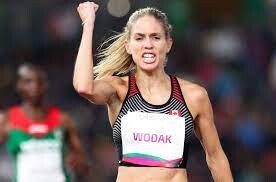
Mohammed Ahmed took first place in the men’s category, with a time of 28:21. For most of the race, the St. Catherine’s runner ran neck and neck with Cam Levins, of Black Creek, British Columbia. But Ahmed was able to pull away in the final stretch, leaving Levins to take second in a time of 28:39. Jeremy Coughler, of London, Ontario, took third place in 29:31.
Starting at Ottawa City Hall, the 10K course took runners along the famous Rideau Canal before heading across the Pretoria Bridge to an exciting finish in front of thousands of cheering spectators on Queen Elizabeth Drive. But the heat posed a challenge for many runners, as it was 28 degrees Celsius when the race started.
(05/28/2023) ⚡AMP
Galen Rupp’s high school 5000m record (13:37.91) stood for 18 years, 9 months, 6 days Connor Burns’ high school 5000m record (13:37.30) stood for 20 days. Lex Young went 13:34.96 last night in Los Angeles
It’s not every day that the 18th place finisher in a race steals the headlines but Newbury Park High School senior (CA) Lex Young highlighted the first night of the LA Grand Prix by breaking the U.S. high school 5000m record in 13:34.96. U.S. road 5K champion Abdihamid Nur won the race in a personal best of 13:05.17 and locked up his World Championship qualifying standard.
What you need to know:
– The previous high school record of 13:37.30 was set just three weeks ago by Connor Burns at Sound Running’s Track Fest. He broke Galen Rupp’s record of 13:37.91, which had stood since 2004.
– This should not come as much of a surprise after Young ran 13:43.95 last year. He didn’t have the best start to the year after finishing the 2022 cross-country season injured and then finishing third in the 5000m at New Balance Nationals Indoor in 14:00.64. Young has raced sparingly this outdoor season but took a big step forward with a 13:44.83 at the Bryan Clay Invitational on April 14. He called his shot and publicly announced he was going after Burns’ record in the leadup to Friday night’s race.
What told him in training that this was possible:
“The times kept on getting faster and the effort kept on feeling easier, where I knew with the training progressing in the same way, I’d be ready by now.”
On racing a majority of the race solo:
“I knew it would be pretty darn fast but I thought there would be more people in that 13:30-13:40 range. So when everyone was still together at a mile and I was dropping off, I had to take a couple of breaths and think, ‘I’m falling off the back but it’s not because I’m dying but if I keep on going with them, I don’t want to dig myself down into a deeper hole.’ They were going really fast. They went like 4:17, which is faster than I need to go for the record. I wanted to be a bit more conservative.”
On what it’s like being a high school star in the social media era, where performances are under a bigger microscope and open to more criticism:
“When I produce the content, it motivates other people to try and do what I’m doing. Ultimately that is so worth it. People come up to me and they tell me how much it’s inspired them and that means so much. No matter how much people will hate or people who comment and doubt, I will always keep producing the content because I know how much it can help people as other people’s content has helped me.”
Other highlights from the LA Grand Prix:
– Emily Lipari won the women’s 5000m in 15:08.87 for her second-best career performance. She closed with a 69.34-second final lap.
– Team New Balance Boston’s Emily Mackay won the women’s 1500m in a personal best of 4:07.03. She spoke about what she’s learned in her first full year as a pro.
– Kieran Lumb notched a personal best of 3:35.99 to outkick NACAC champion Eric Holt in the men’s 1500m. He discussed his decision to turn professional and sign with On.
– Under Armour Mission Run Baltimore’s Ahmed Jaziri won the men’s 3000m steeplechase in 8:17.64 – just barely missing the World Championships qualifying standard.
– Former Colorado Buff Madie Boreman took 10 seconds off her personal best to win the women’s steeplechase in 9:22.99. She is now being coached by Julie Benson and could be a contender for the U.S. team.
– Craig Engels won his first race of the year with a 1:47.32 in the men’s 800m. He took three months off due to a torn calf and Achilles injury.
– Laurie Barton of the Brooks Beasts won the women’s 800m in 2:02.54.
----
Chris Chavez launched CITIUS MAG in 2016 as a passion project while working full-time for Sports Illustrated. He covered the 2016 Olympics in Rio de Janeiro and grew his humble blog into a multi-pronged media company. He completed all six World Marathon Majors and is an aspiring sub-five-minute miler.
(05/27/2023) ⚡AMPby Citius Magazine


